P. Marlin February 2017
A historic landmark in New York City, Bowling Green Park is located at the end of Broadway in the financial district. Originally next to the site of the Dutch fort of New Amsterdam (1624), the land served as a cattle market and then a parade ground. In 1664, New Amsterdam passed to British control and in 1686, the British declared the land public property. In 1733, the land was leased to three local landlords, Peter Jay, John Chambers, and Peter Bayard, for one peppercorn a year to develop an English-style park (a bowling green is an area of closely mown grass on which the game of lawn bowling is played). Their promise was to create a park that would be "the delight of the Inhabitants of the City" and add to its "Beauty and Ornament"; the improvements were to include a "bowling green" with "walks therein."1 The fence, made of wrought iron, was installed around Bowling Green in 1771.
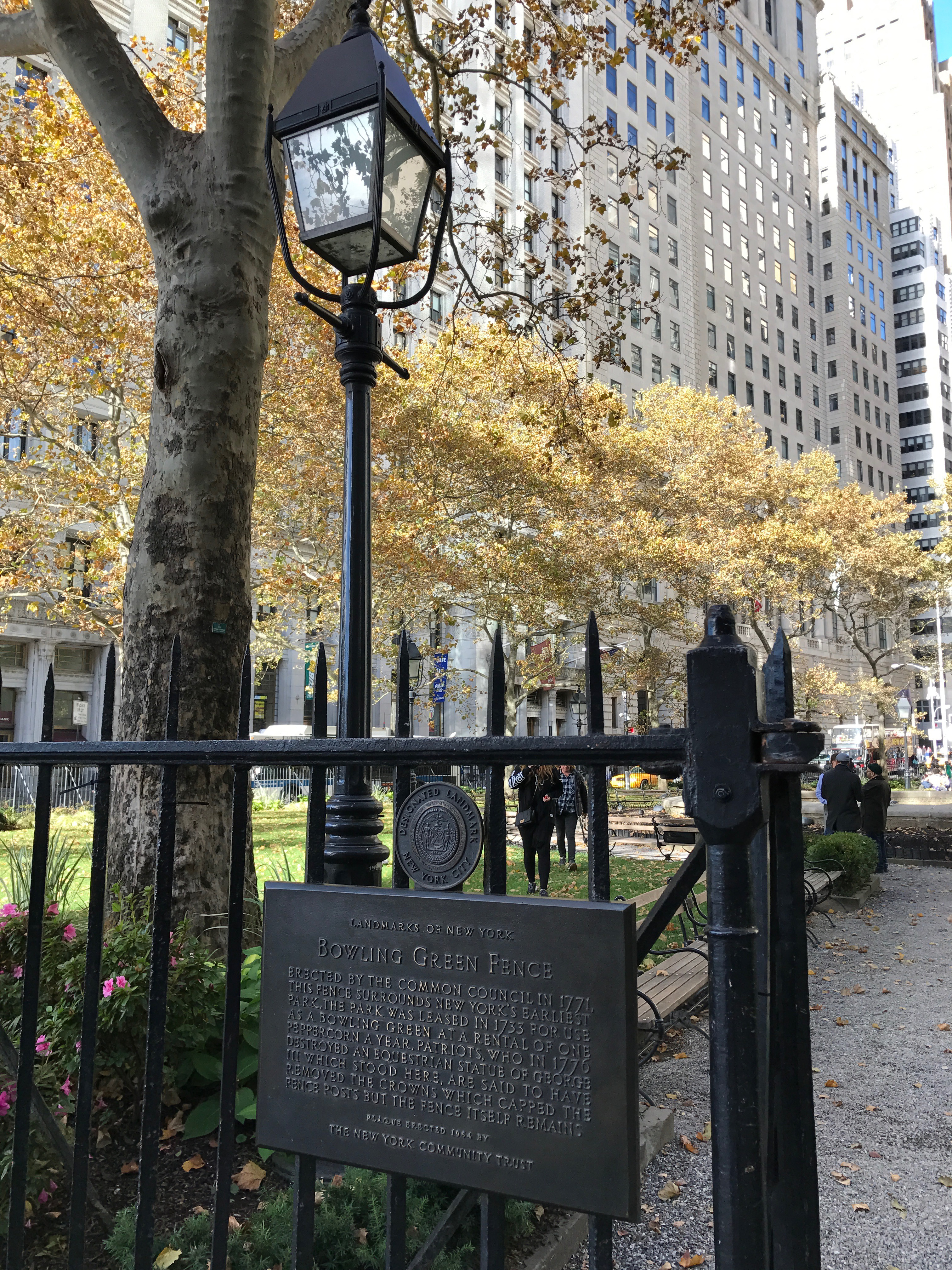
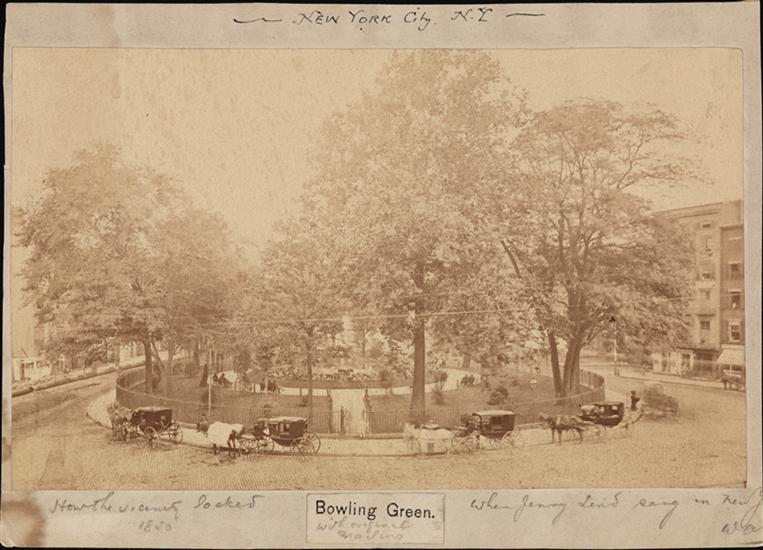 Bowling Green Park in 1850. Photo: Museum of the City of New York.
Bowling Green Park in 1850. Photo: Museum of the City of New York.
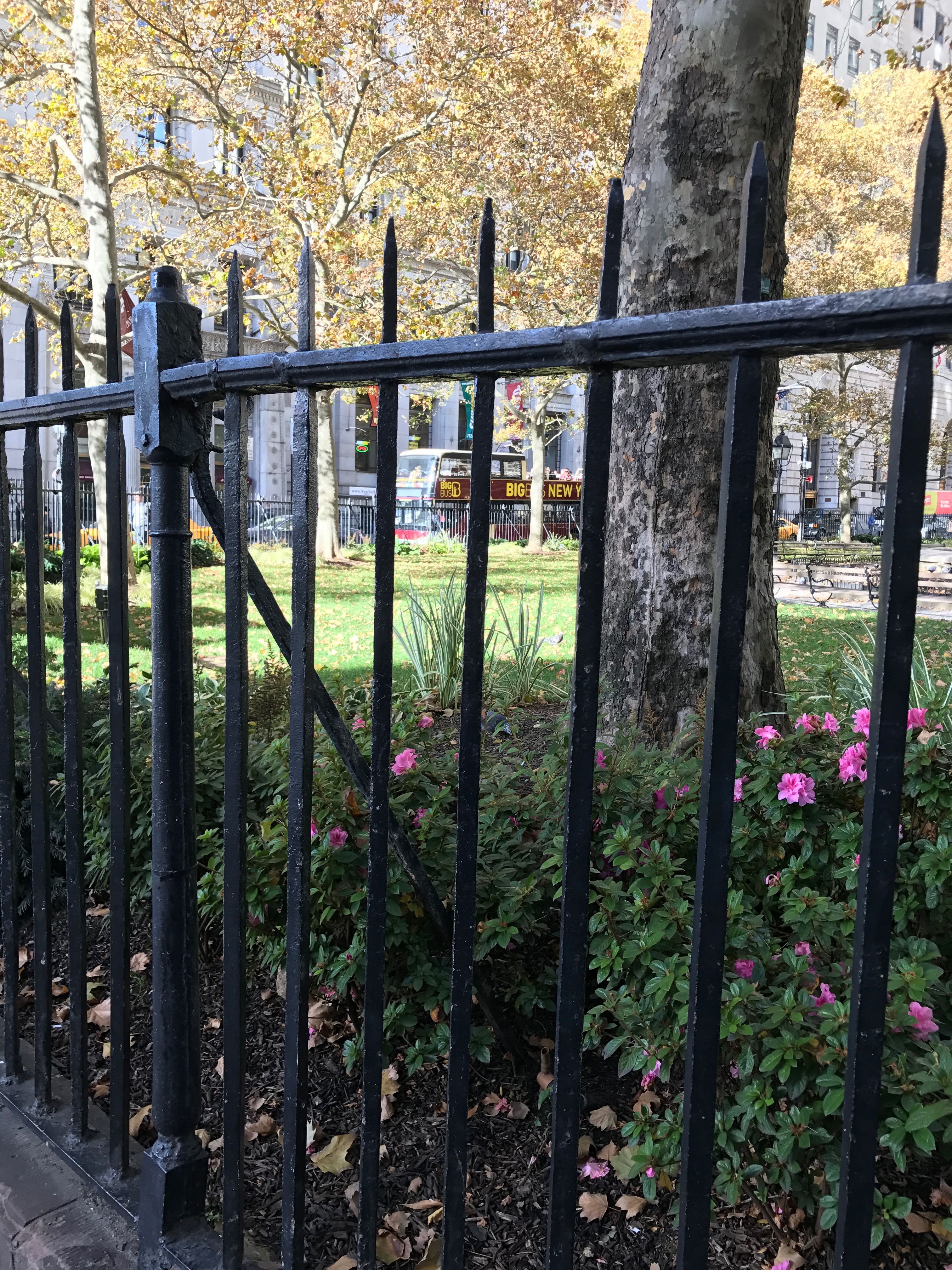
In 1770, the British erected an equestrian statue of King George III in the center of the park. In July 1776, after the Declaration of Independence was read and Thomas Jefferson cited 27 grievances against George III to Washington's troops and the citizens of New York, people rushed to the park and pulled down the statue of George III.2 According to legend, the people continued to vent their anger and sawed off the tops of the fence post finials, which had cast-iron crowns on them. Supposedly the saw marks are still visible on the fence today.
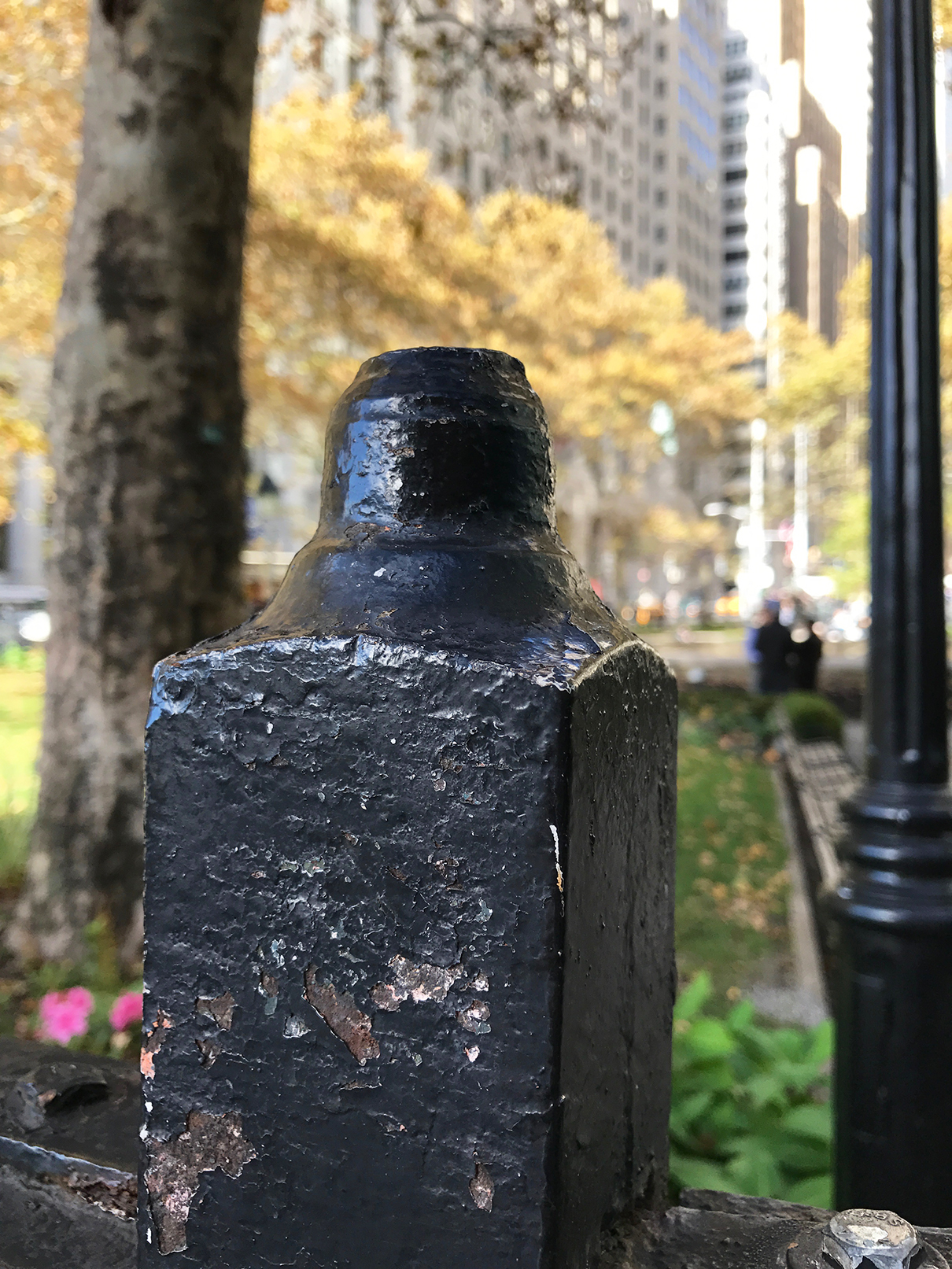 Where the crowns would have been sawed off.
Where the crowns would have been sawed off.
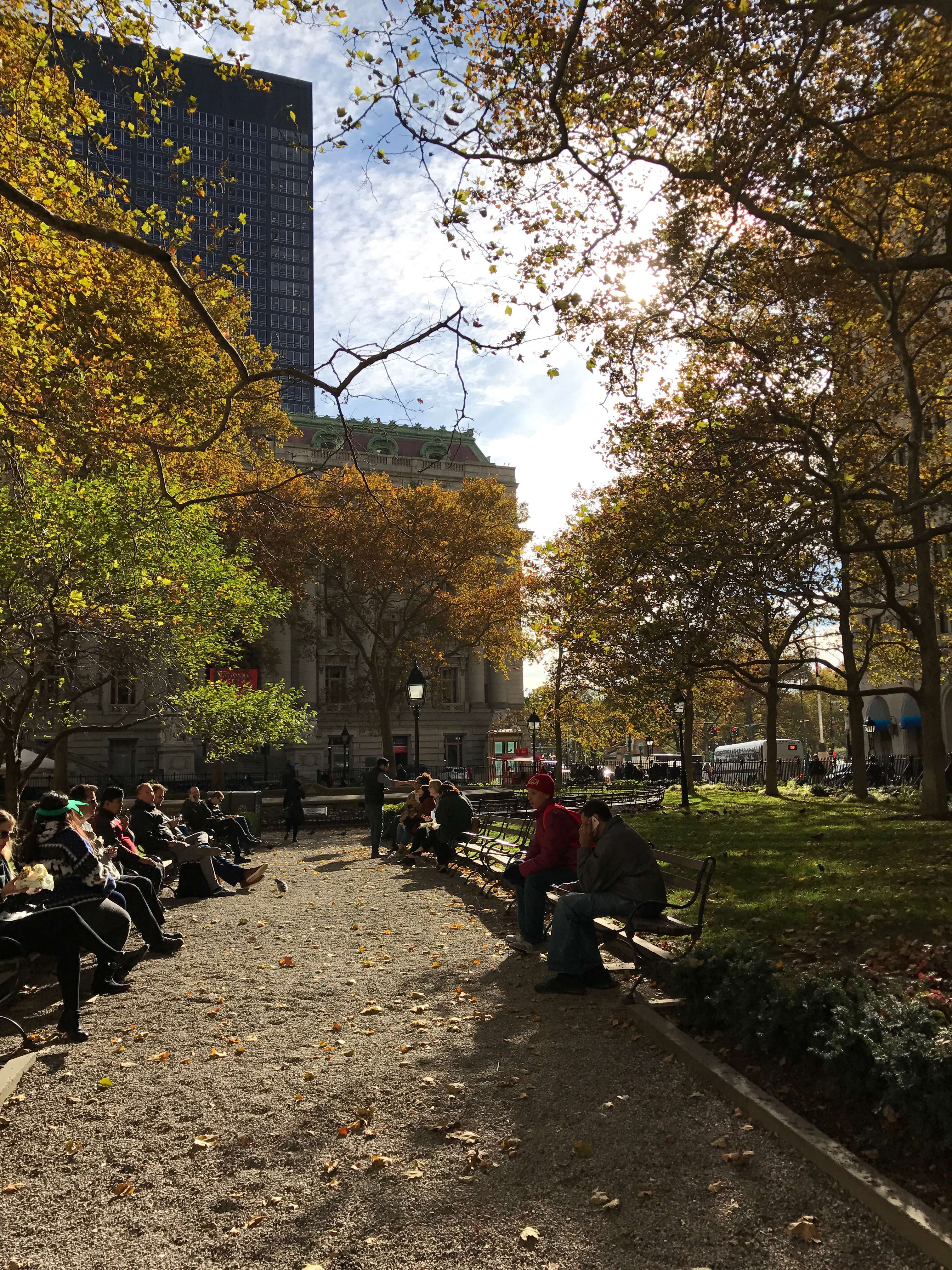 Inside the park.
Inside the park.
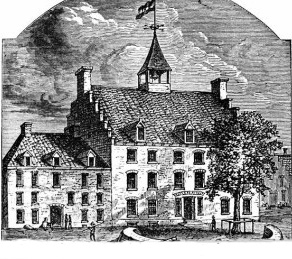
Visible in the ground near 85 Broad Street (now an office building) are the remains of Governor Francis Lovelace’s tavern, later called King’s Tavern. Not far from historic Fraunces Tavern, the original foundation walls can be seen through a glass window in the sidewalk. The Lovelace Tavern dates back approximately 350 years to Colonel Francis Lovelace, governor of New York, who owned the building and operated the tavern from 1670 until it burned down in 1706. The foundation remains were discovered in 1979.3
Photo left: Lovelace’s Tavern is the building to the left, while the Stadt Huys, the first City Hall in New York City established by the Dutch, is the main structure at center. Bowery Boys Blog
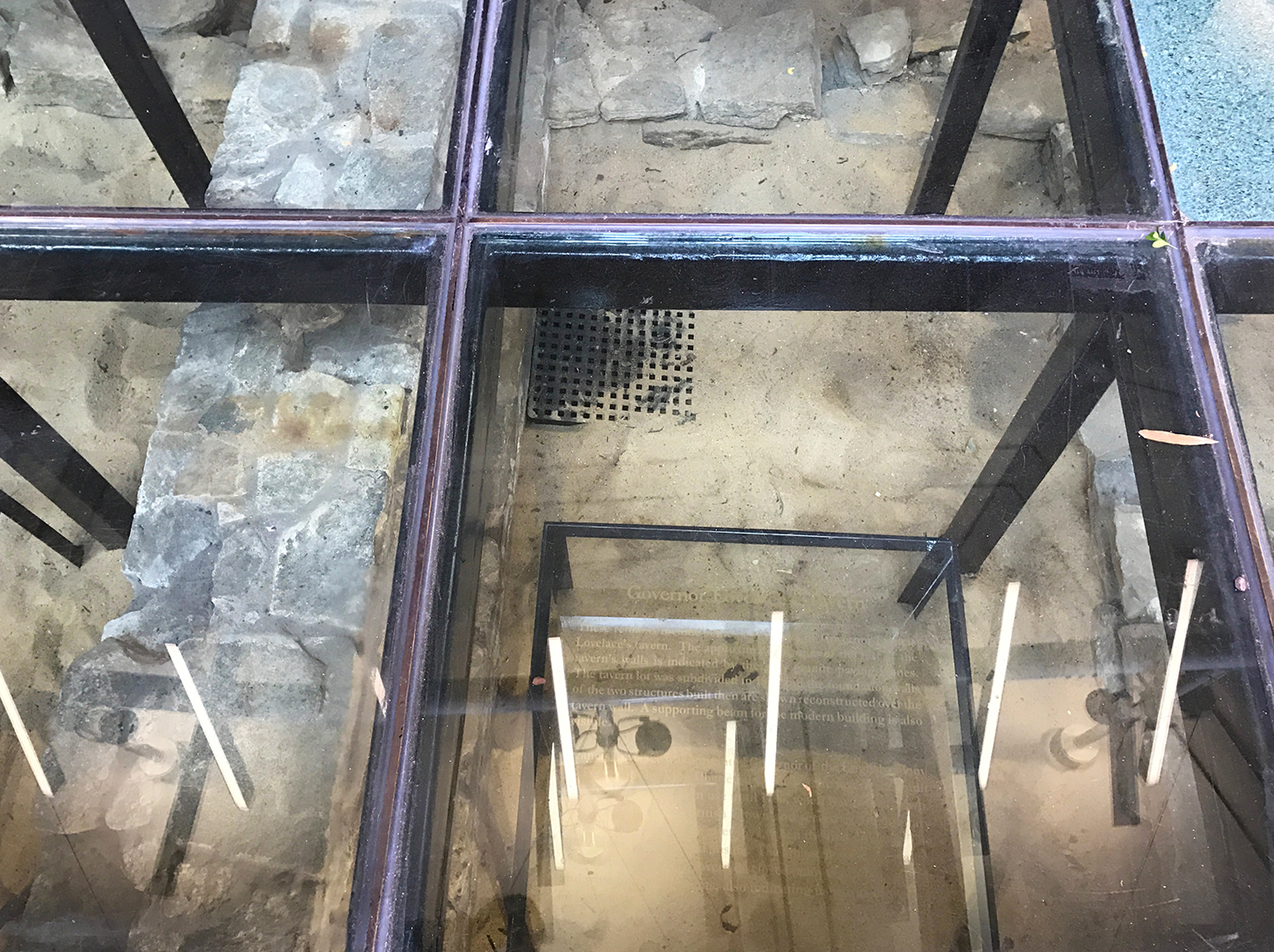 Looking through the window at the remains.
Looking through the window at the remains.
Sugar House Prison Window: This window was originally part of the five story Sugar House built in 1763 at the corner of Duane and Rose Streets and used by the British during the Revolutionary War as a prison for American Patriots. The Sugar House was demolished in 1892 and replaced by the Rhinelander Building incoporating this window into the facade as a historical artifact. The Rhinelander Building was demolished in 1968 and the site is now occupied by Police Headquarters.
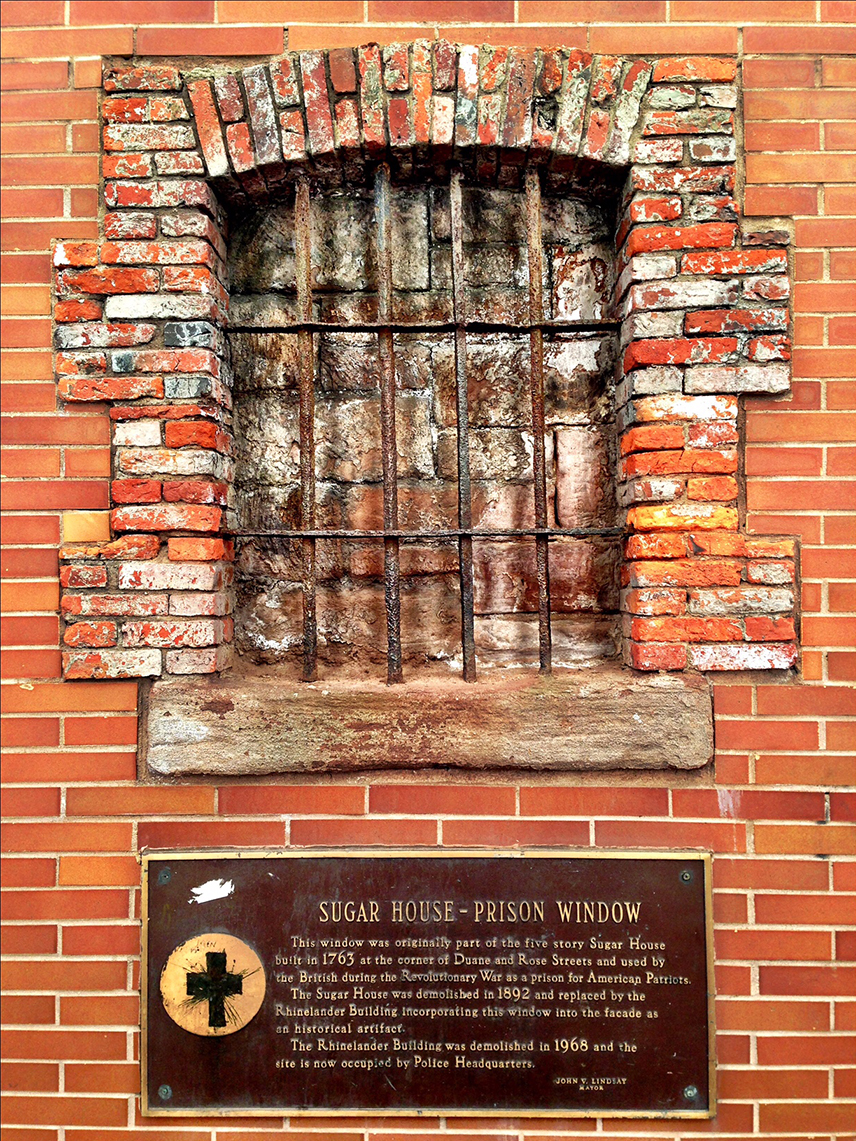
Originally named Hoogh Straet (high street) in 1656 by the Dutch, and then Duke Street by the English, Stone Street was renamed in 1794 in honor of it being the first paved street in New York City. Mostly home to merchants, this area was destroyed by the Great Fire of 1835, but was rebuilt with four-story Greek Revival-style countinghouses erected for importers, dry goods dealers and other merchants. Some of the buildings still survive today as eateries.4
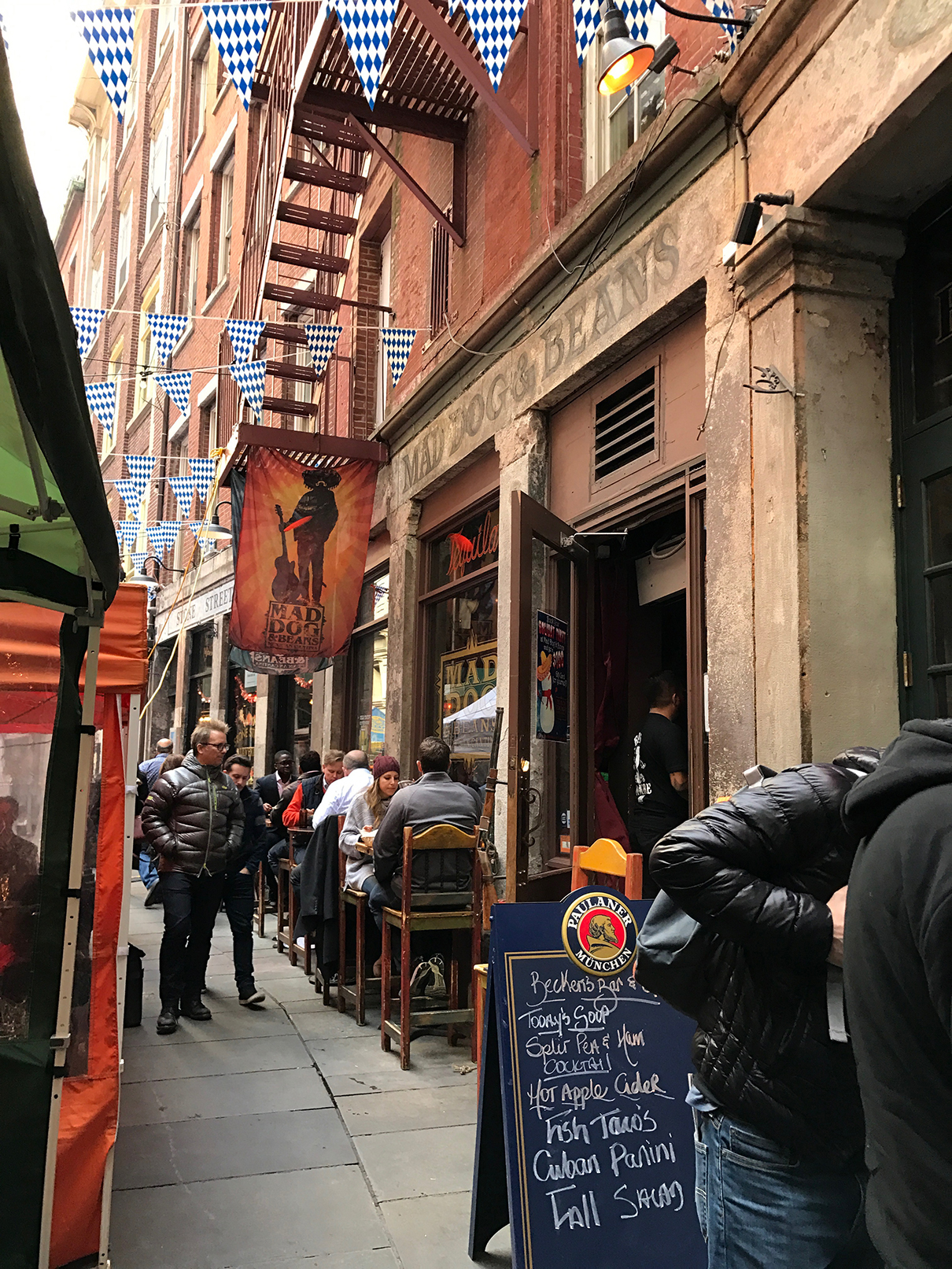 Stone Street eateries.
Stone Street eateries.
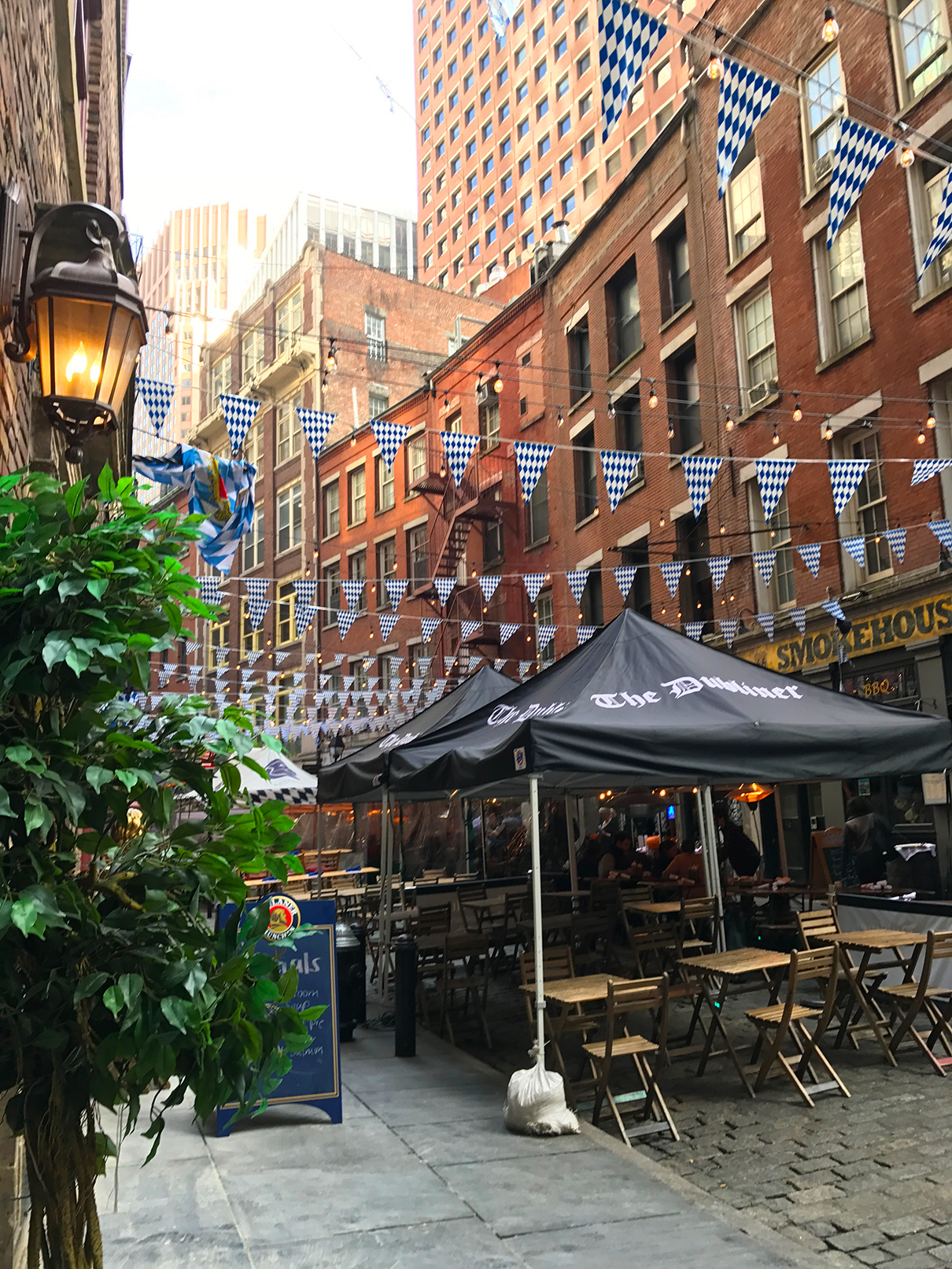
St. Mark's Place is one of the most unique streets in New York City. This area, referred to as the St. Marks Historic District, traces its history back to the mid 1600's when the original Governor of New Amsterdam, Peter Stuyvesant, owned a farm (bowery) here.
In the 1830's the widow of Alexander Hamilton, Eliza, lived at 2 Marks Place. In the 19th century, an influx of German and Polish immigrants moved in, and in the 20th century Leon Trotsky, Russian Revolutionary, and James Fenimore Cooper, author of Last of the Mohicans, lived on the street. In the mid-1960's and later, St. Marks Place became a 'hippie hangout' and by 1968 the street was so popular that tour buses changed their routes to go down St. Marks so tourists could take photos of the 'hippies.' It was also the site of of several music album photos and Andy Warhol parties.
The Hamilton-Holly House, located at 4 St. Mark's Place, was constructed in 1831. A designated landmark, the Hamilton-Holly House was purchased by Alexander Hamilton, Jr. in 1833 and until 1842, Eliza Hamilton (Alexander Hamilton's widow) lived in the house with her son Alexander and his wife Eliza Knox Hamilton, and her youngest daughter Eliza Hamilton Holly and her husband Sidney Augustus Holly.
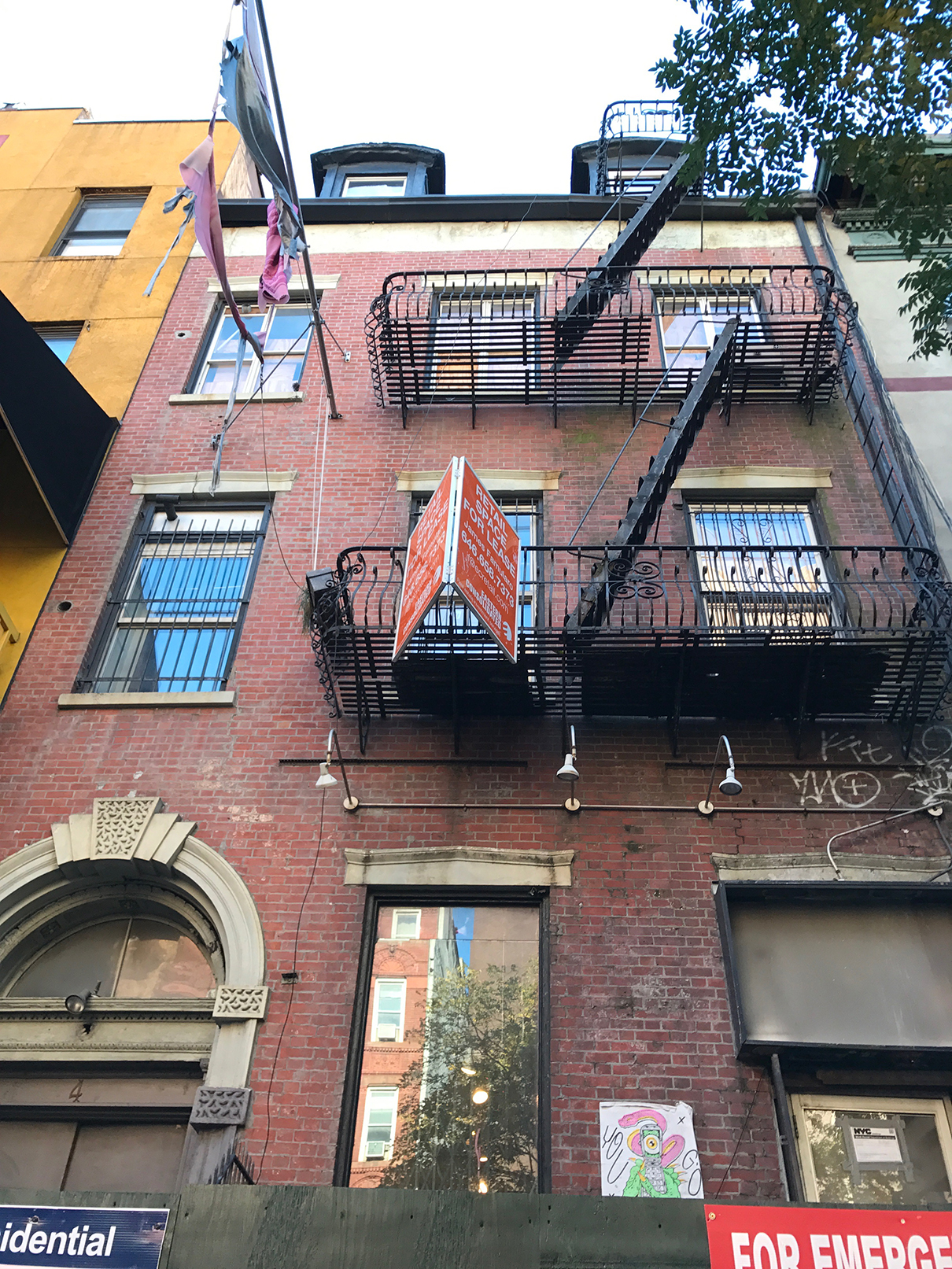 On the day I visited the house area was boarded up.
On the day I visited the house area was boarded up.
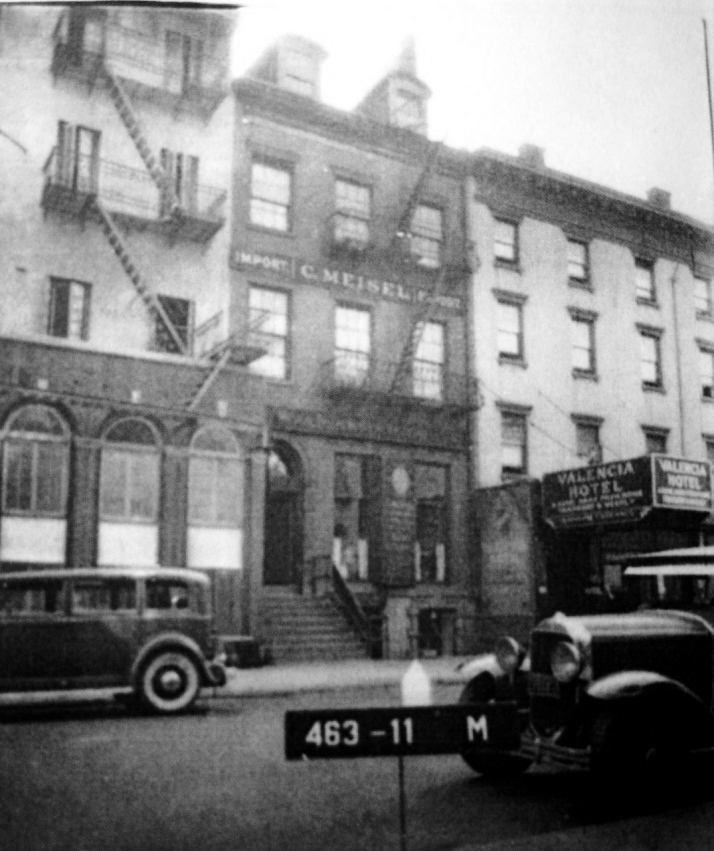 In the late 1930s C. Meisel retailer had offices in the building. Photo: New York City Department of Taxes.
In the late 1930s C. Meisel retailer had offices in the building. Photo: New York City Department of Taxes.
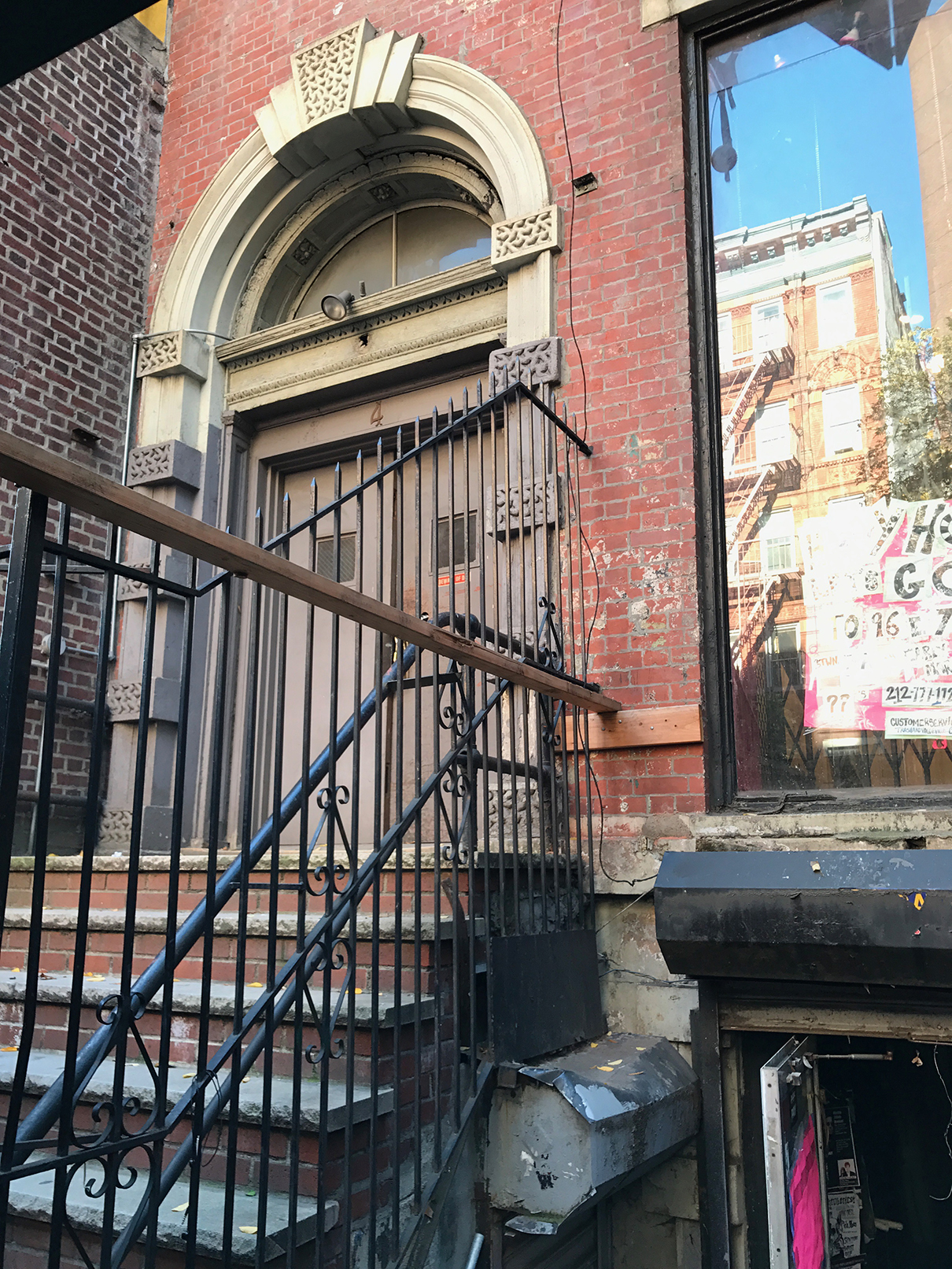 Entryway.
Entryway.
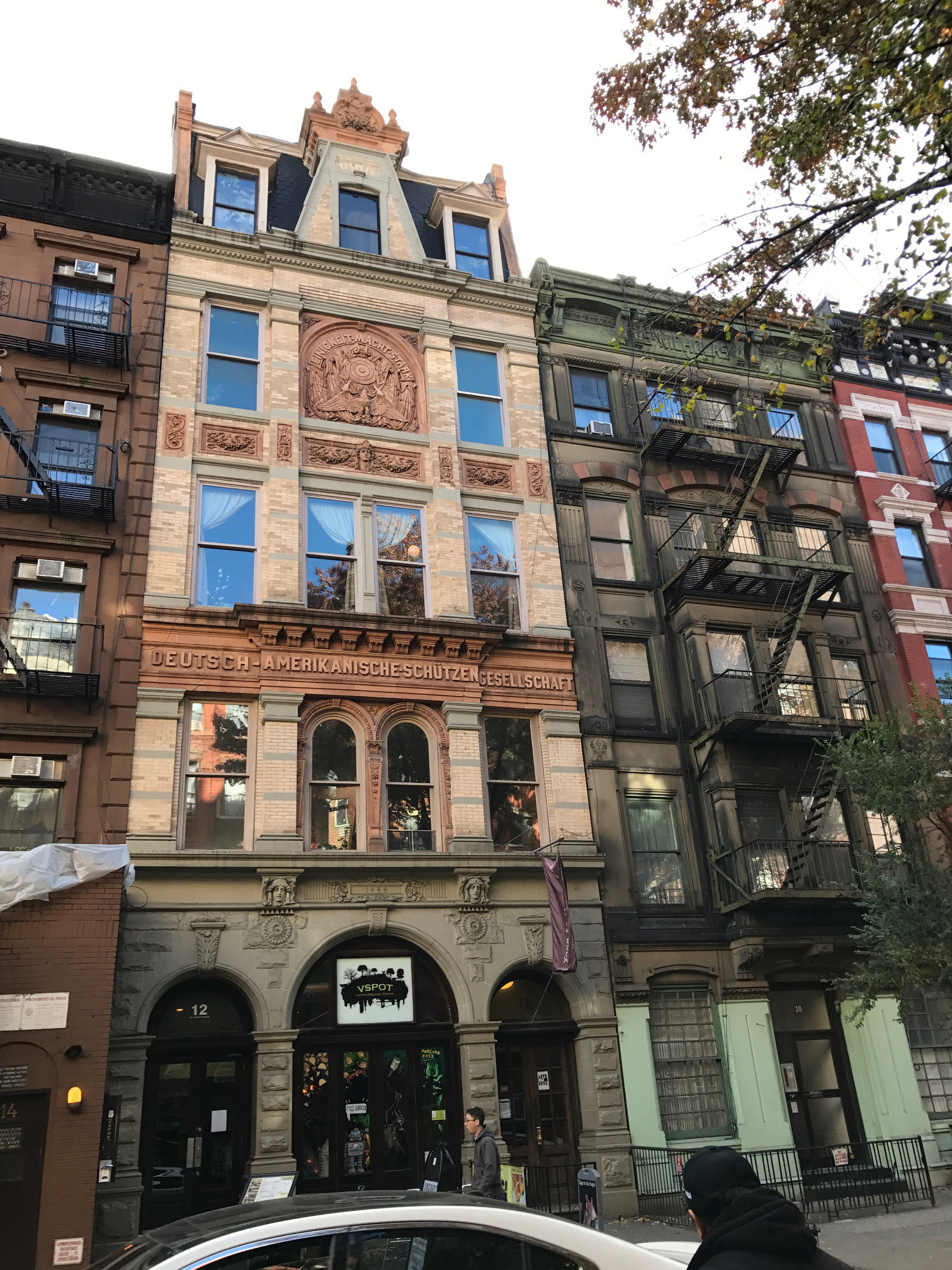
Built in the German Renaisance style, the 1889 Schuetzen Hall or Deutsch-Amerikanische Schuetzen Gesellschaft, was the German-American Shooting Society. A shooting gallery and bowling alley were located in the basement. The street level housed a saloon, a large meeting room and a restaurant. The rest of the building was reserved for lodge rooms and an apartment for the caretaker on the fourth floor.
The home of the authentic egg cream, the Gem Spa is a newspaper stand at the corner of St. Marks Place and 2nd Avenue. Opened since 1920 (under a different name), it was a 1960-1970's hangout and the site of a photo from the rear cover of the New York Dolls 1973 album.
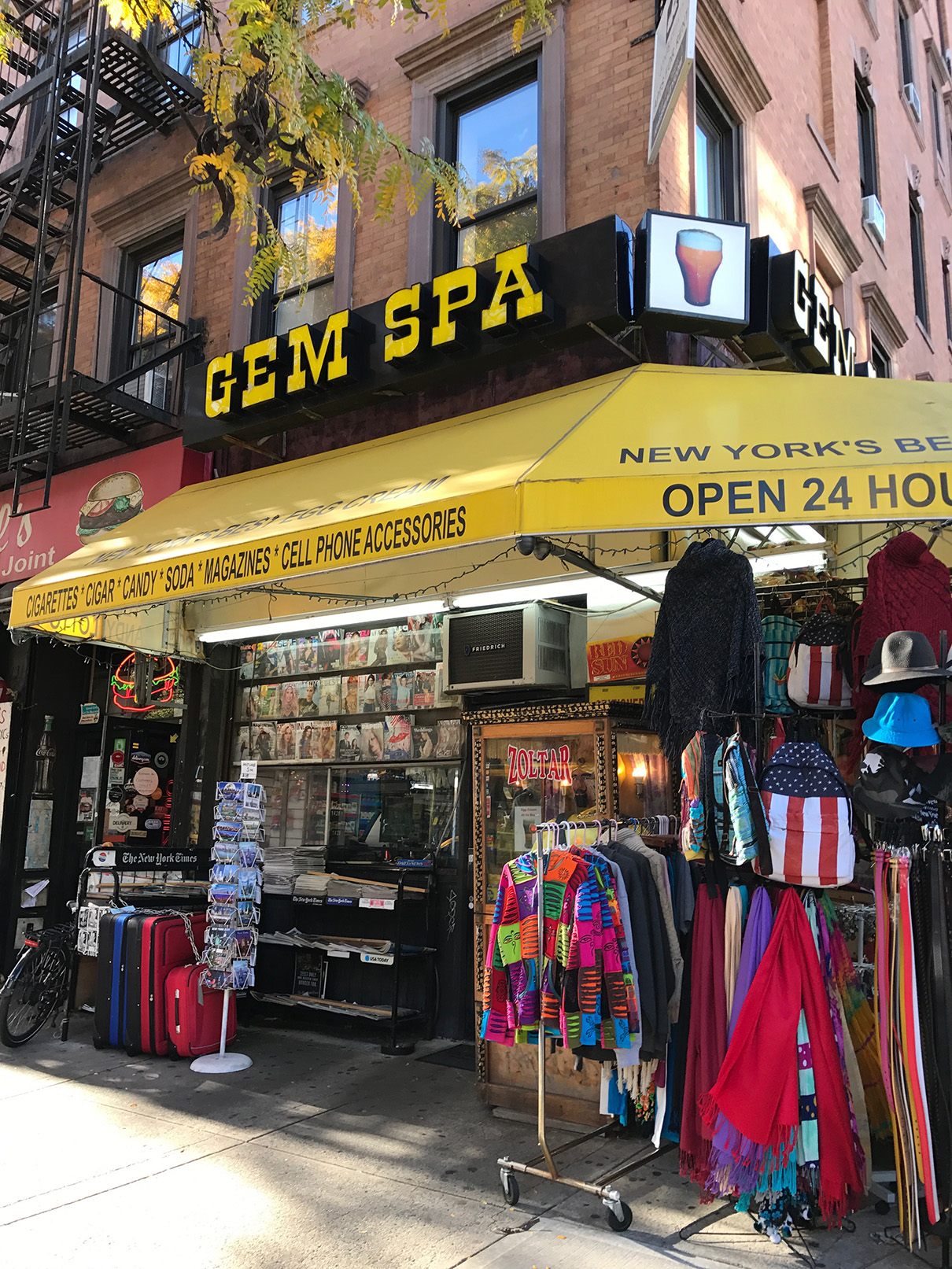
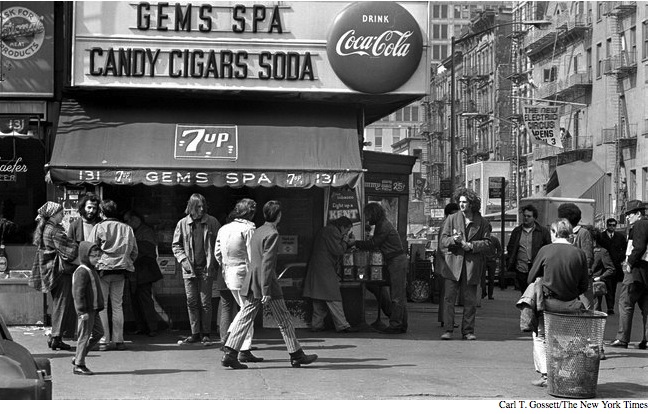
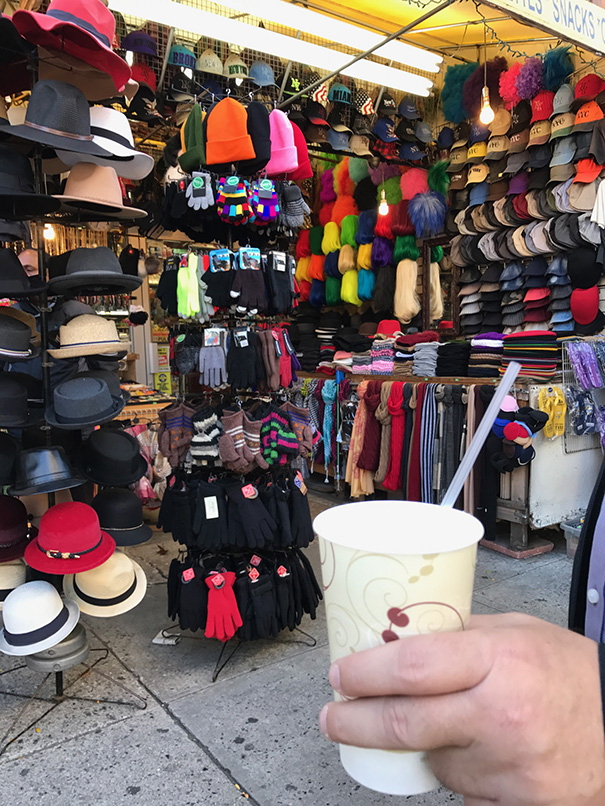 My authentic egg cream (tastes like a milk shake).
My authentic egg cream (tastes like a milk shake).
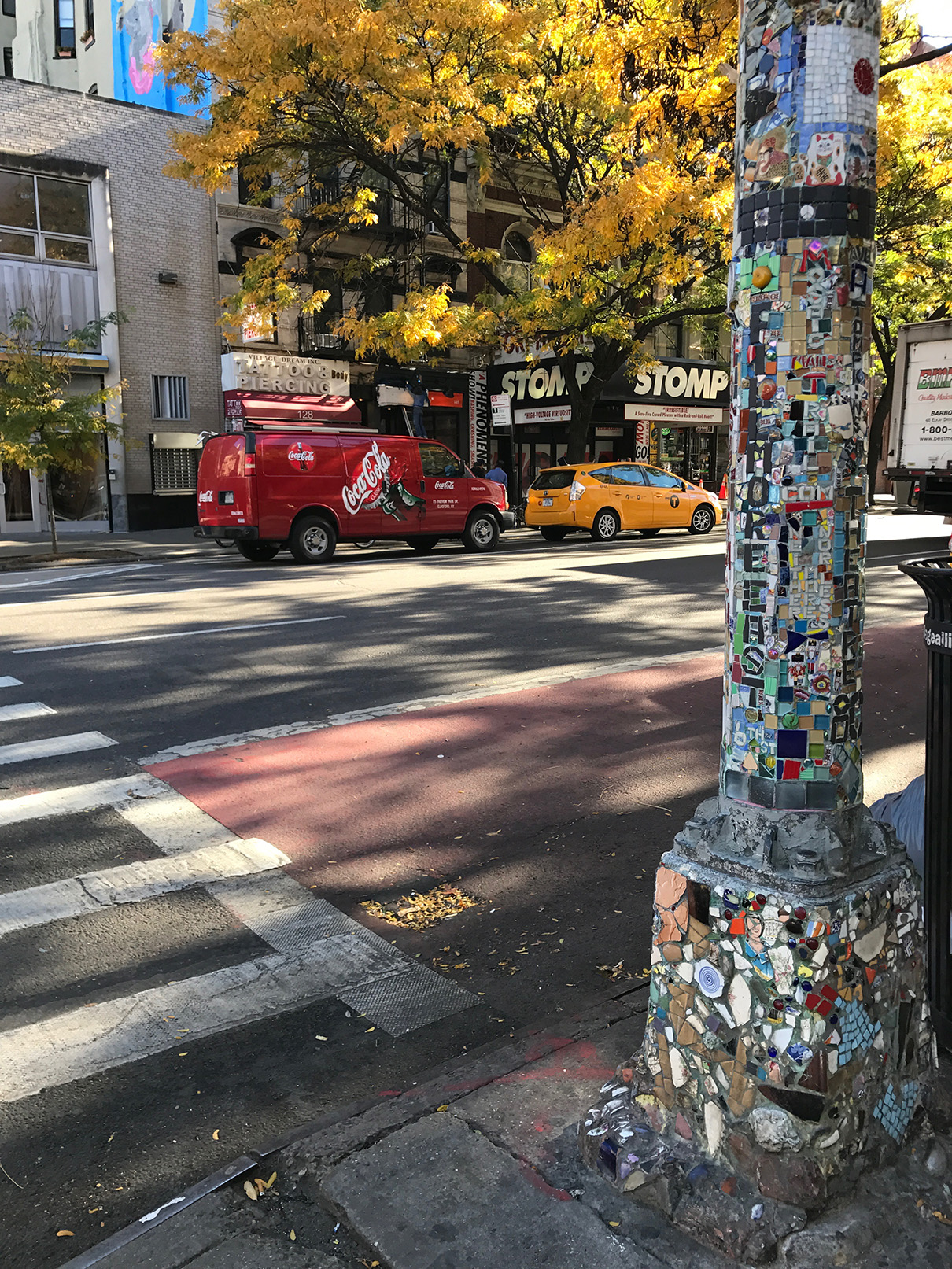 A cool post near Gem Spa.
A cool post near Gem Spa.
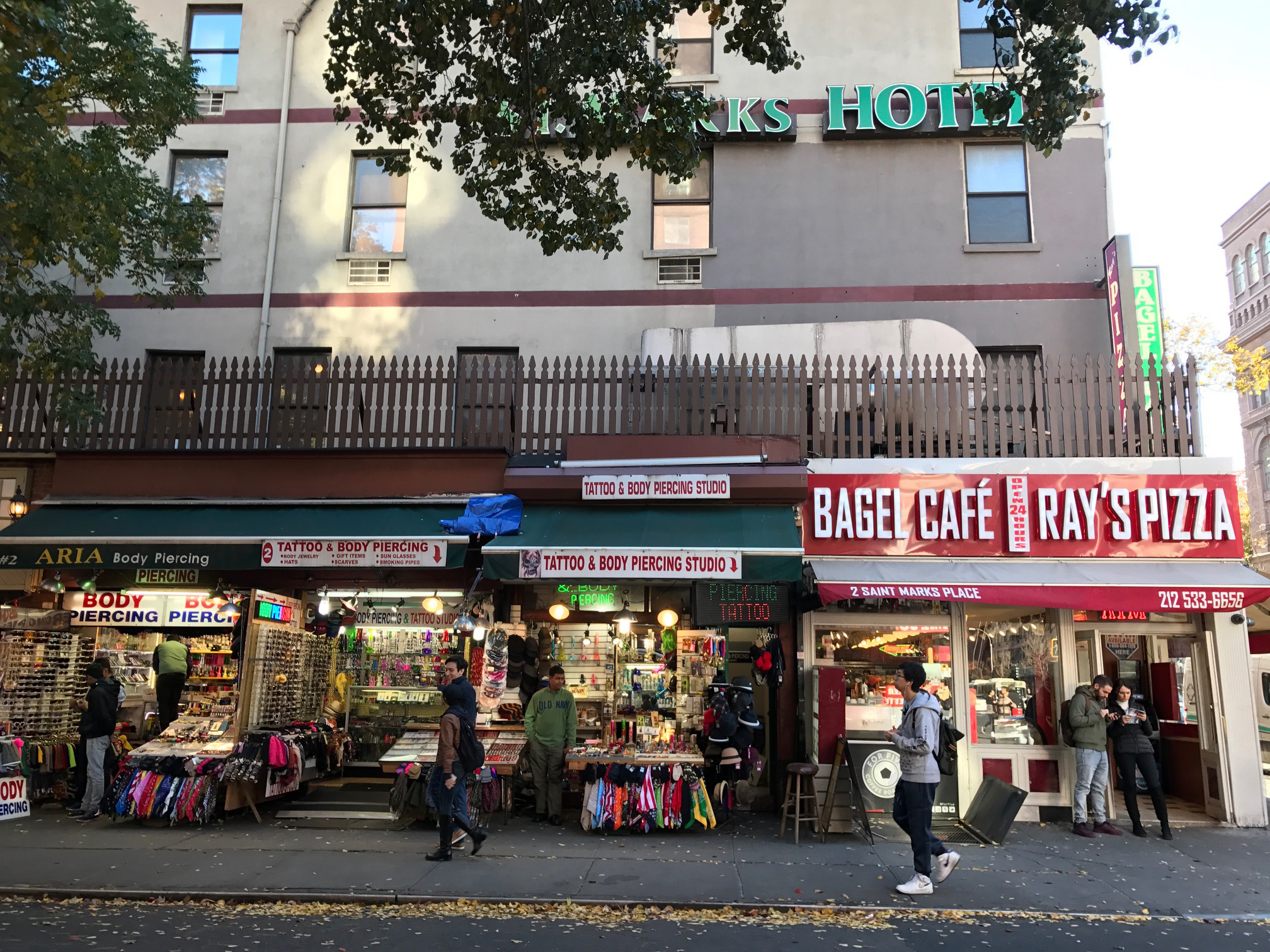 The second location of the legendary Five Spot jazz club (with performances by Thelonious Monk and others), at 2 St. Marks Place.
The second location of the legendary Five Spot jazz club (with performances by Thelonious Monk and others), at 2 St. Marks Place.
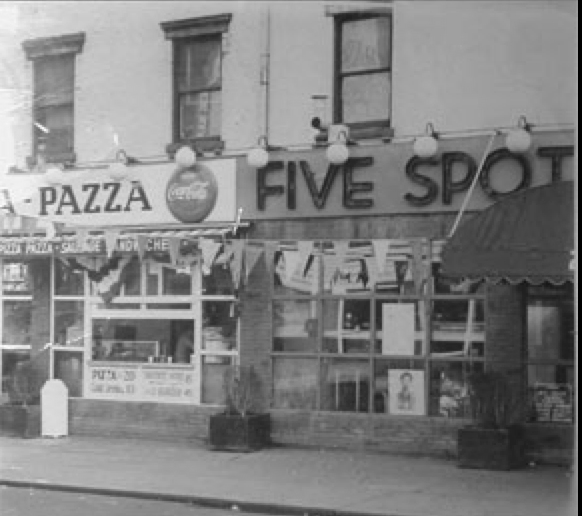
In 1651 New Amsterdam Governor, Peter Stuyvesant, purchased land for a farm (bowery). Today Stuyvesant Street is a remnant of that time, being one of New York's oldest streets. Now within the East Village, the majority of the street is included in the St. Mark's Historic District.
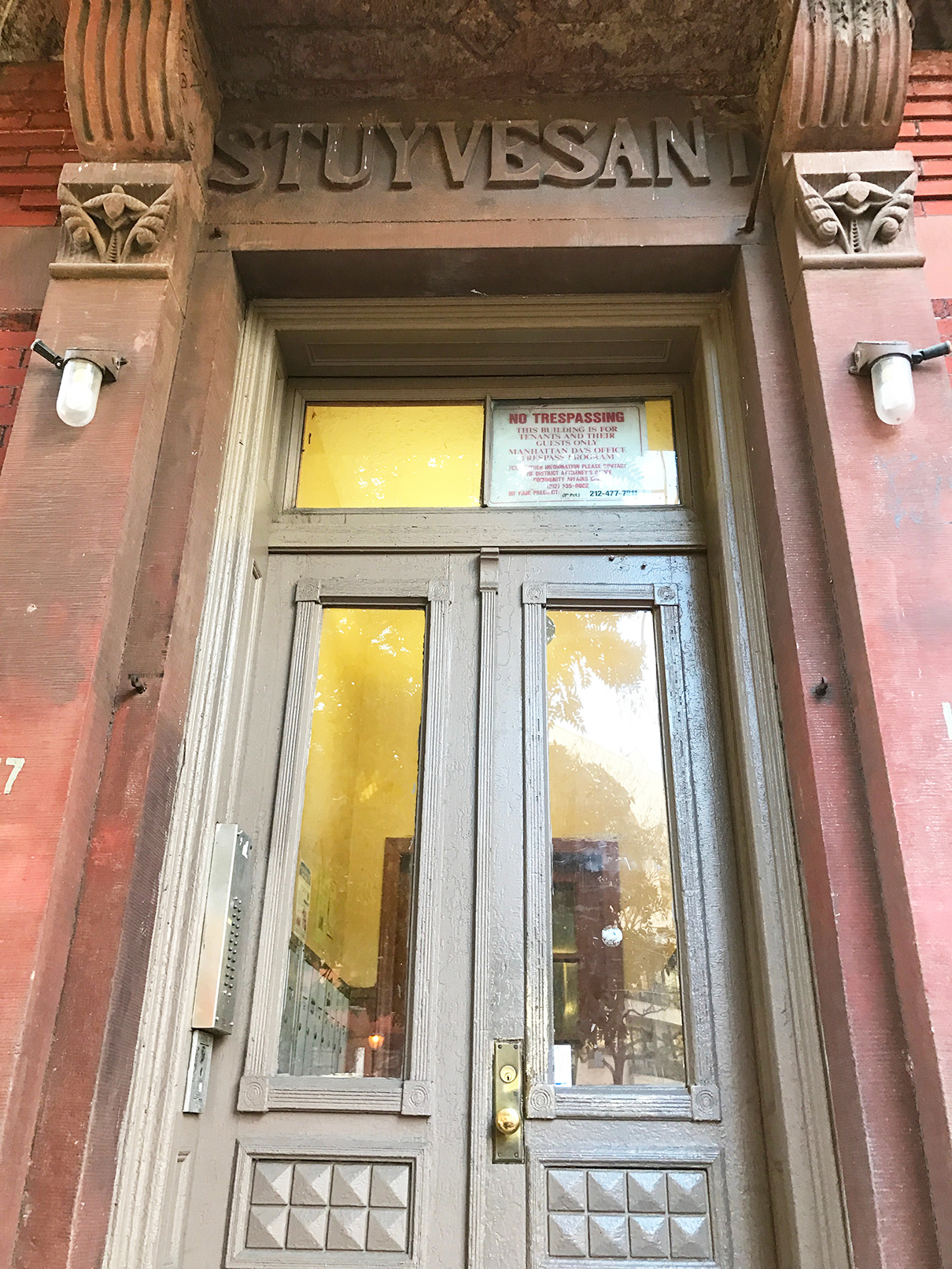
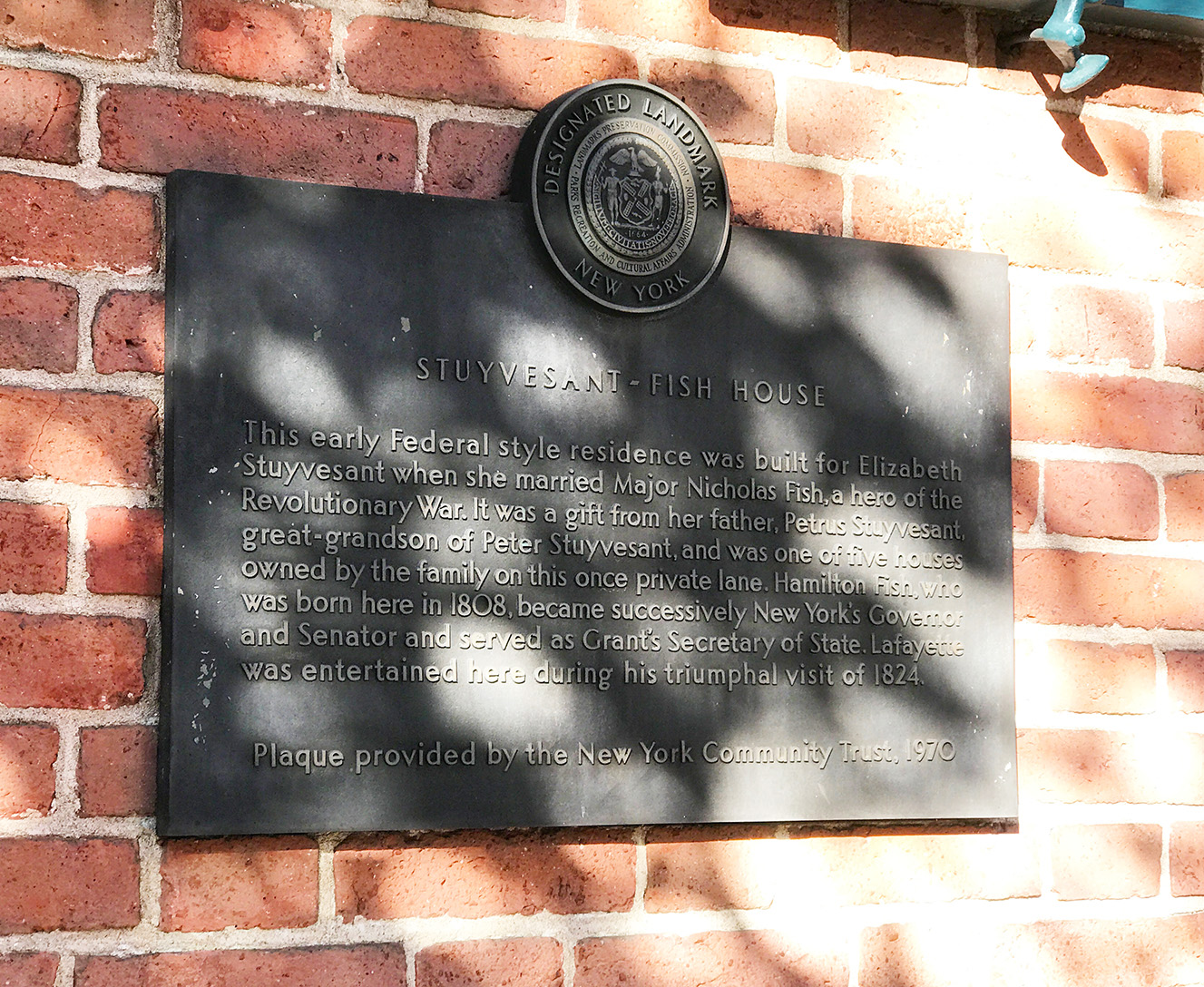
Located at No. 21 (the photo above and below) is the Stuyvesant-Fish house built in 1803 by Petrus Stuyvesant, the great-grandson of Peter Stuyvesant. Petrus gave the house to his daughter, Elizabeth, as a wedding present when she married Nicholas Fish, a Revolutionary War hero and a political ally of Alexander Hamilton.
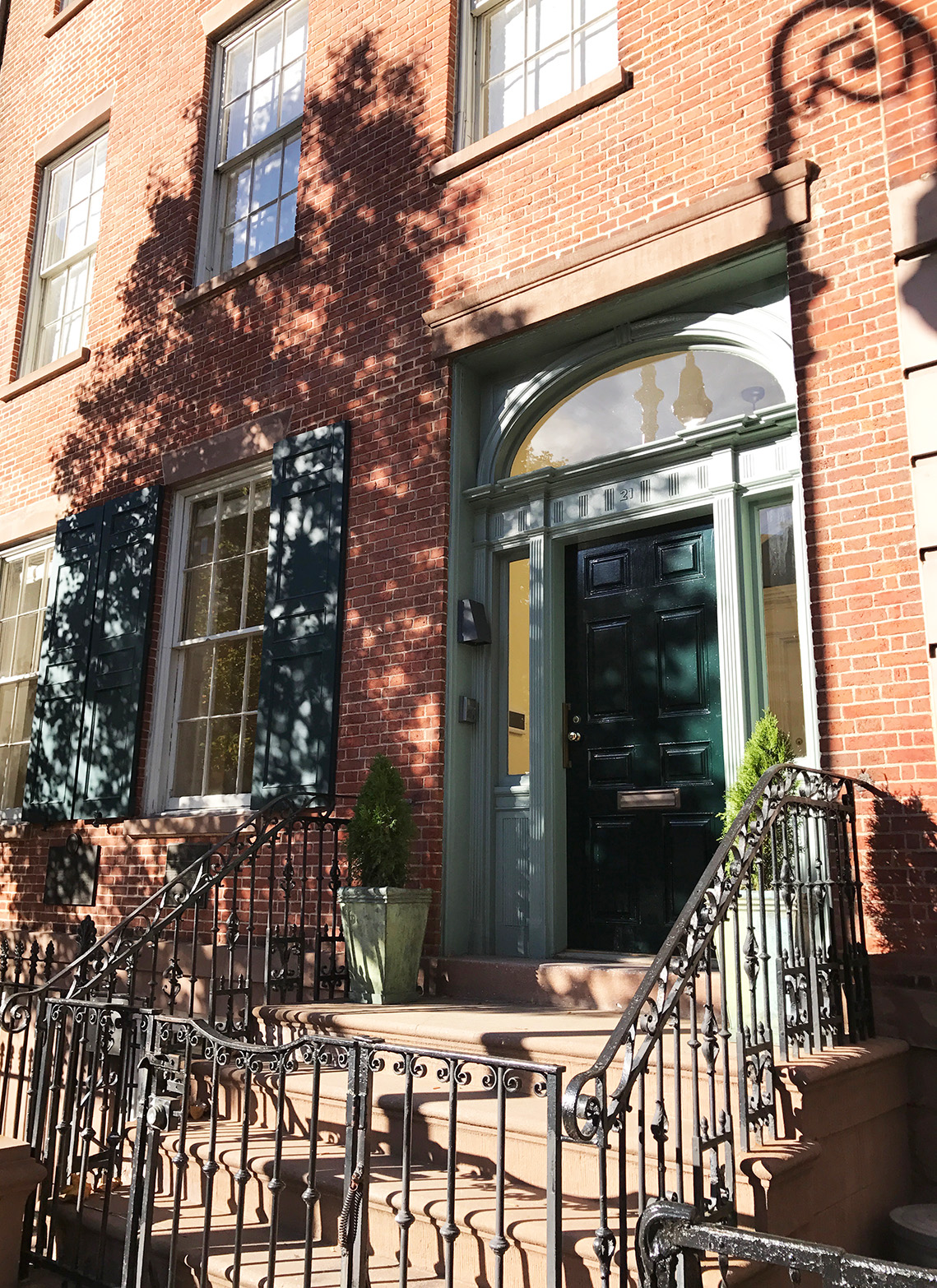 Stuyvesant-Fish house.
Stuyvesant-Fish house.
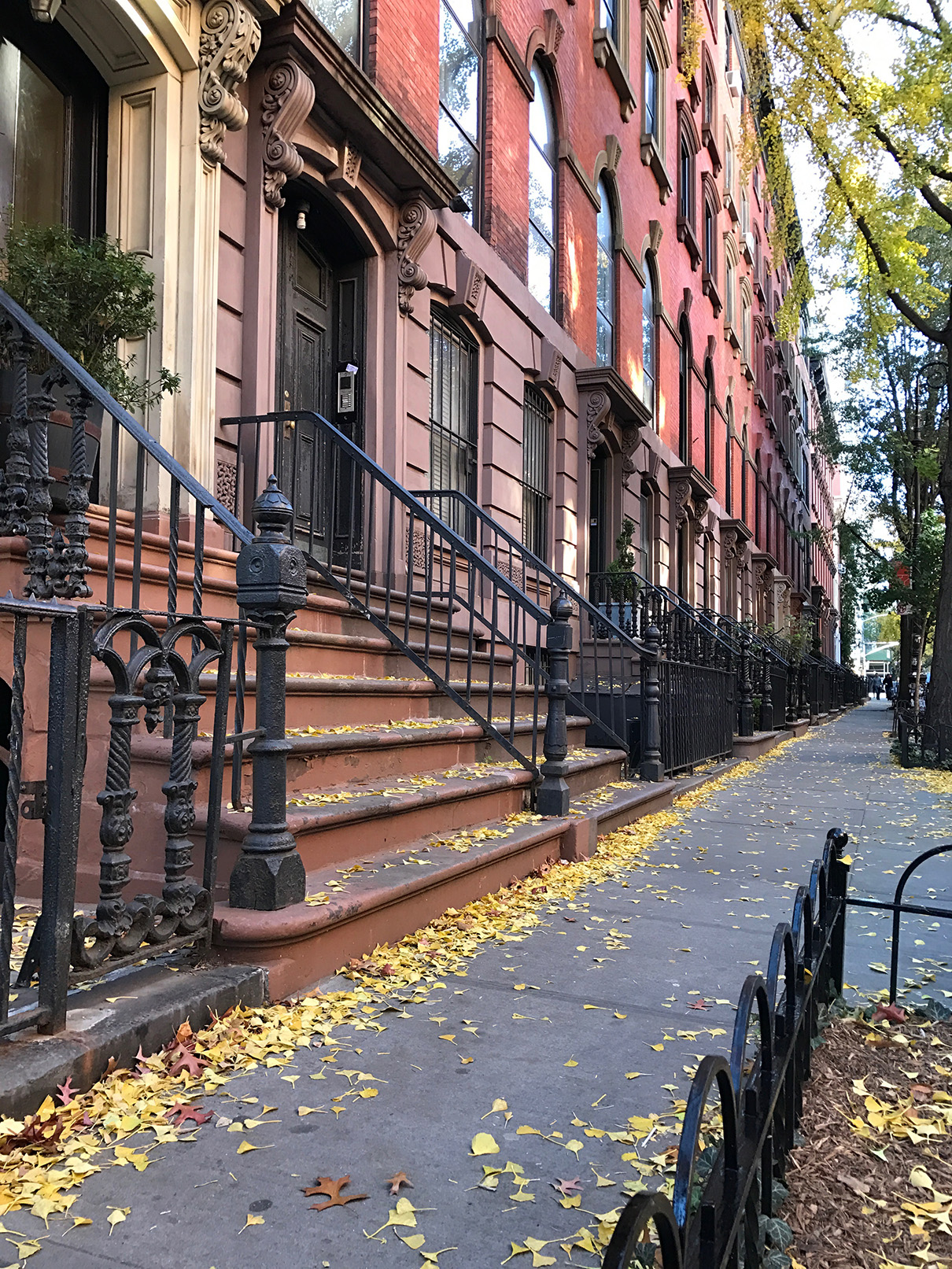 Walking along Struyvesant Street to St. Marks in the Bowery church.
Walking along Struyvesant Street to St. Marks in the Bowery church.
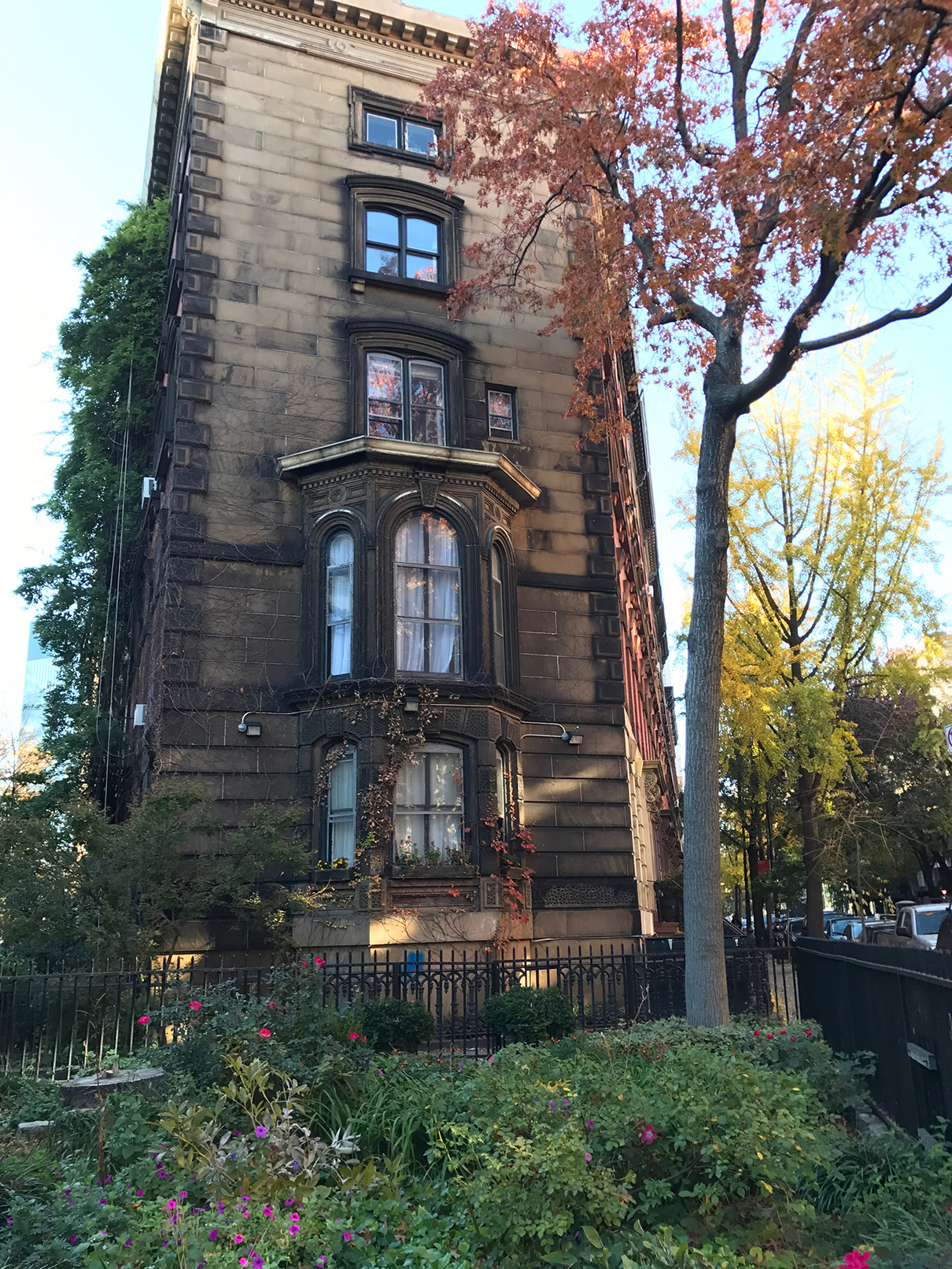 Lovely architecture.
Lovely architecture.
Continuing along Struyvesant to the street's older section (which is no longer a fully funtioning street), is St. Marks in the Bowery Church. In 1651 New Amsterdam Governor, Peter Stuyvesant, purchased land for a bowery (farm) and in 1660 built a family chapel on this site. In 1795, Stuyvesant's great-grandson sold the property and a new chapel was built. Around 80 members of the Stuyvesant family, including Peter, are buried in a now sealed vault below the church. The church was nearly destroyed by fire and neglected for many years before finally being restored and preserved.
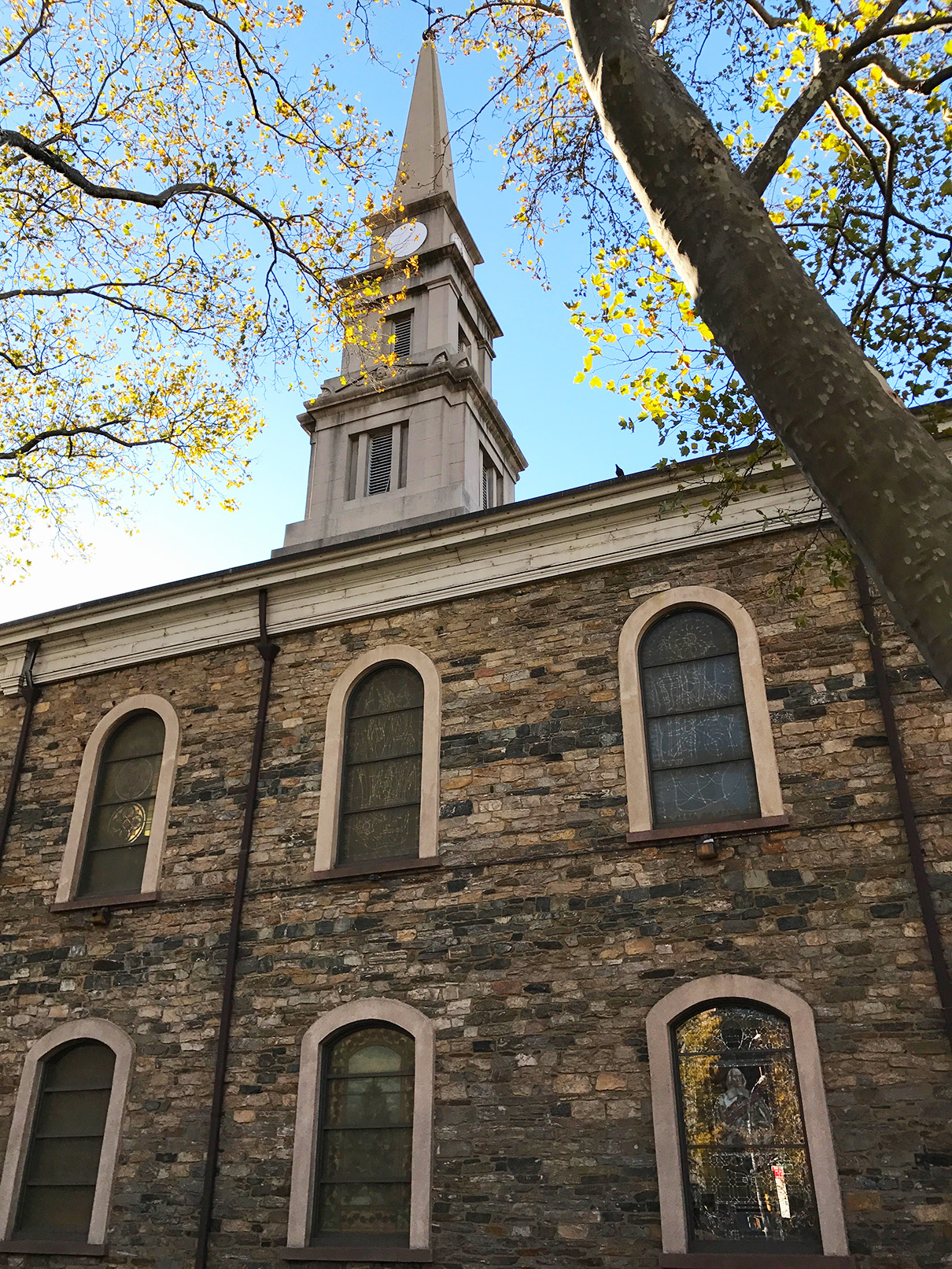
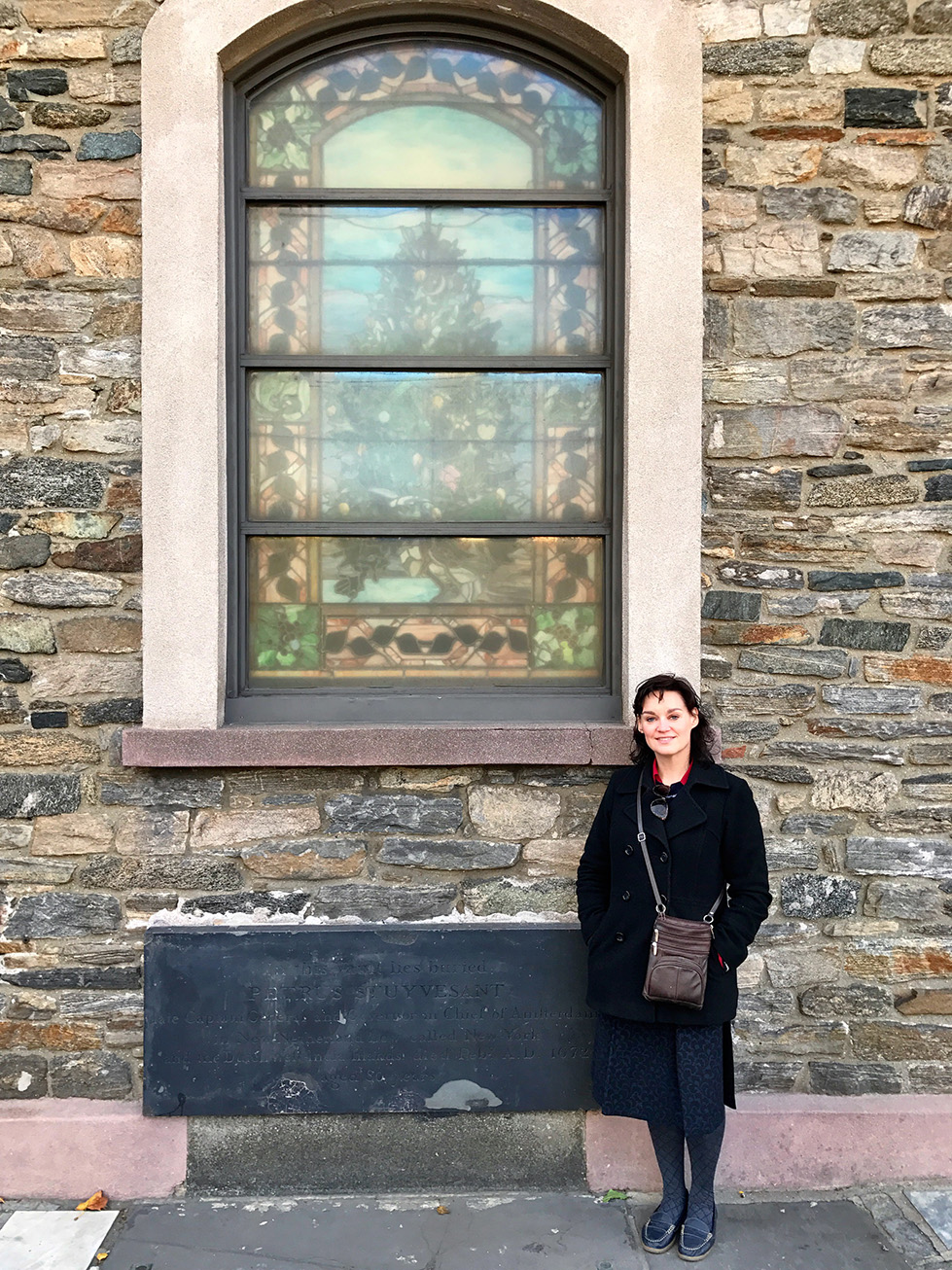 Standing over the sealed tomb of the Stuyvesant family (including Peter).
Standing over the sealed tomb of the Stuyvesant family (including Peter).
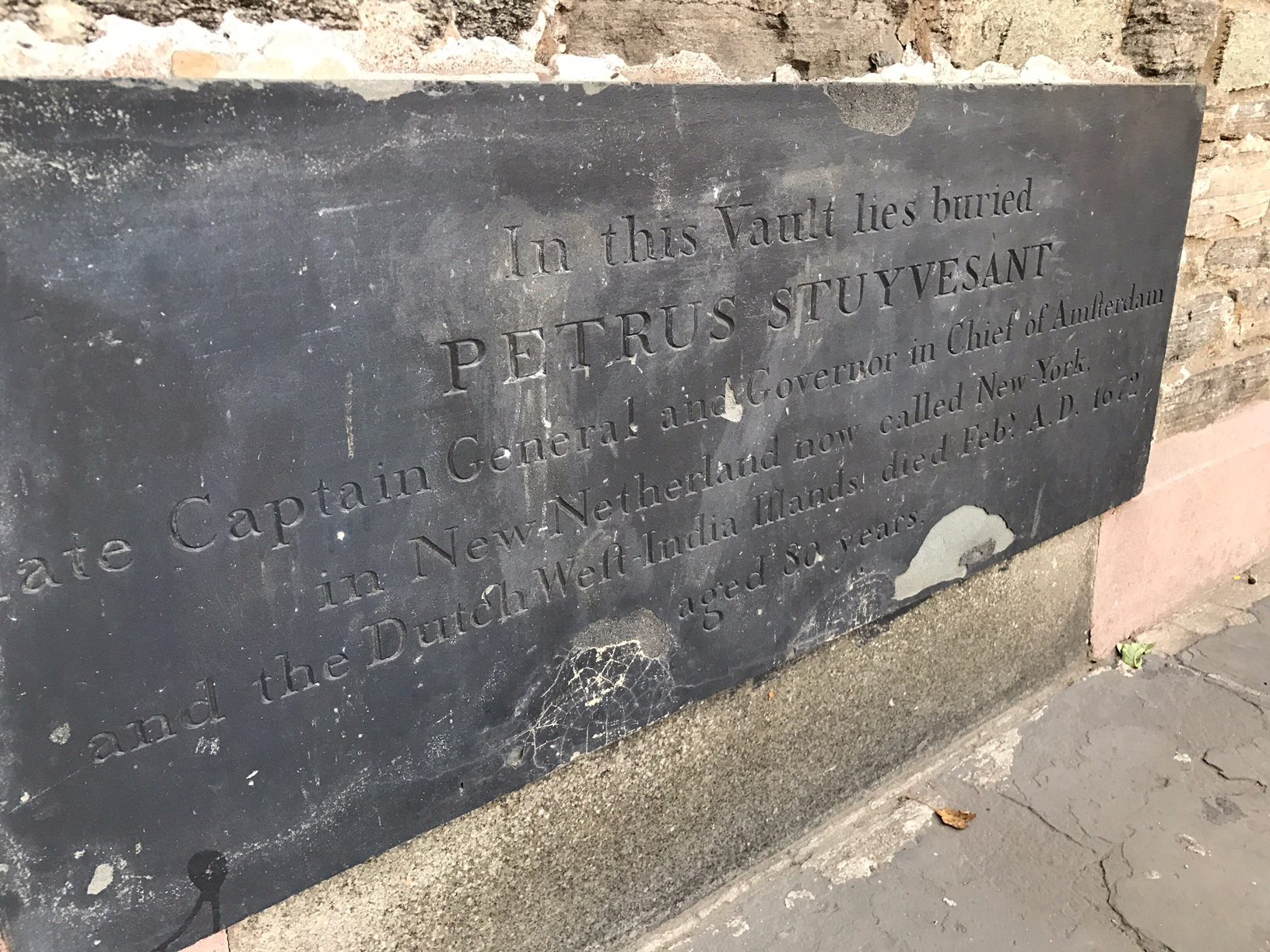
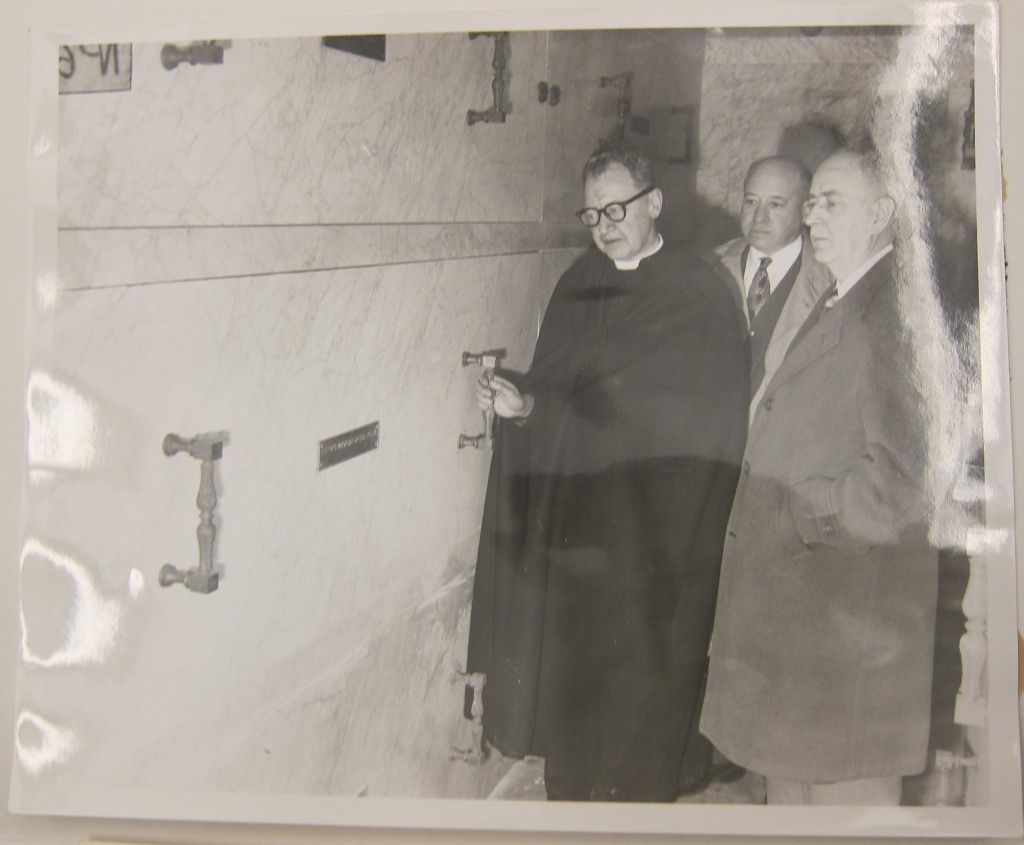 These two images are from the inside of the Struyvesant vault before it was sealed. For more images visit:
Tales from our crypts
These two images are from the inside of the Struyvesant vault before it was sealed. For more images visit:
Tales from our crypts
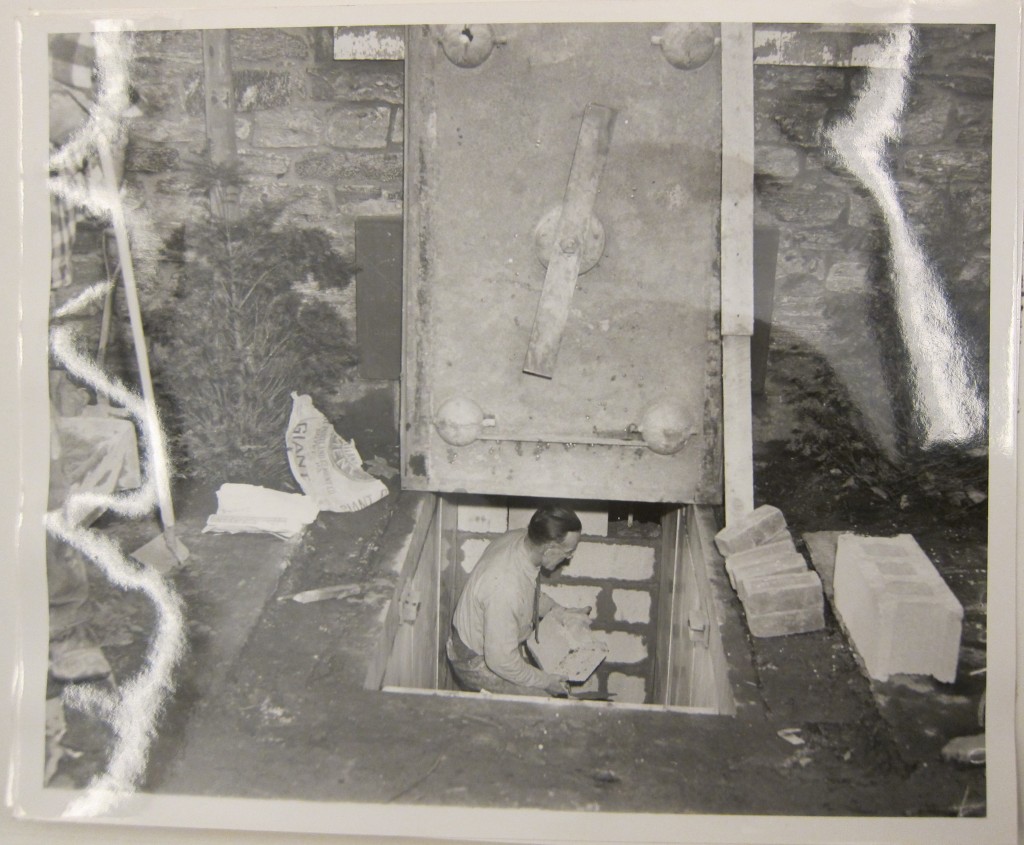
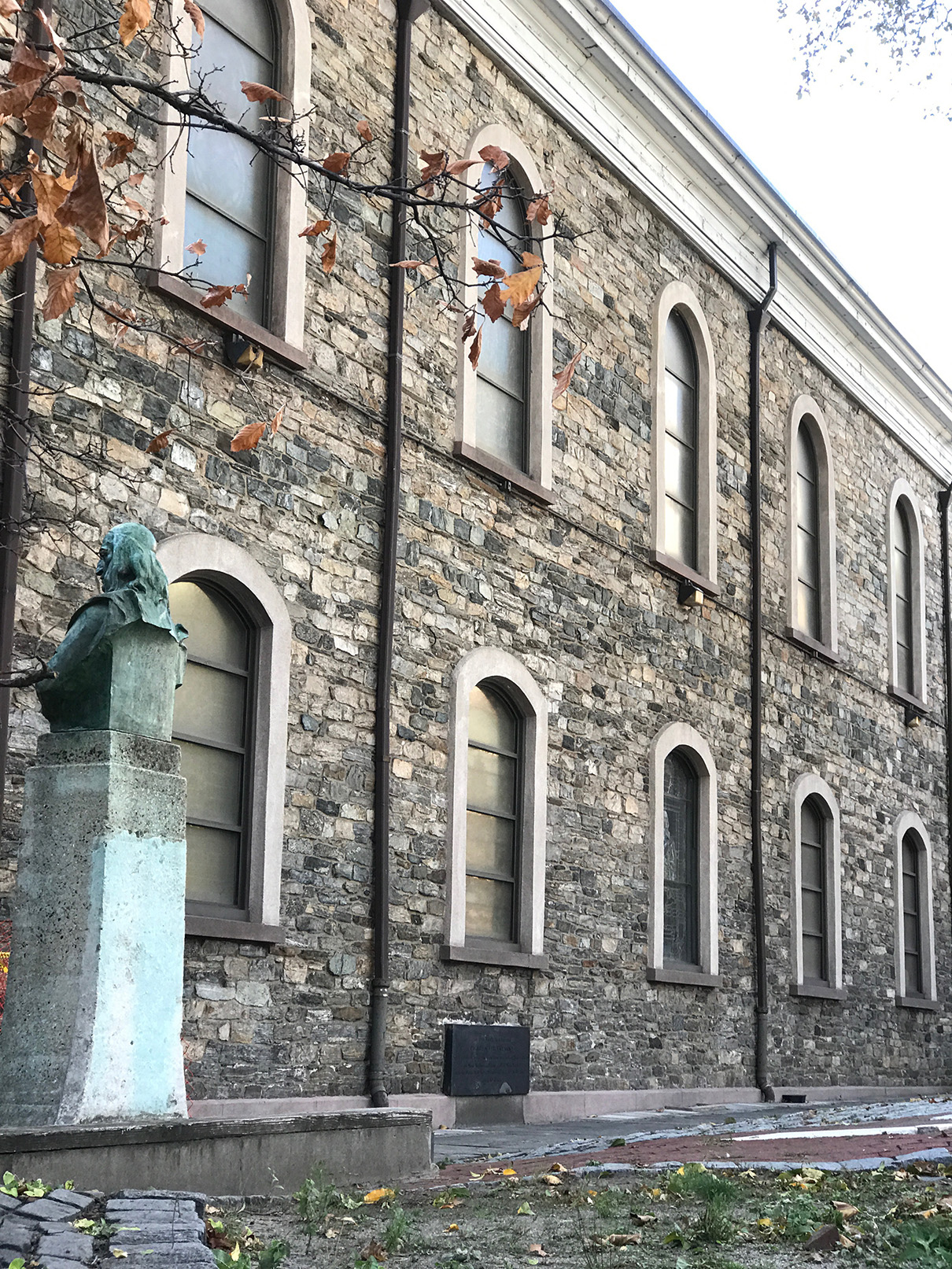
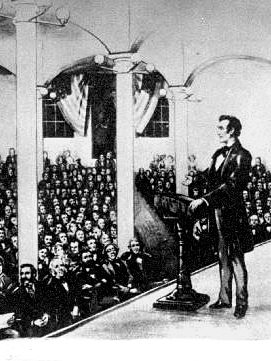
The Cooper Union, established in 1859, is considered one of the nation's oldest and most distinguished institutions for higher education. My visit was primarily to get a glimpse into the Great Hall, the site of several historic meetings and speakers, including Abraham Lincoln whose speech in 1860 propelled him to the presidency. The podium Lincoln spoke at is still in the Great Hall (photo below).
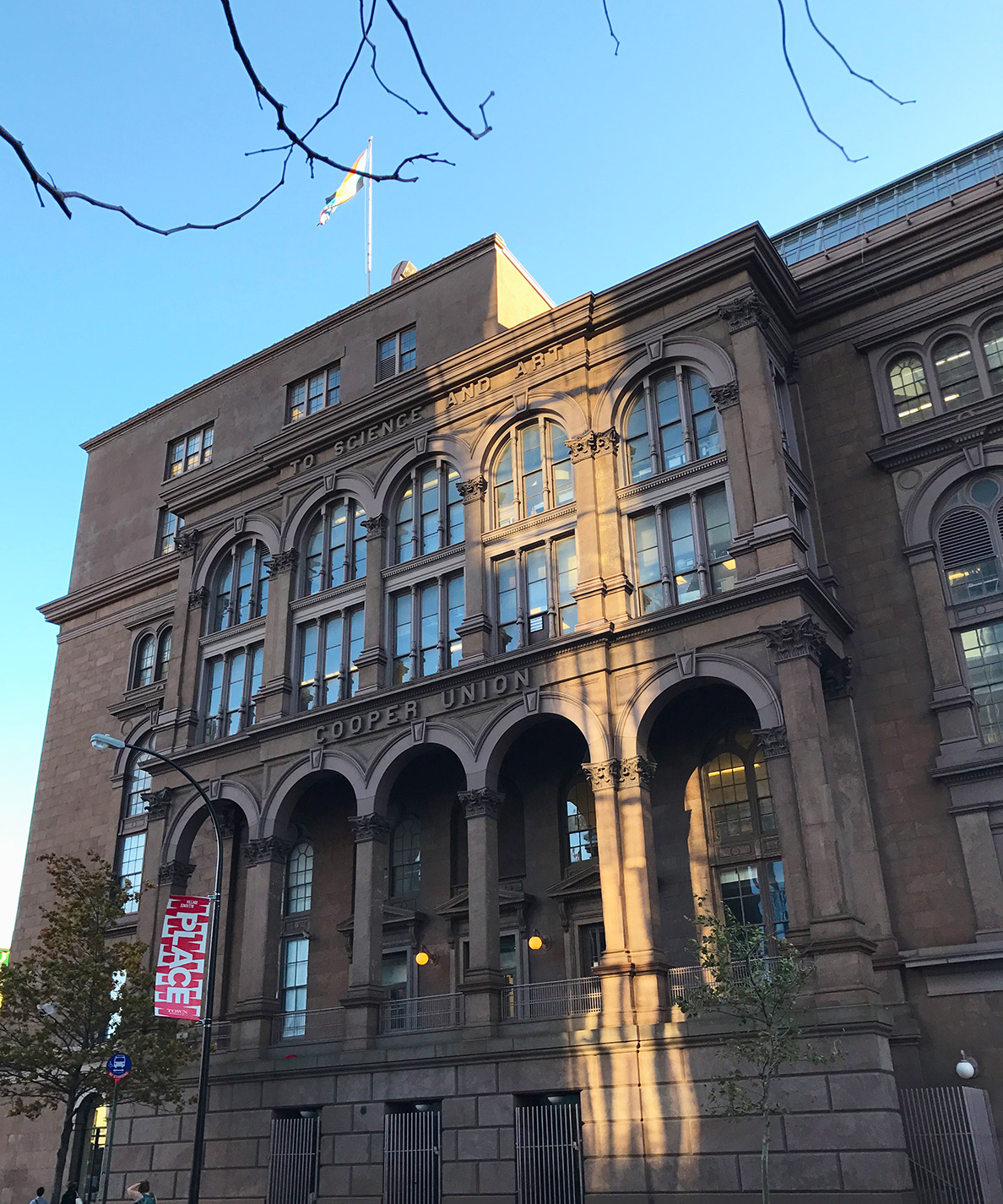
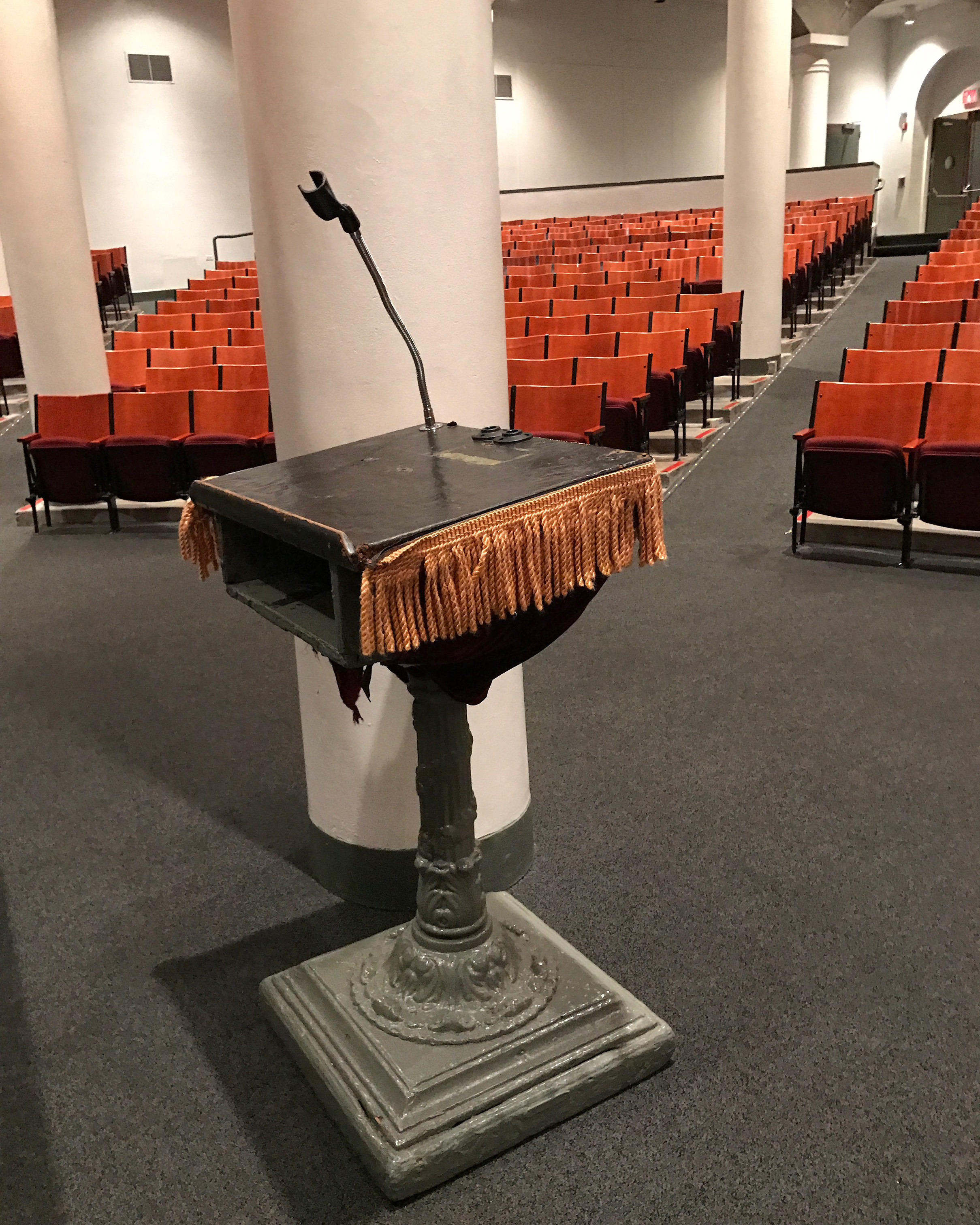 Podium used by Abraham Lincoln.
Podium used by Abraham Lincoln.
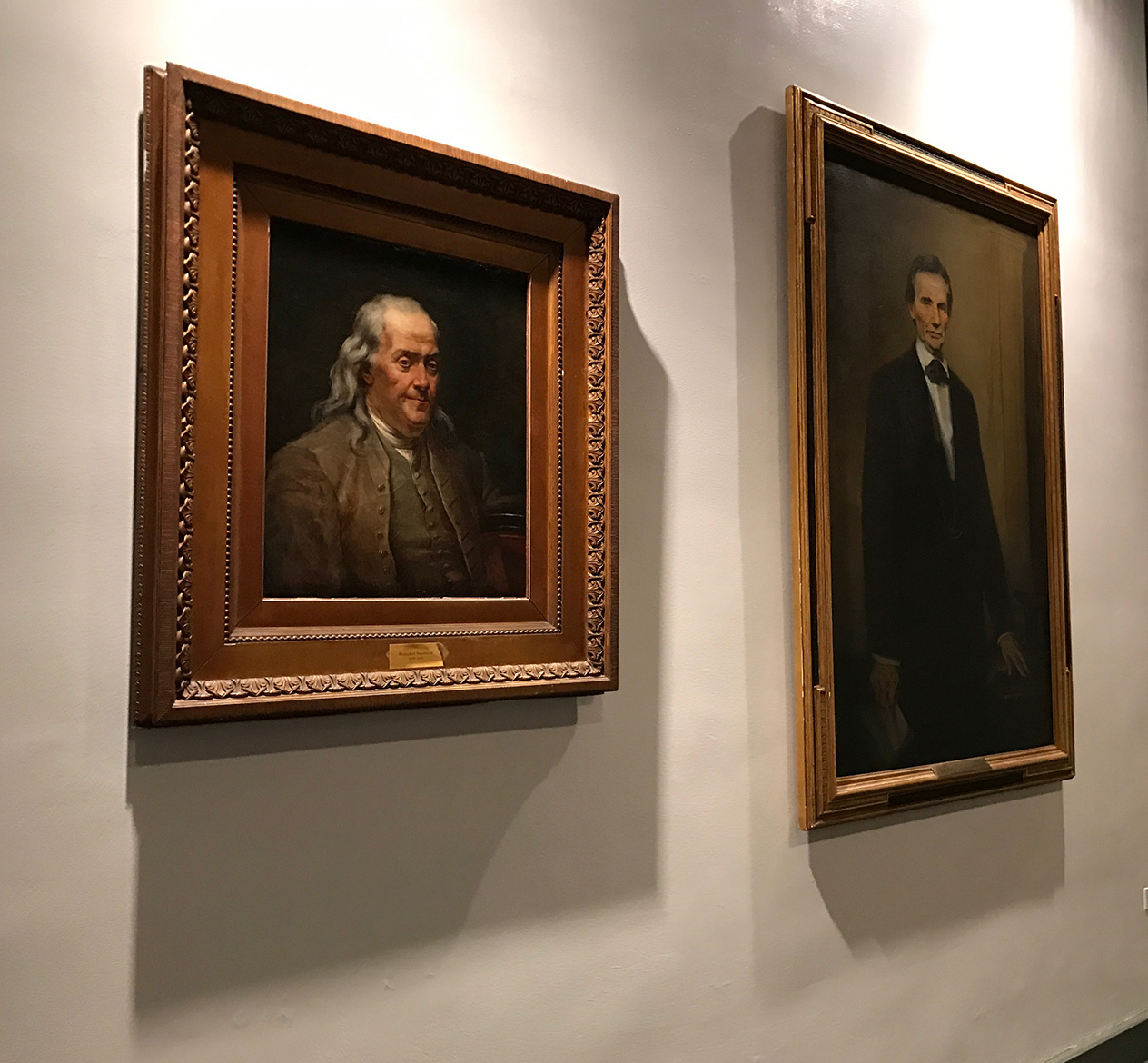
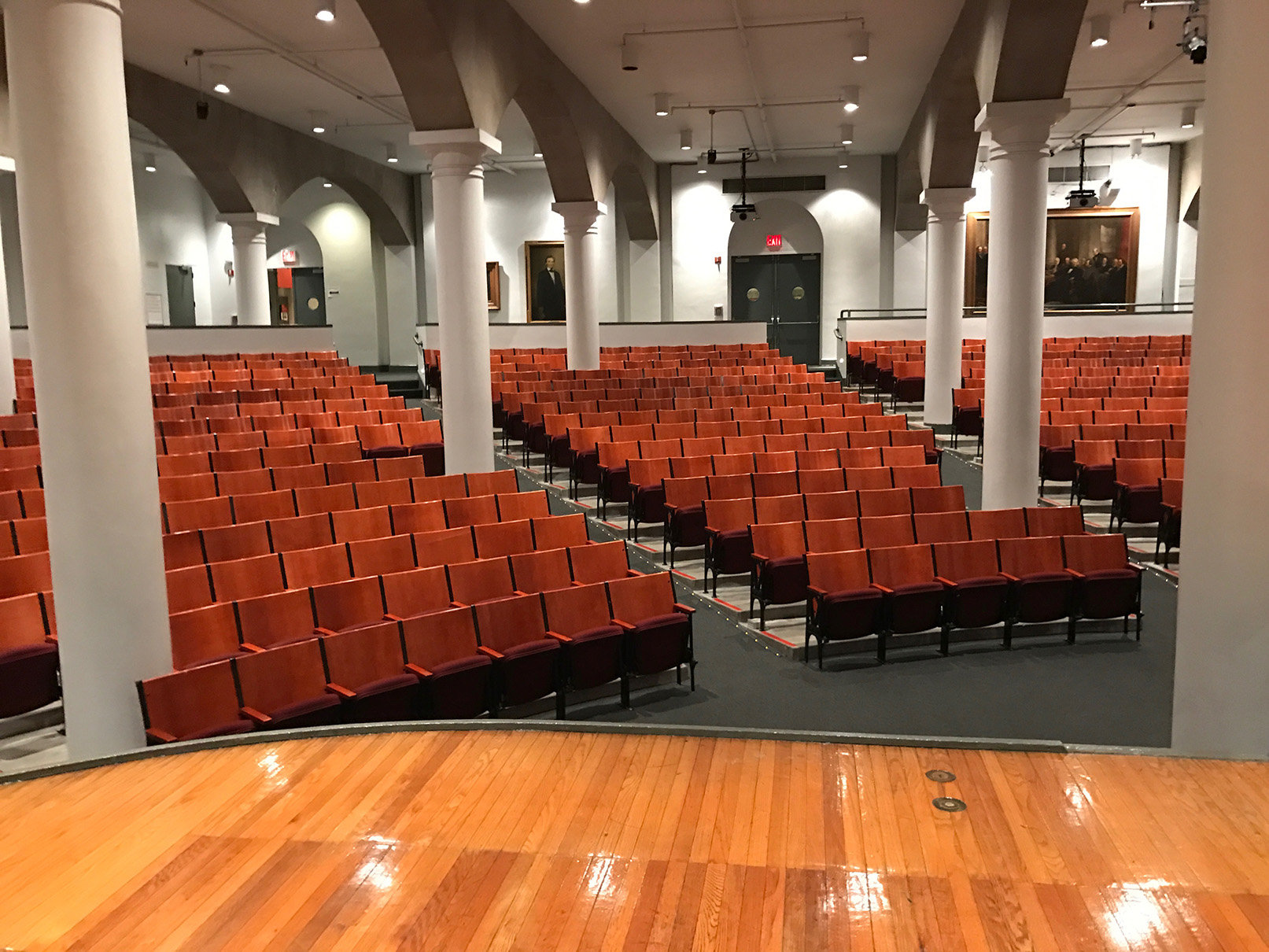

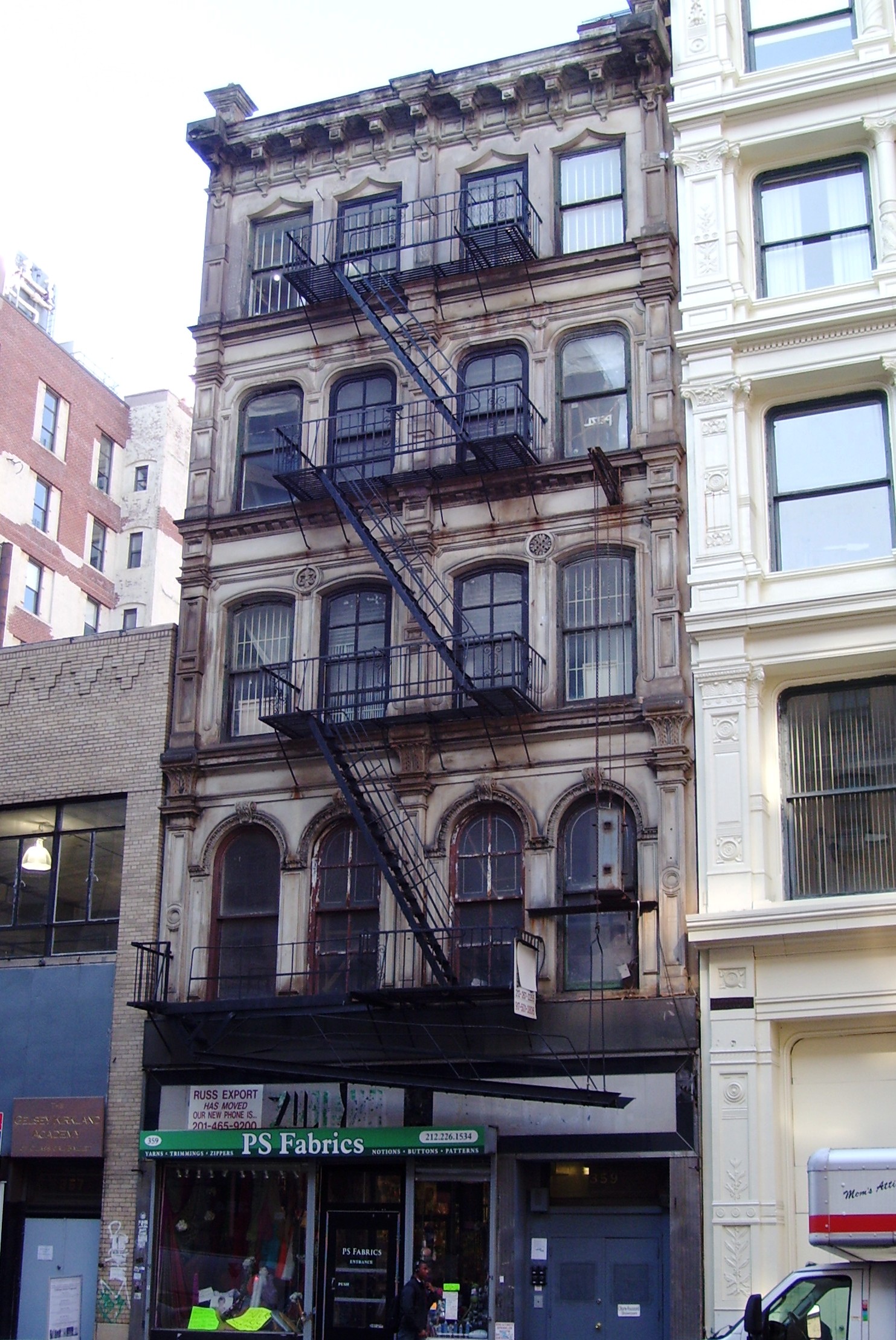
At 359 Broadway is the building that housed the studio of famous photographer, Matthew Brady, from 1853-1859. Occupying the top three floors, Brady would photograph many famous people including Abraham Lincoln.
Trinity Church at Wall Street is an active Episcopal Parish that has been part of New York history since 1696. The first Trinity church was built on this site in 1697 by a small group of Anglicans who petitioned the Royal Governor of New York for a charter granting the church legal status. Unfortunately the church was destroyed by the Great Fire of 1776 during the Revolutionary War. In 1790 the second Trinity Church was completed. President George Washington and members of his government were regular worshipers in the new Trinity building during the brief period New York City was the capital of the United States. Notable parishioners from this time include John Jay and Alexander Hamilton. In 1838 the church's support beams buckled and it was recommended that a new church be built. Today's Trinity church was consecrated on Ascension Day 1846, a fine example of Neo-Gothic architecture in the United States. With a 281-foot high steeple, Trinity was the tallest building in New York City until 1890.5 It is more famously known as the burial site of Alexander Hamilton.
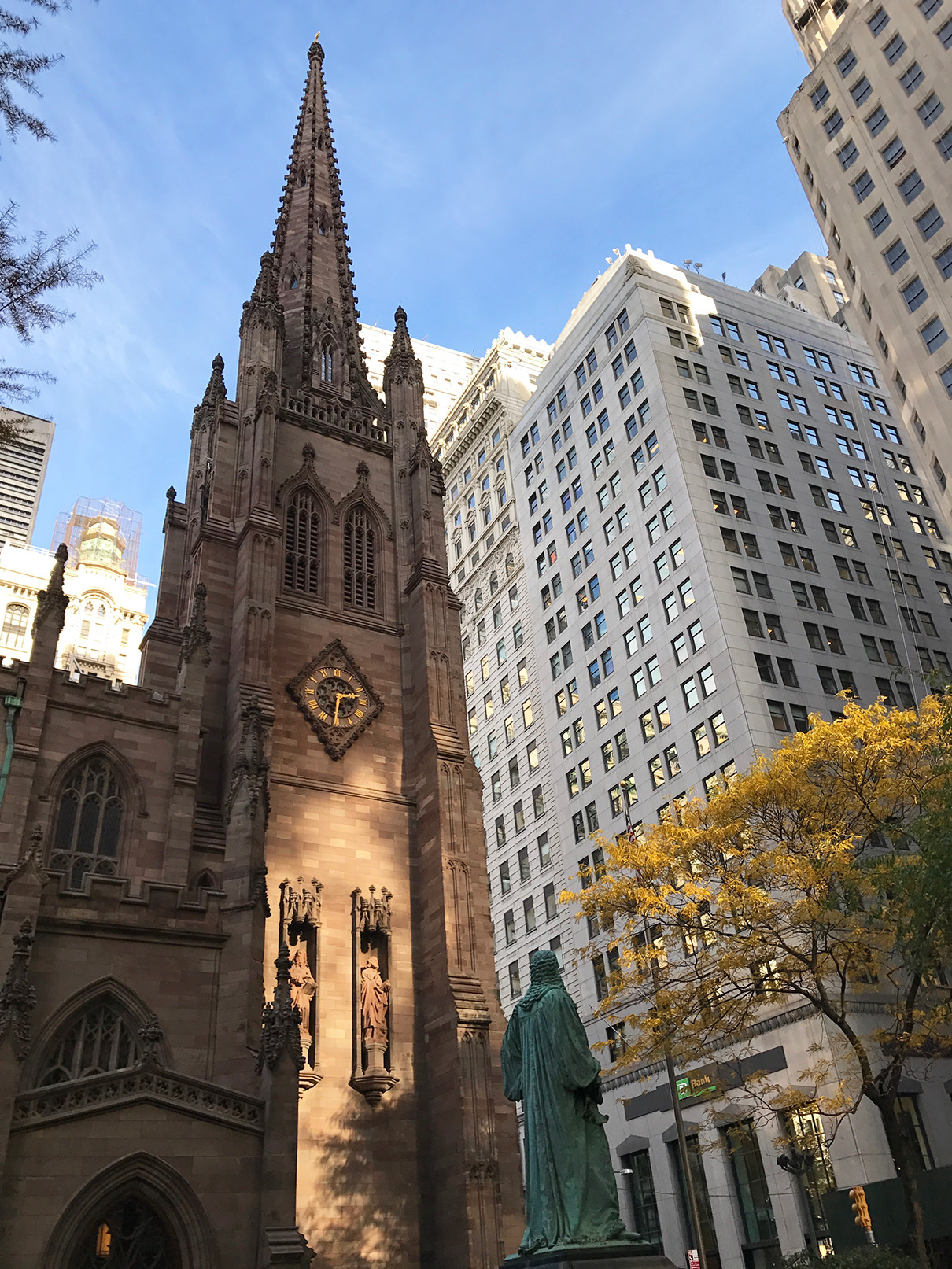
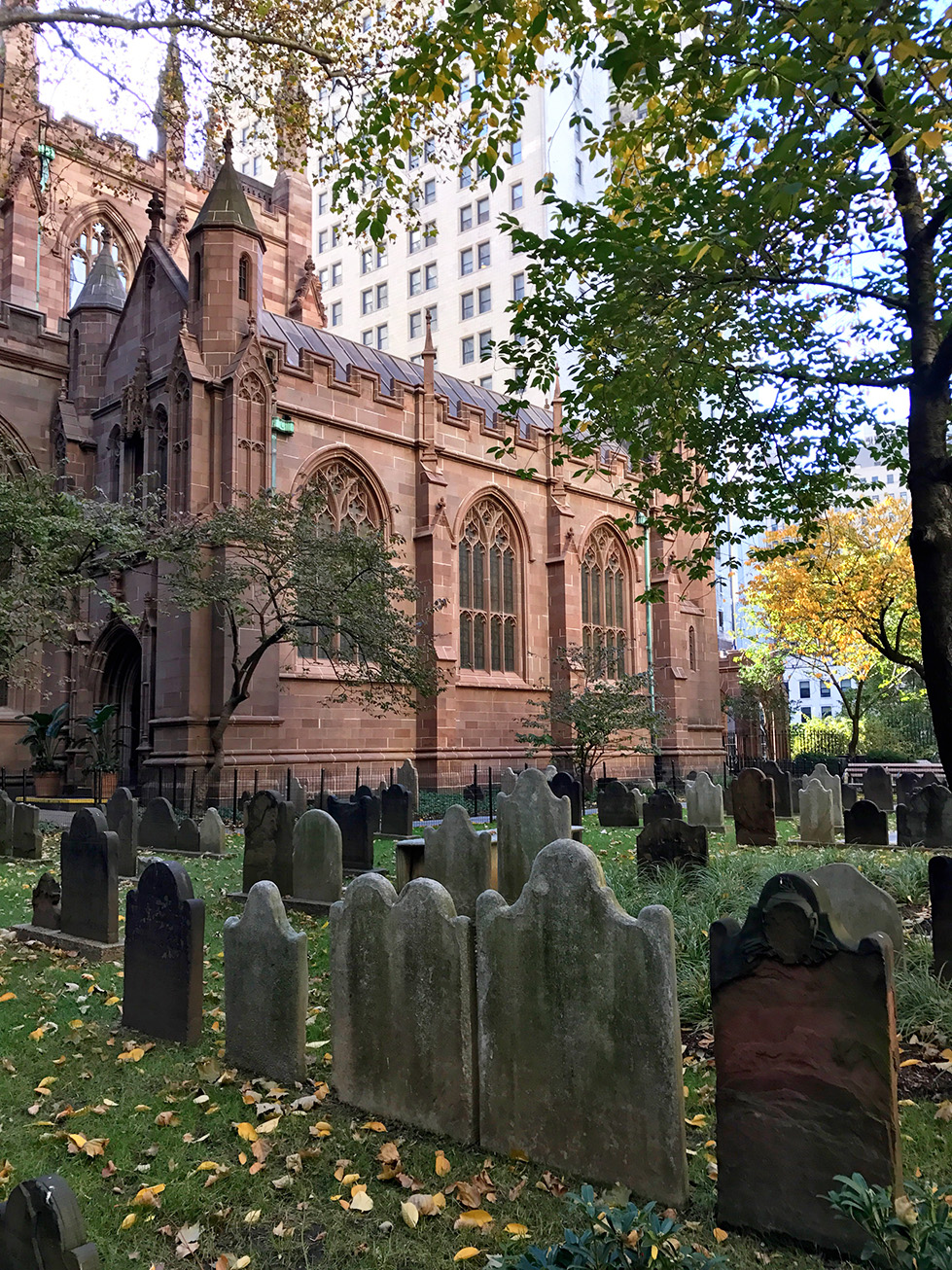
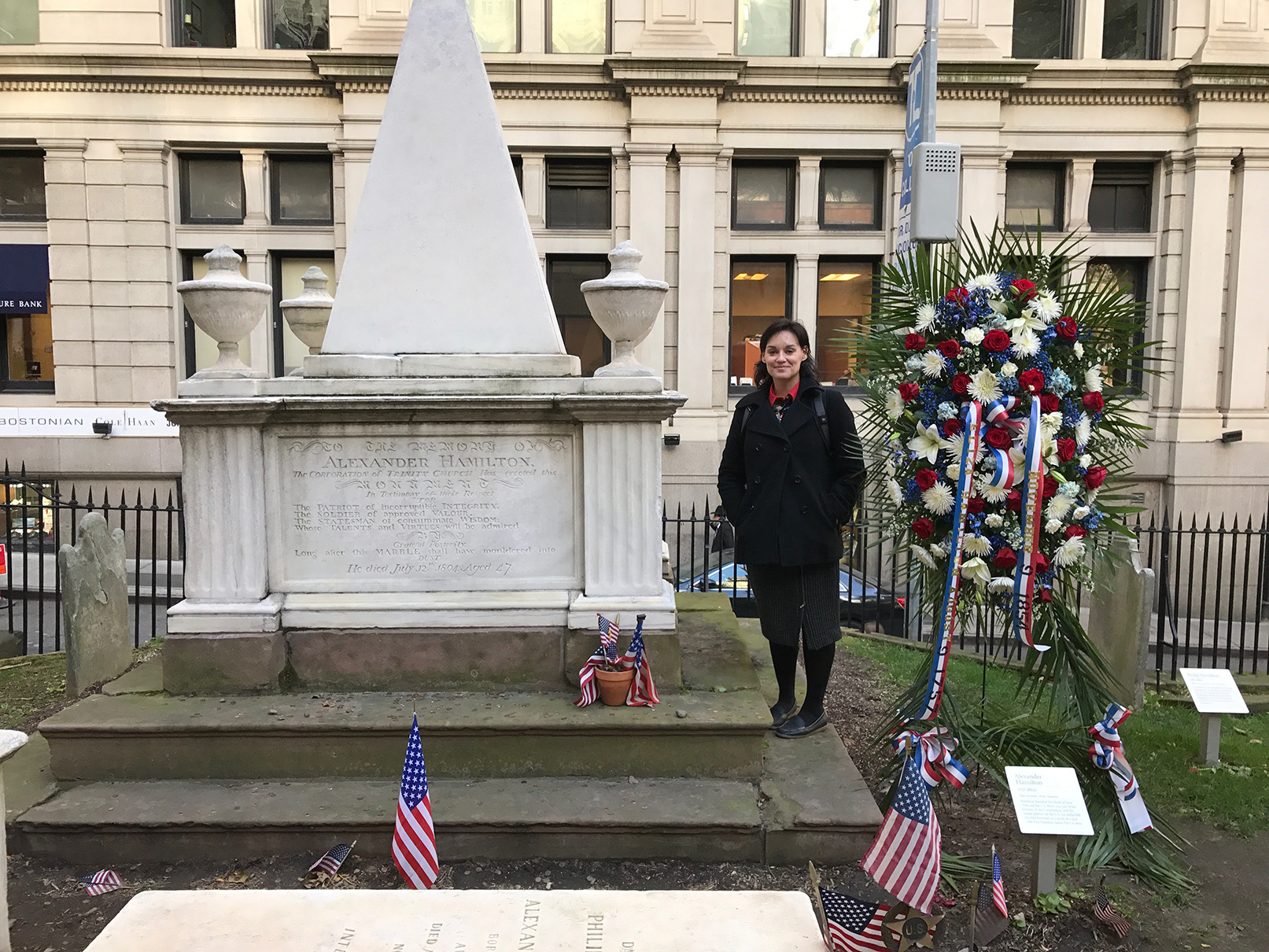 The gravesite of Alexander Hamilton.
The gravesite of Alexander Hamilton.
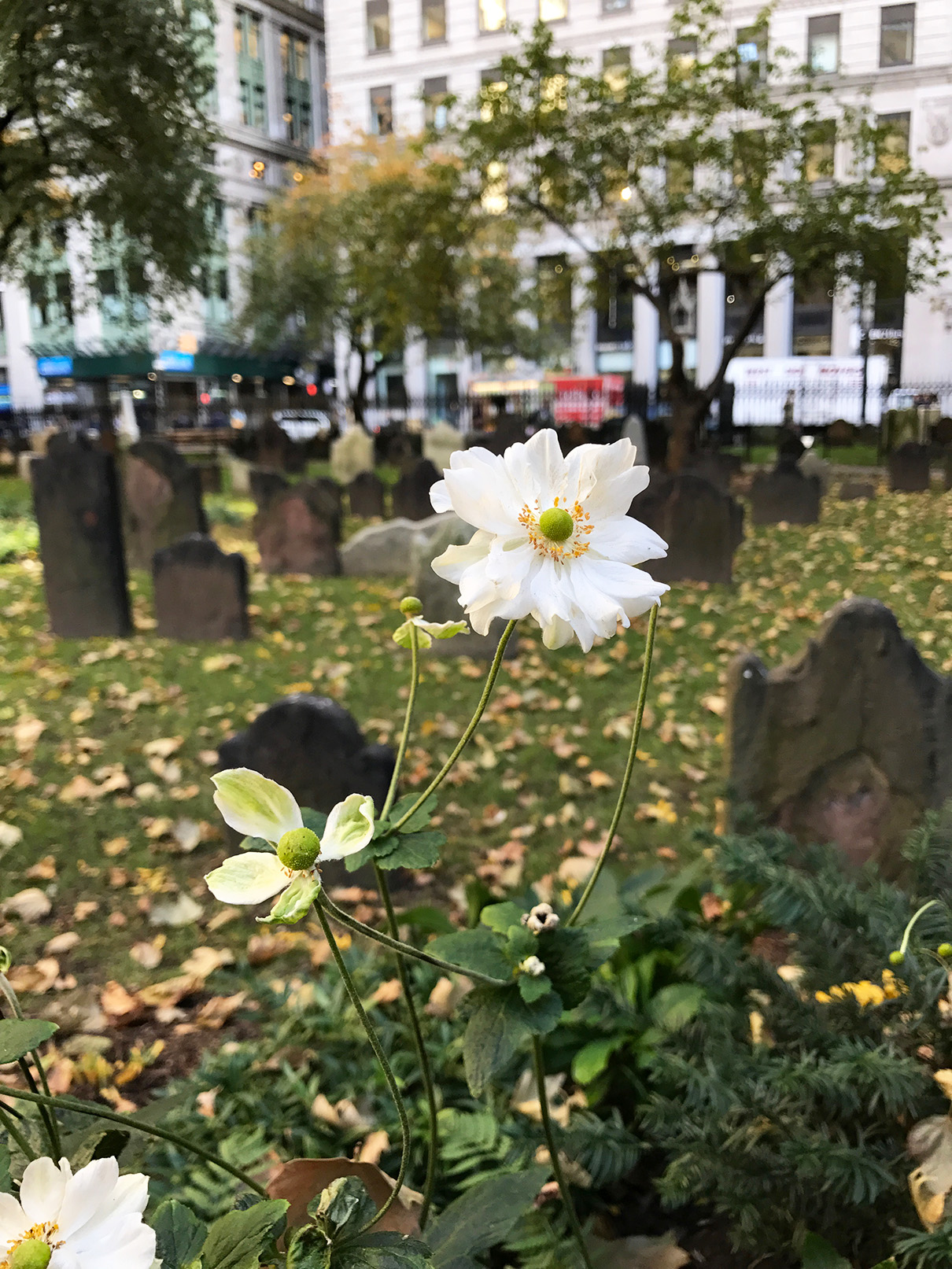
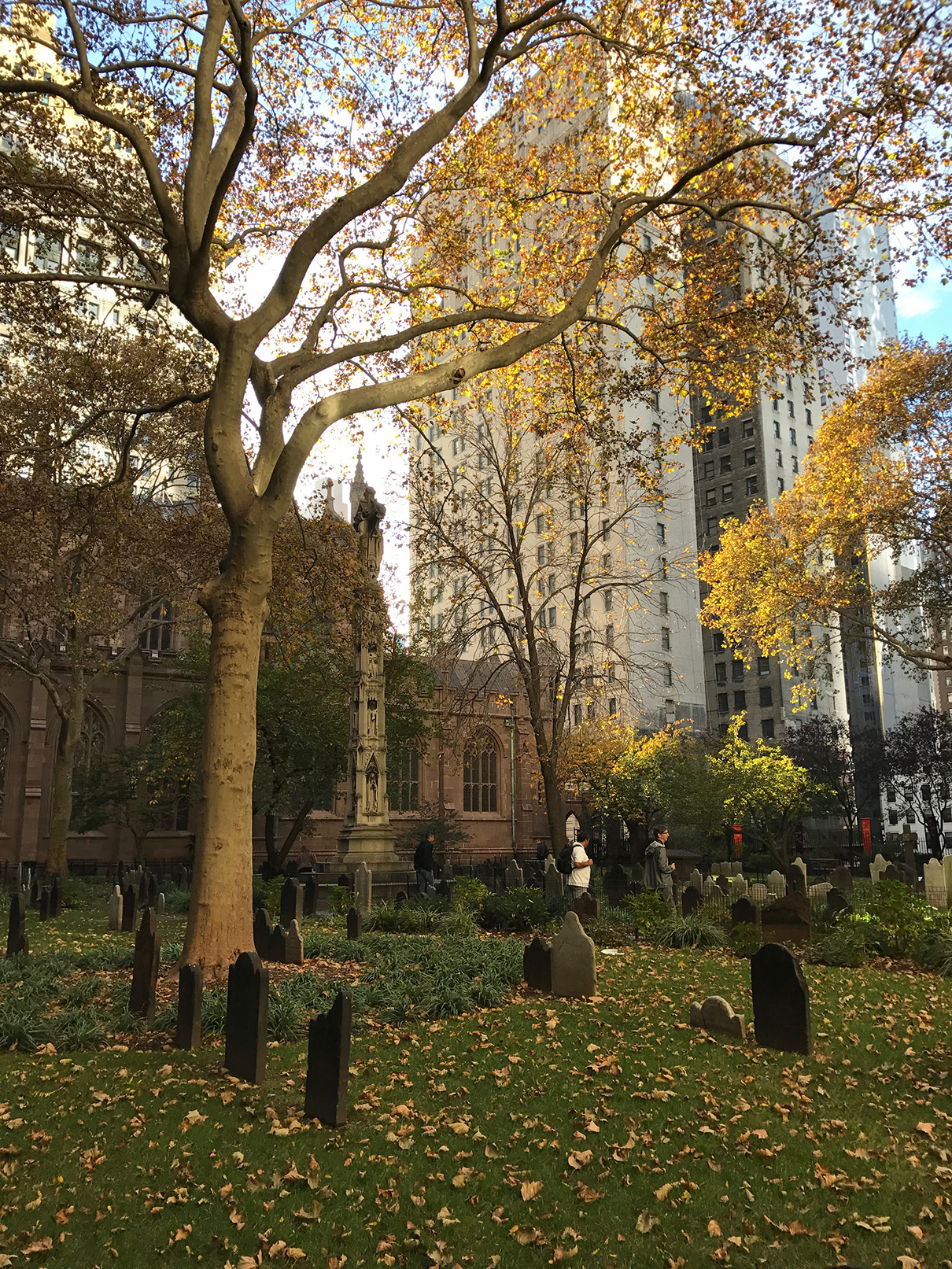 Photogenic on a fall day.
Photogenic on a fall day.
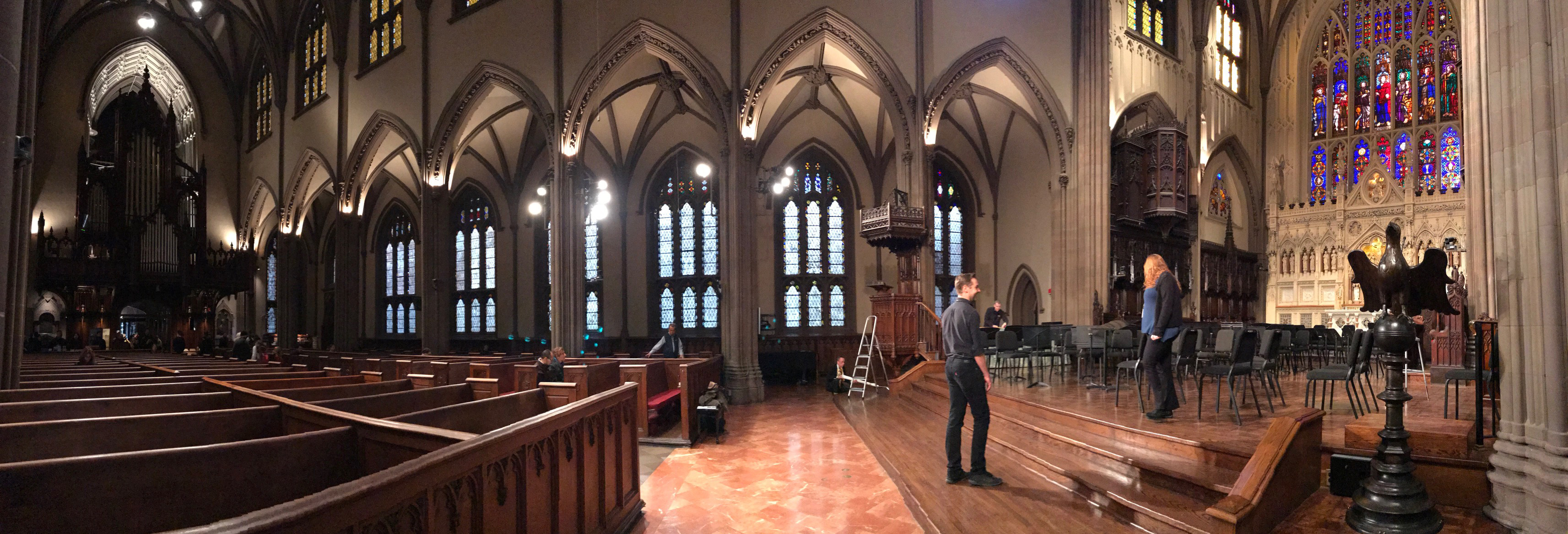 Interior
Interior
When it first opened in 1766 as an outreach chapel of Trinity Church (photos above) to better serve its expanding congregation, St. Paul’s was a “chapel-of-ease” for those who did not want to walk a few blocks south along unpaved streets to Trinity. A decade later, the Great Fire of 1776 destroyed the first Trinity Church down the street, but St. Paul’s survived, thanks to a bucket brigade dousing the building with water. Following his inauguration as President of the United States in 1789, George Washington prayed in St. Paul’s Chapel. The oldest surviving church in Manhattan, it celebrated its 250th anniversary in October 2016.
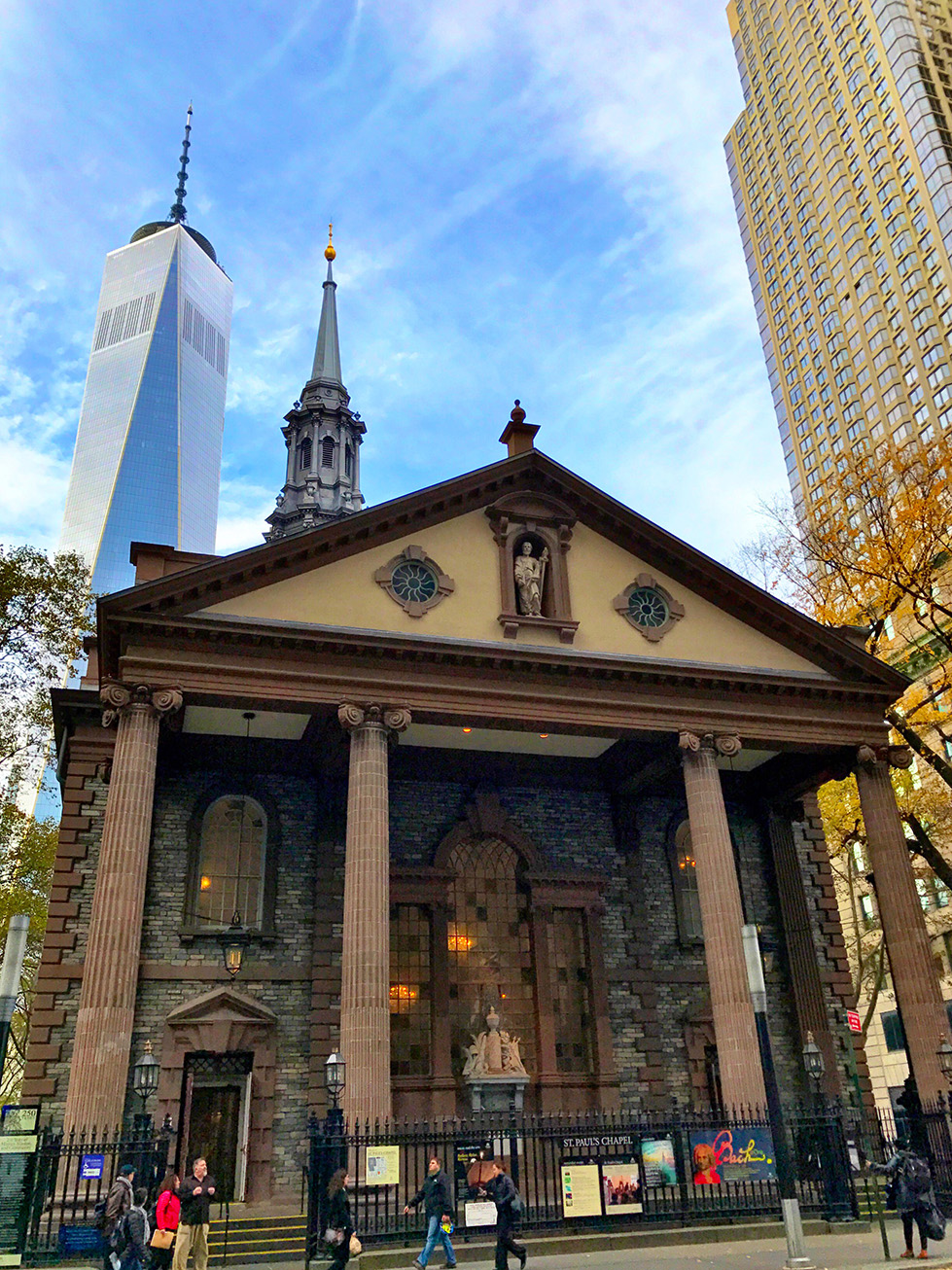
Federal Hall, located on Wall Street, is the site of George Washington's inauguration with this stone slab, located inside the building, commemorating the event.
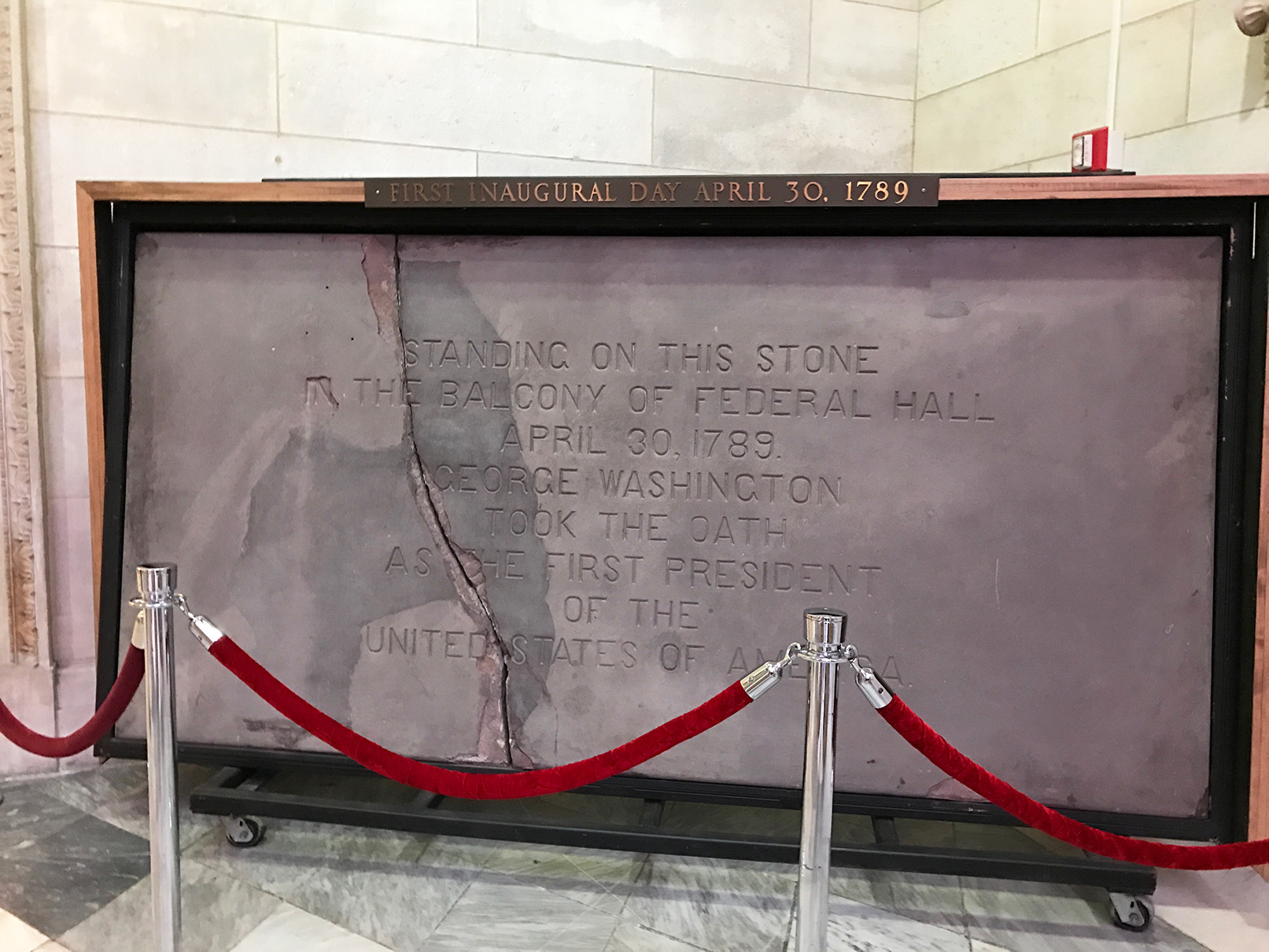
This visit to New York was especially planned so we could visit Carnegi Deli for the first - and last time. Opening in 1937, the deli closed its doors on December 31, 2016. It was the end of an era, but thankfully my husband and I finally got to eat the famous pastrami sandwich.
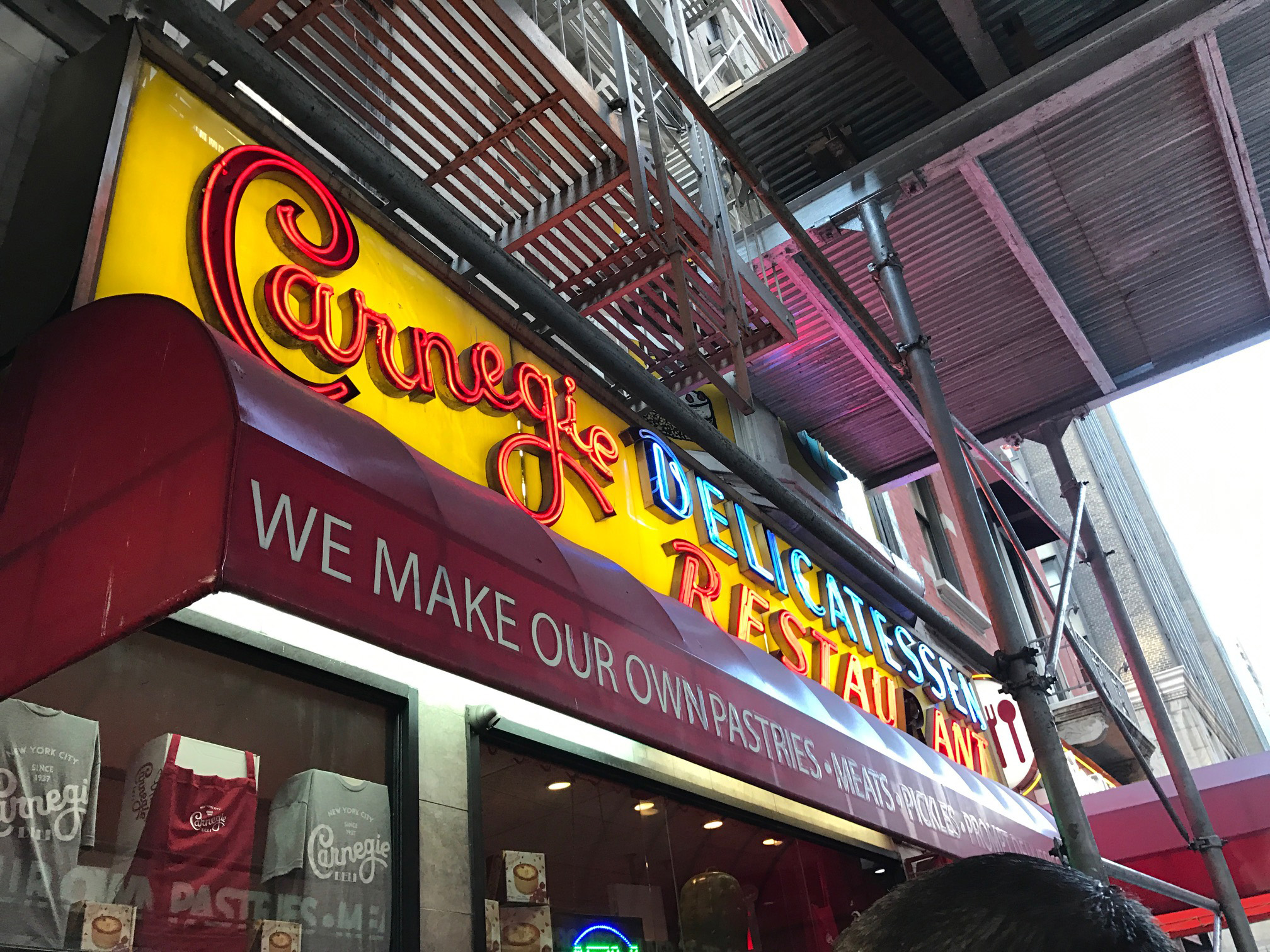
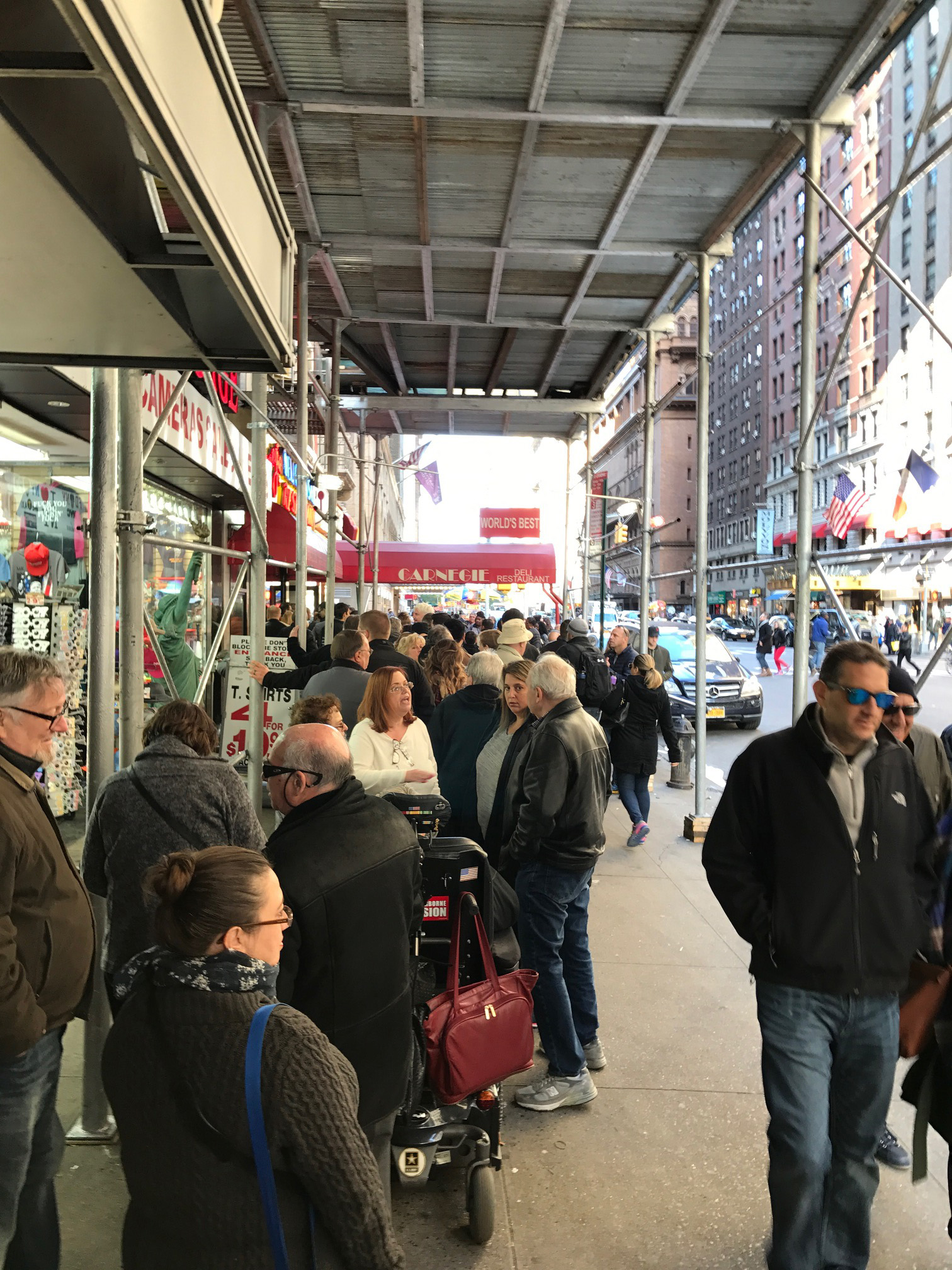 The line to get in, we waited an hour and a half.
The line to get in, we waited an hour and a half.
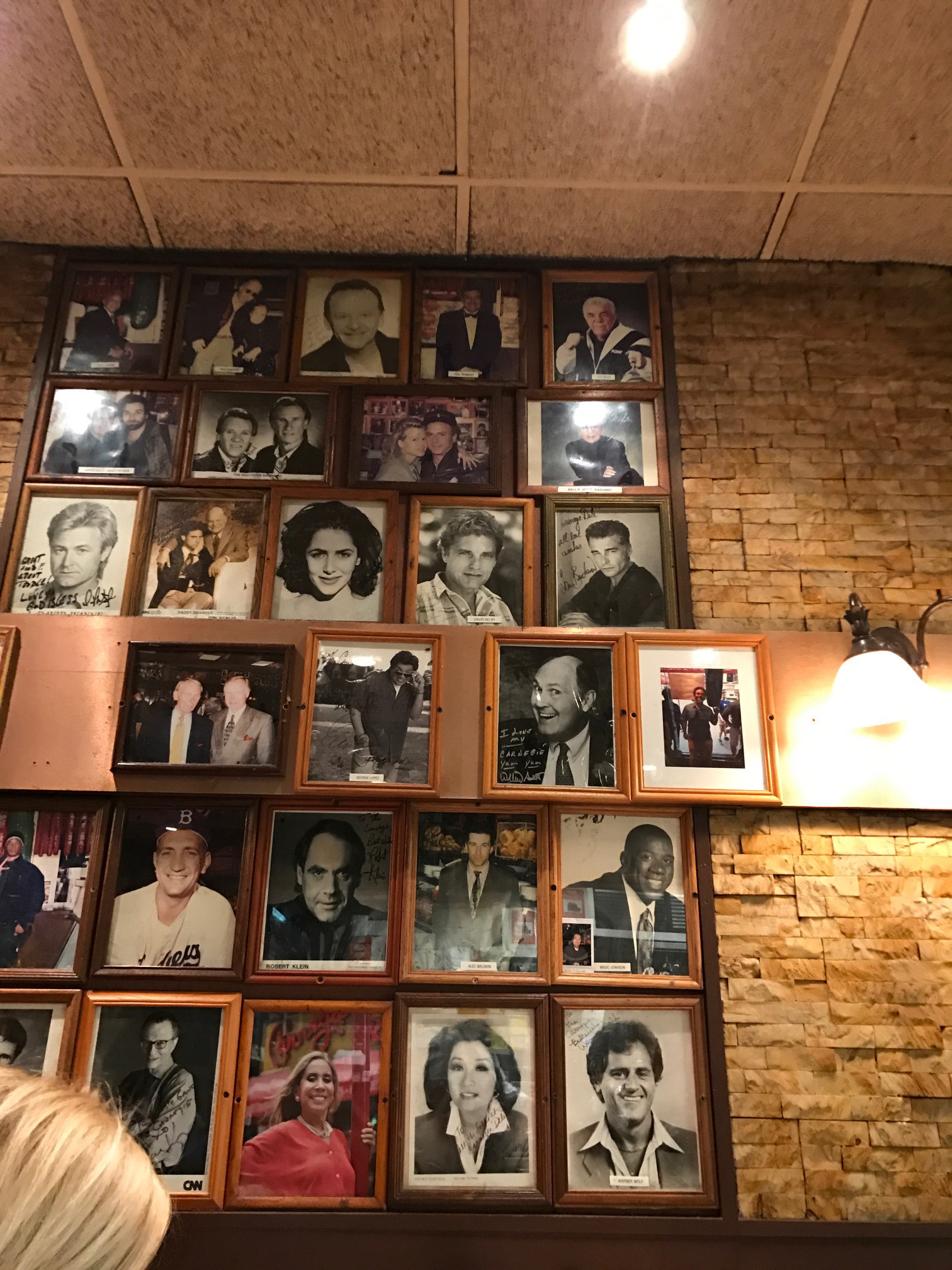
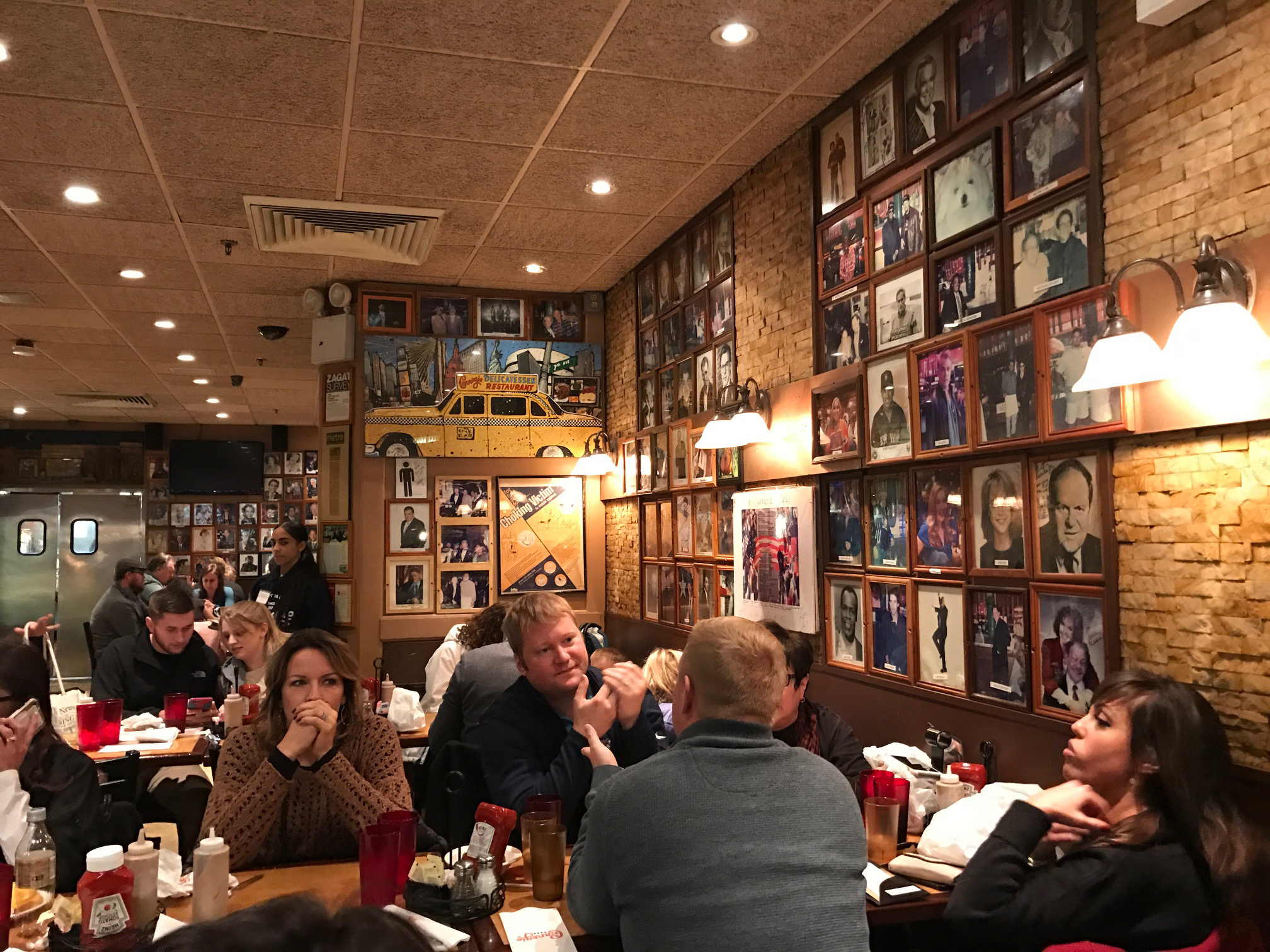
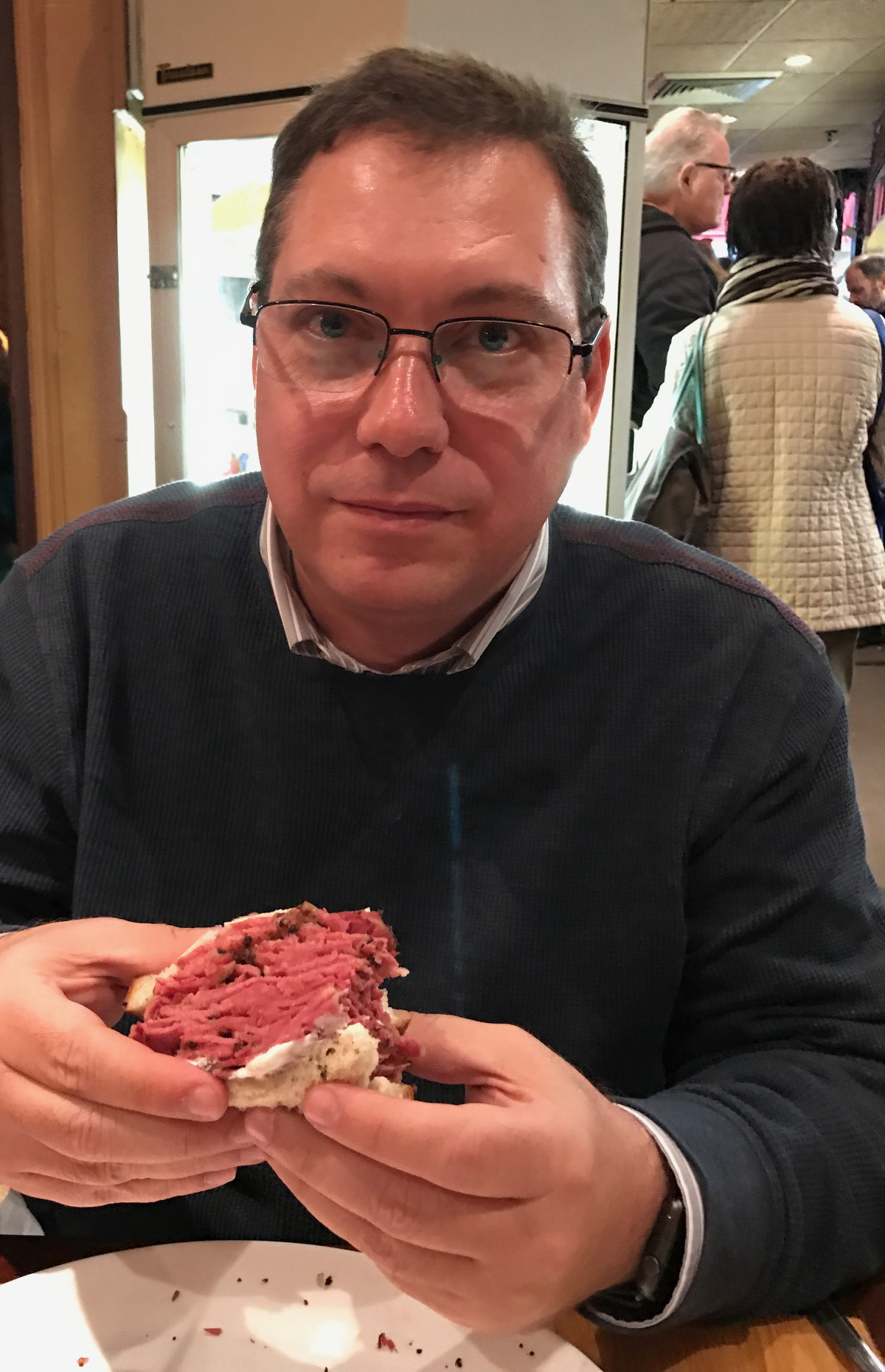
According to Wikipedia, "the New York Public Library is the second largest public library in the United States (behind the Library of Congress), and fourth largest in the world."6 The cornerstone of the library was laid in 1902 with the official opening in 1911. During our visit, I took a few photos of the newly renovated Rose Main Reading Room’s ornate ceiling and the Bill Blass Public Catalog Room’s mural. The Rose room is where, "For more than 100 years, the reading room has supported many internationally renowned writers, journalists, historians, Nobel Laureates, and Pulitzer Prize winners, as well as inventors, activists, and students in gathering information, advancing knowledge, honing their craft, deepening their understanding of the human experience, and advancing knowledge."7
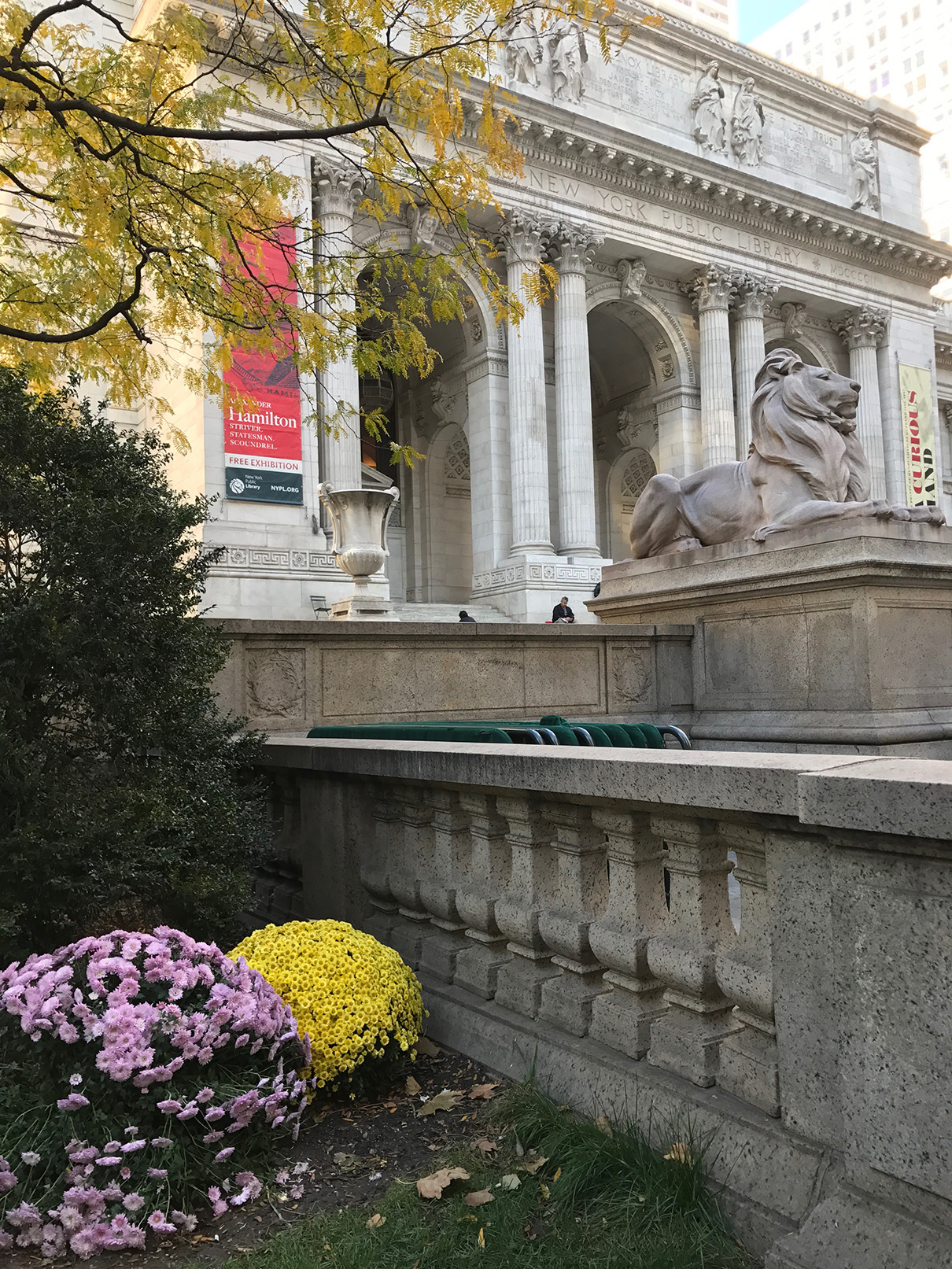
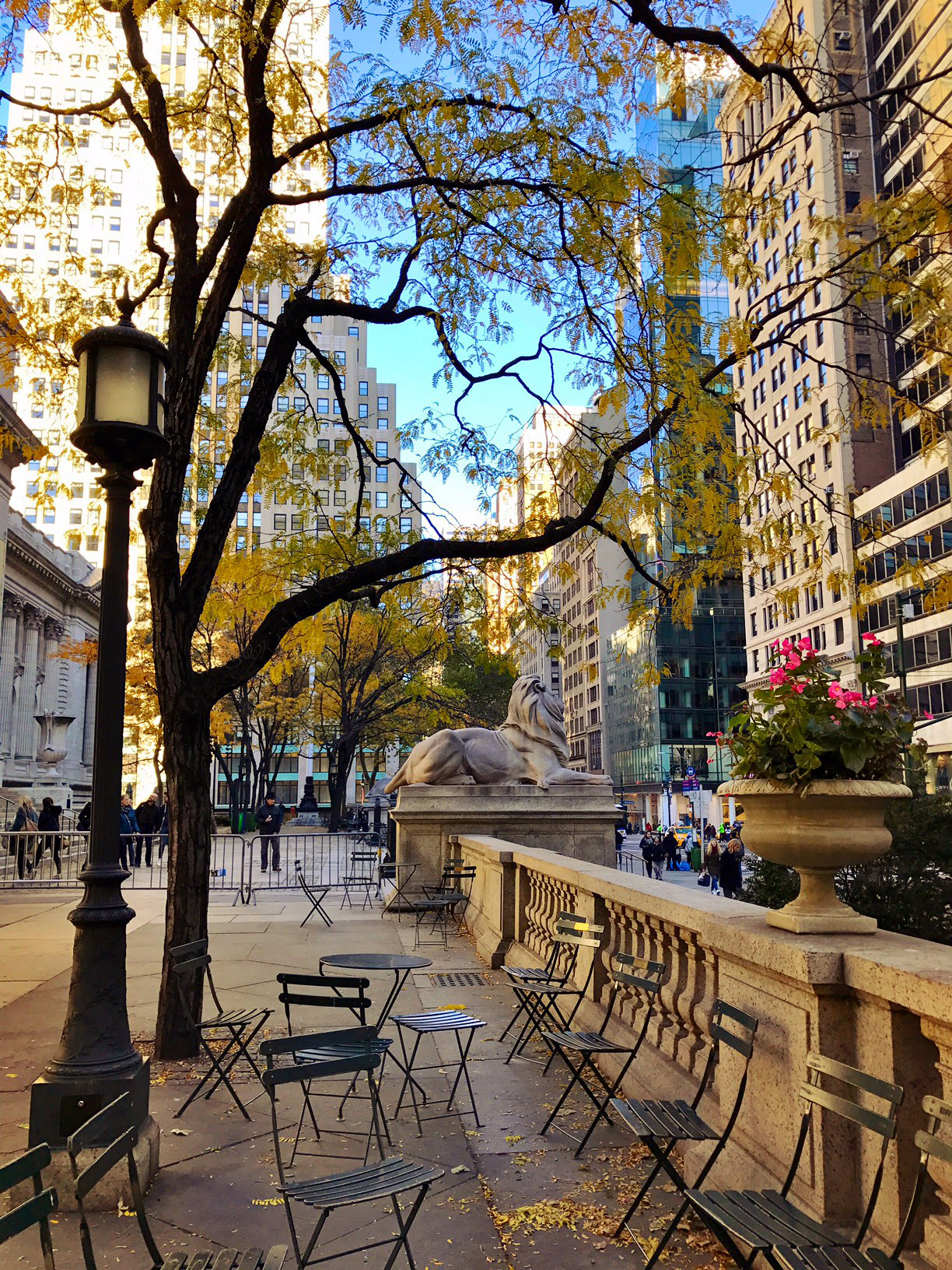
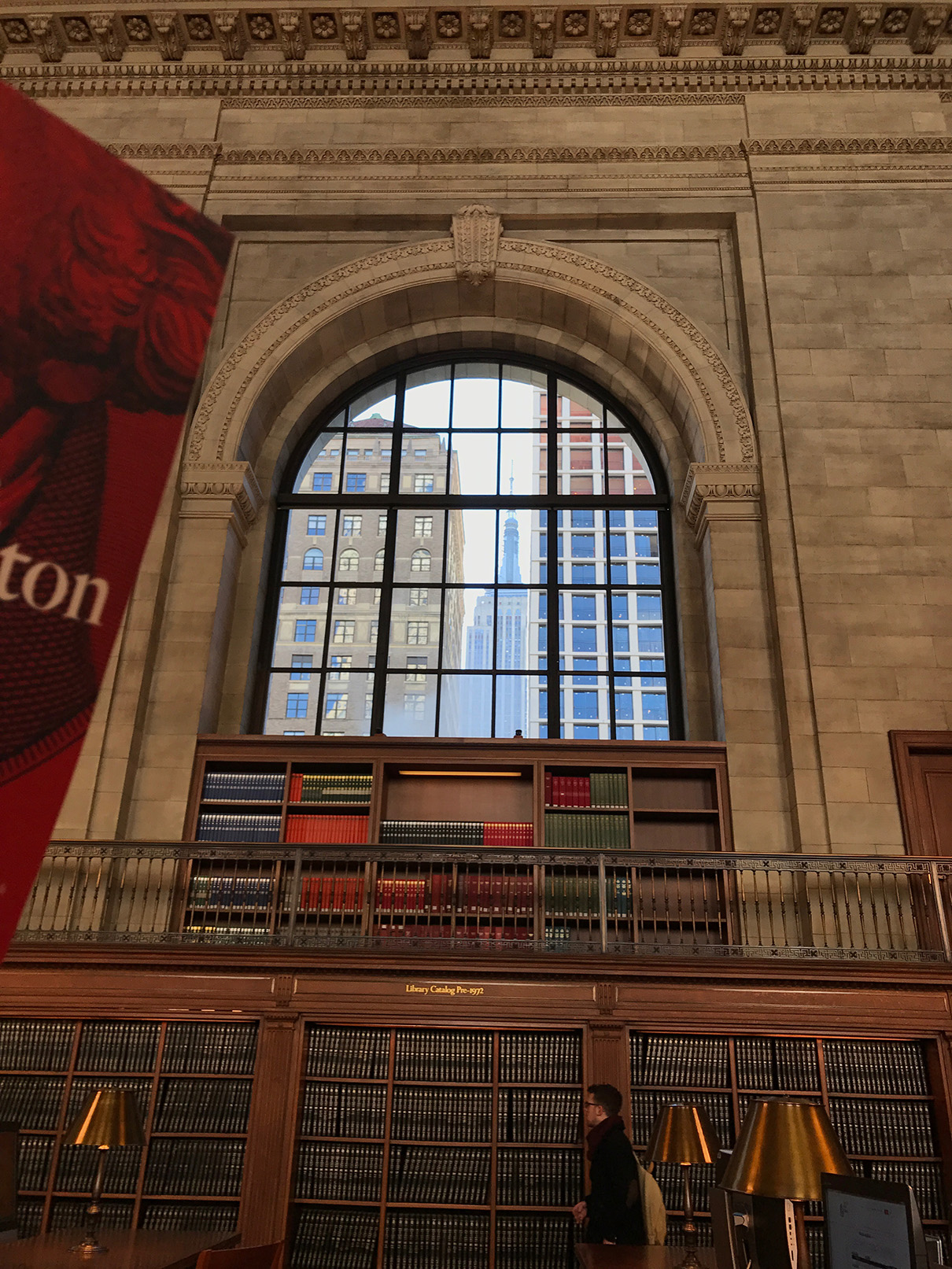 A view of the Empire State Building through the window.
A view of the Empire State Building through the window.
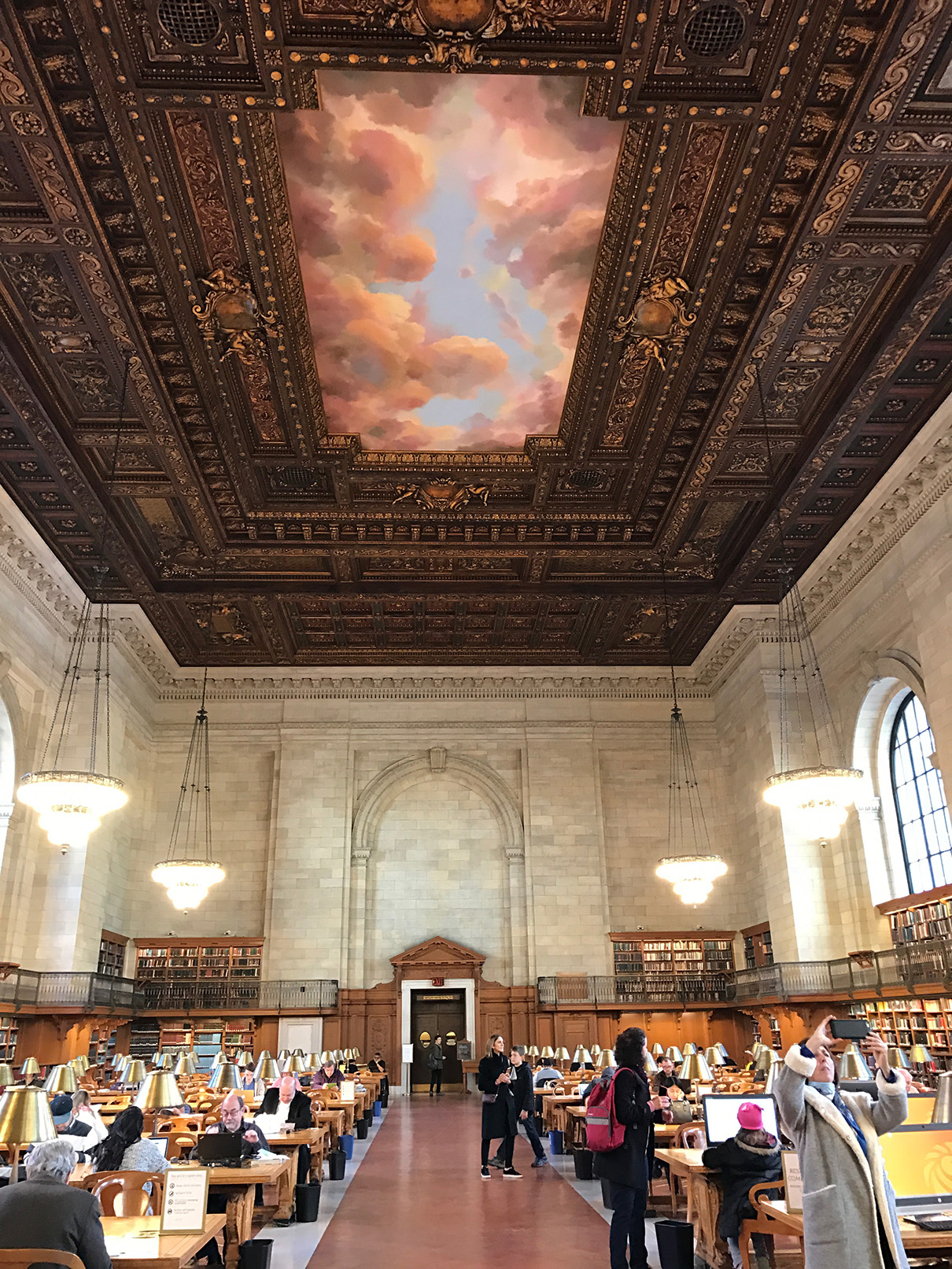 Rose room ceiling.
Rose room ceiling.
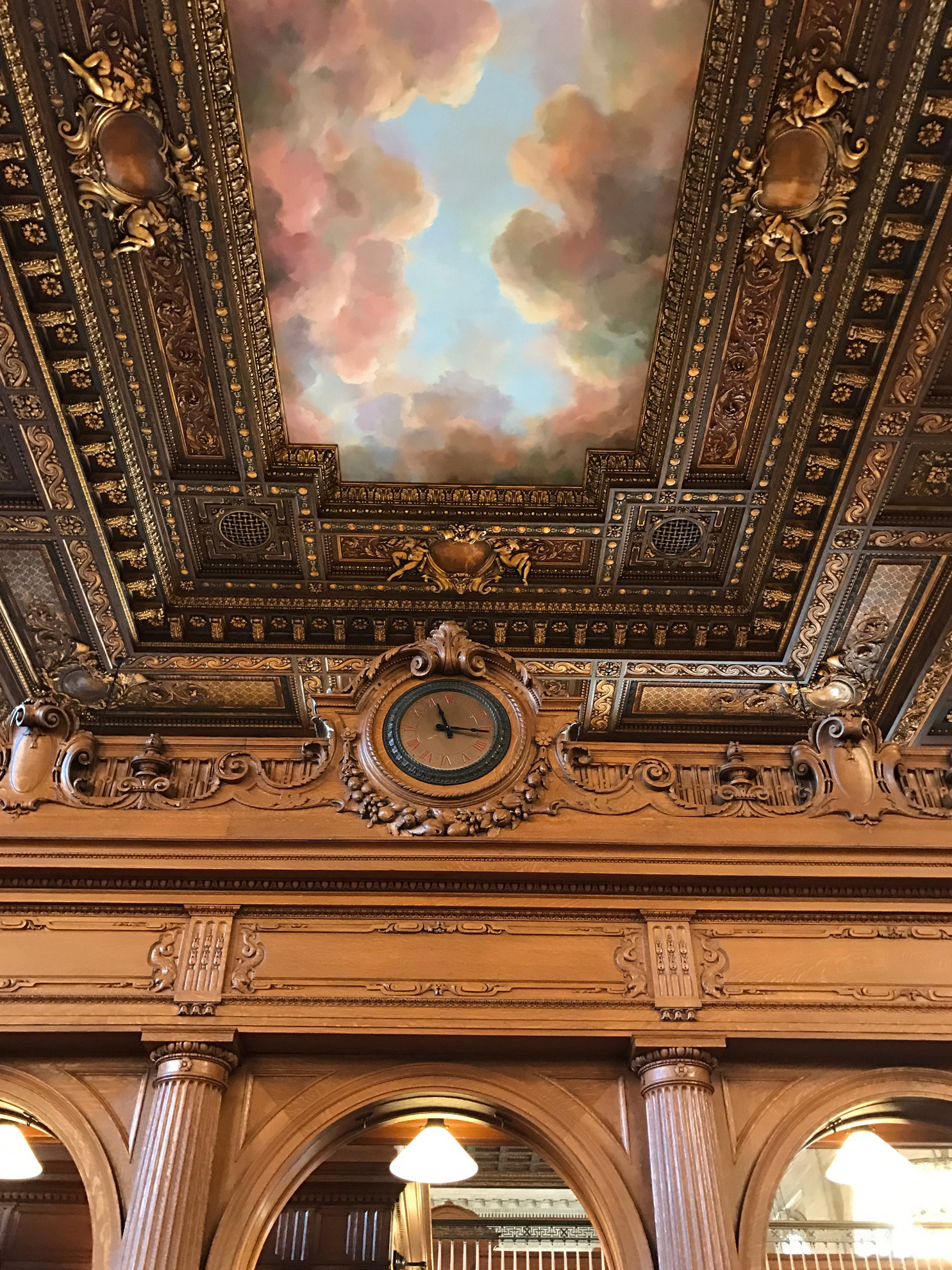
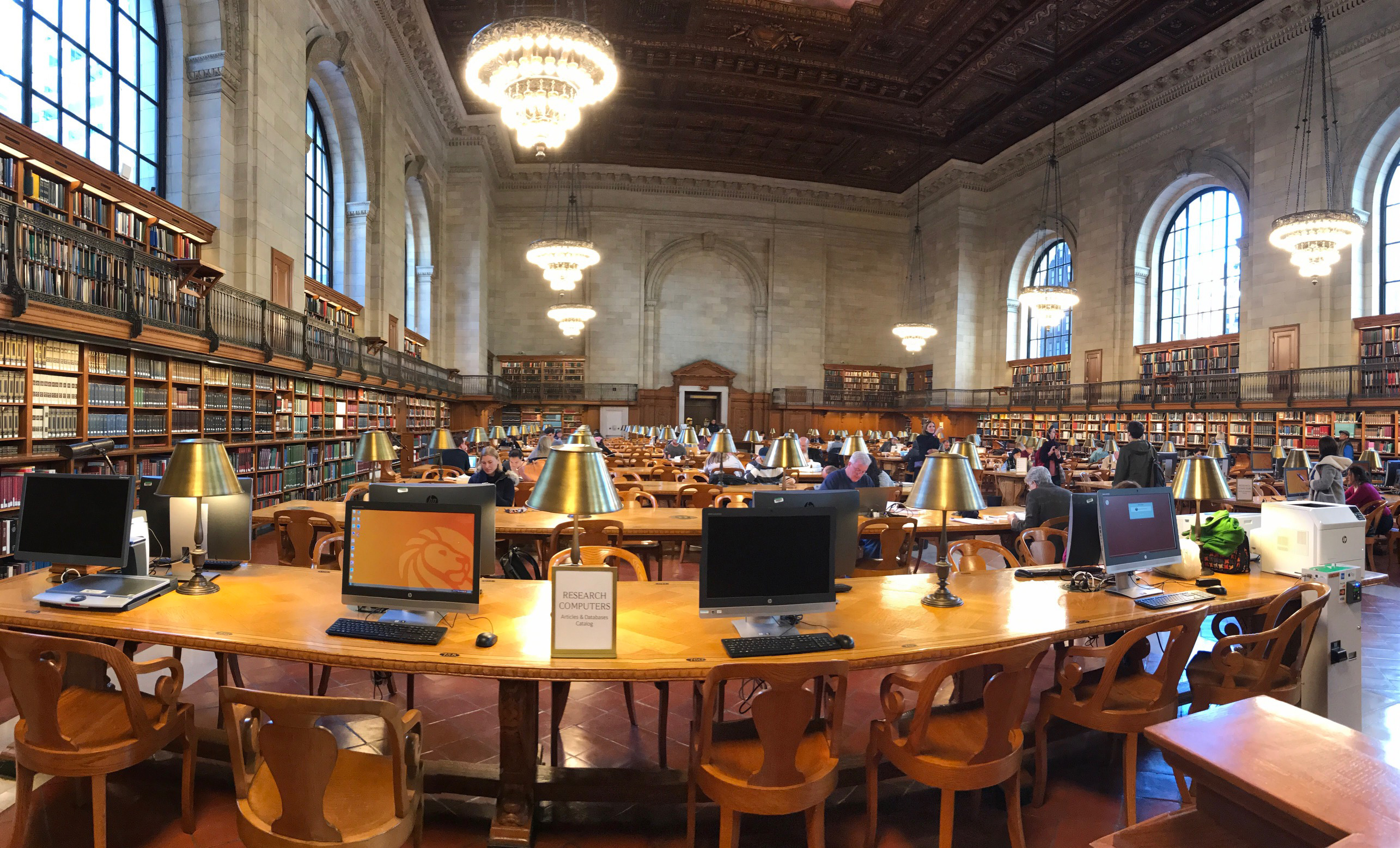
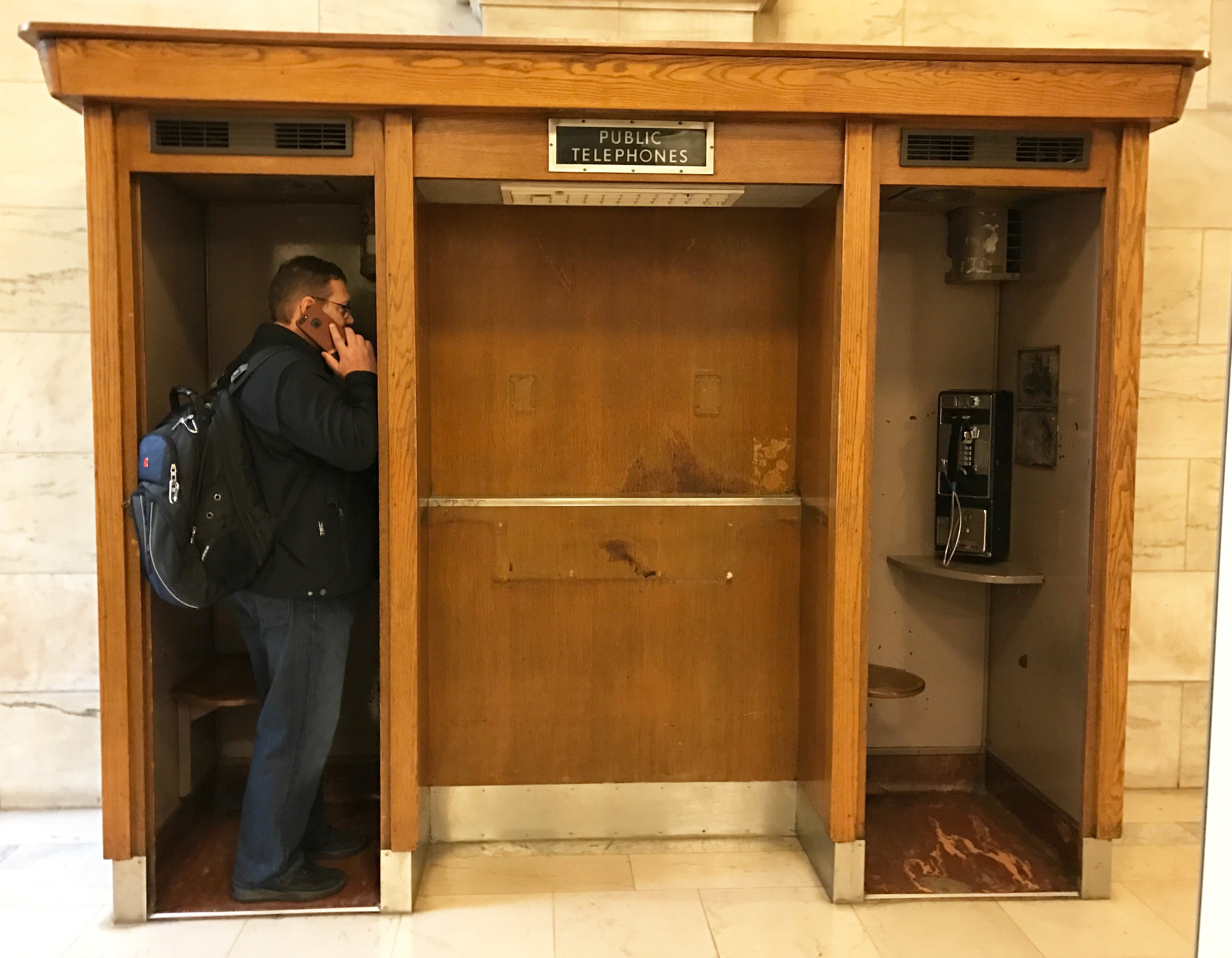 The genuine old phone booth was cool.
The genuine old phone booth was cool.
The River Cafe opened in 1977 replacing the abandoned Brooklyn docks under the Brooklyn Bridge. Though not centuries old, I included it because of its lovely surroundings.
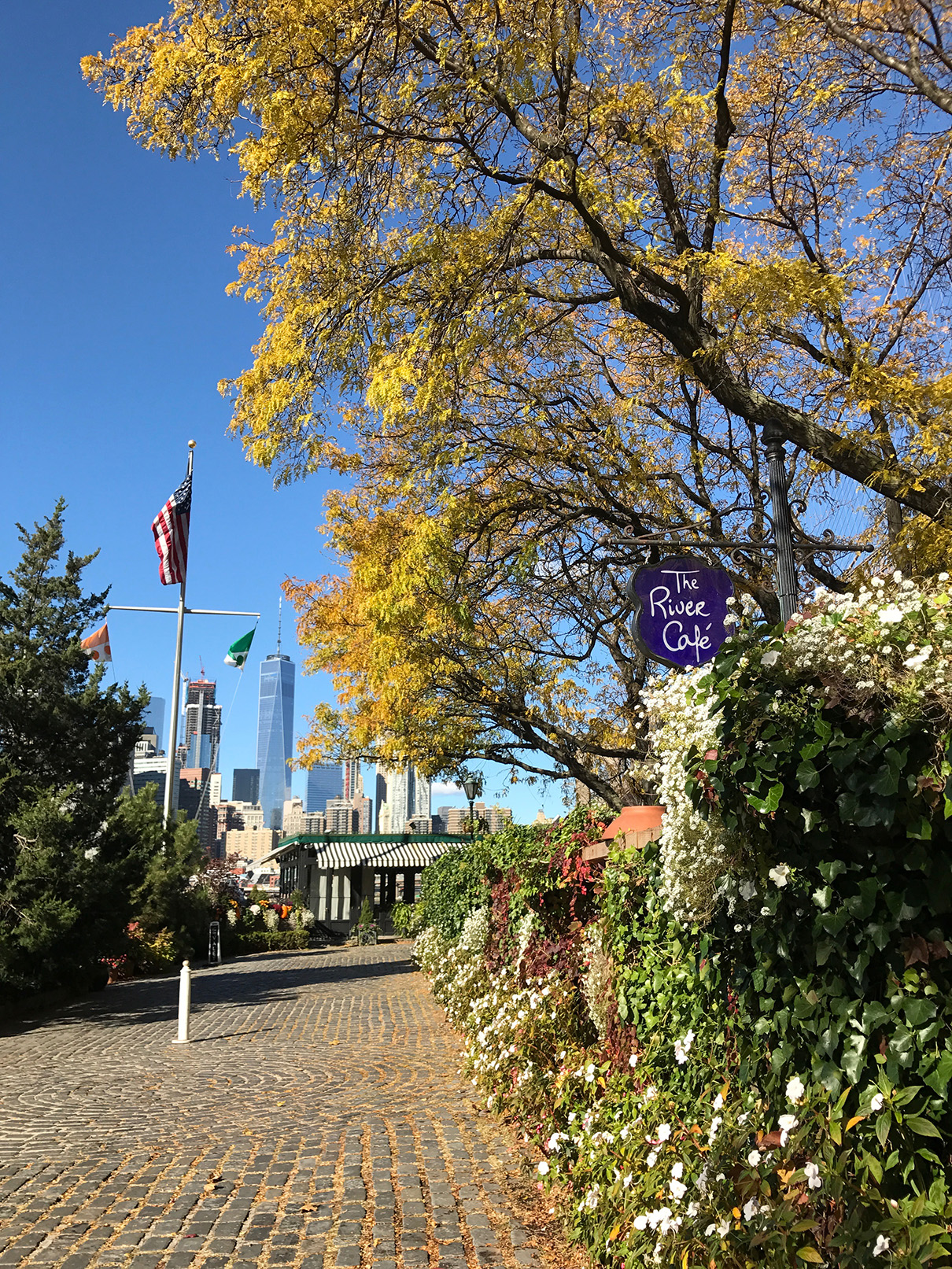
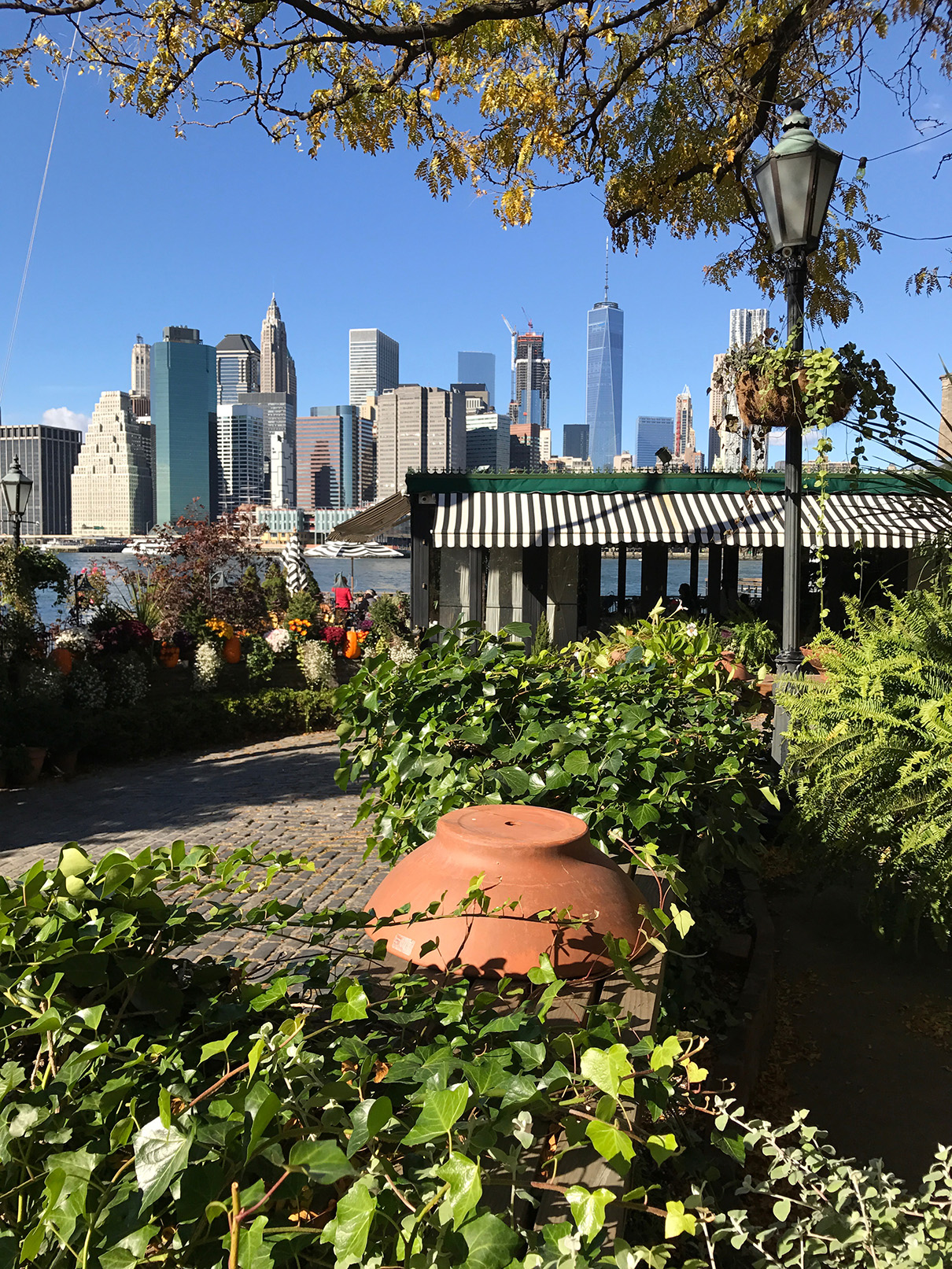
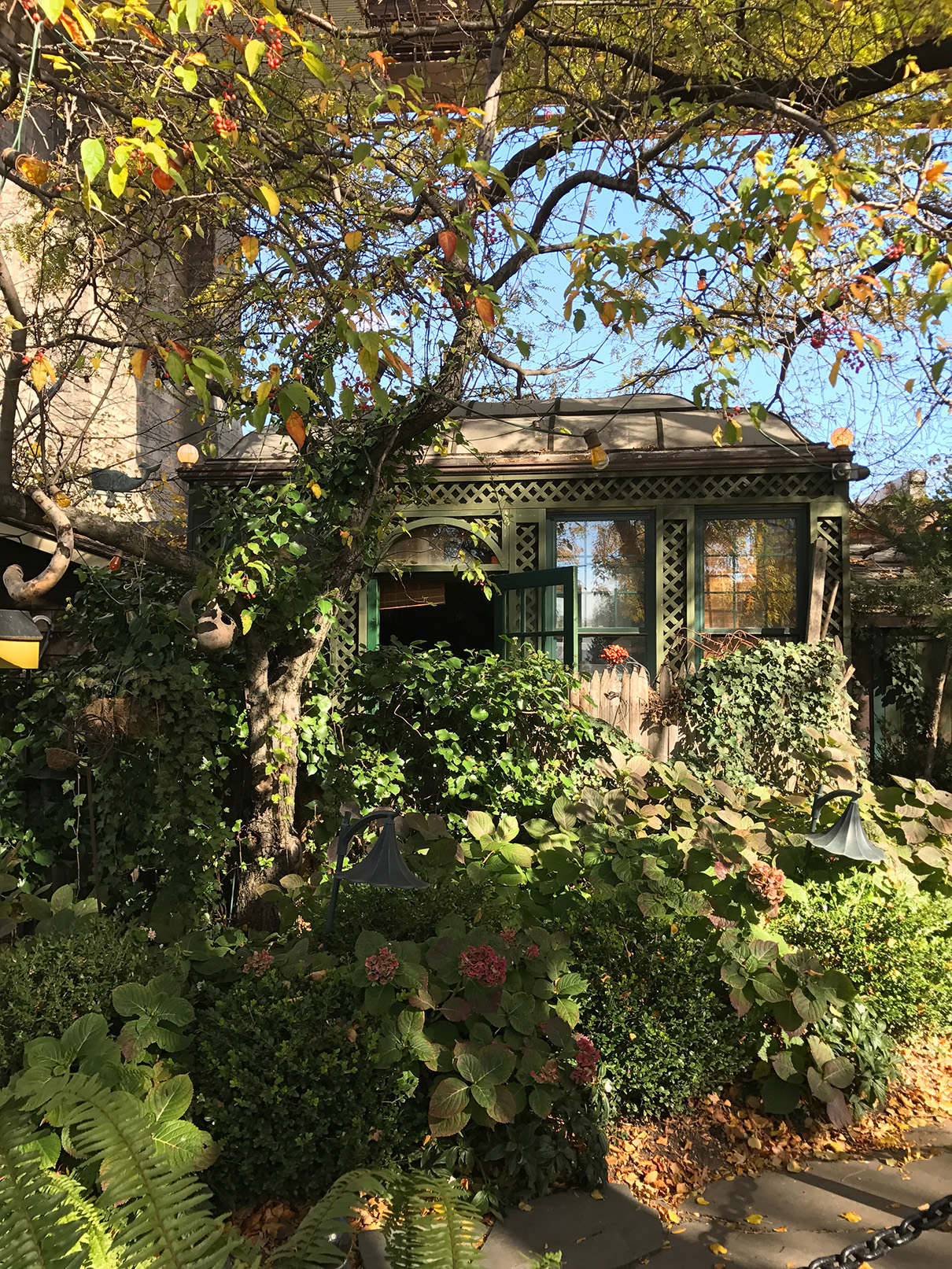
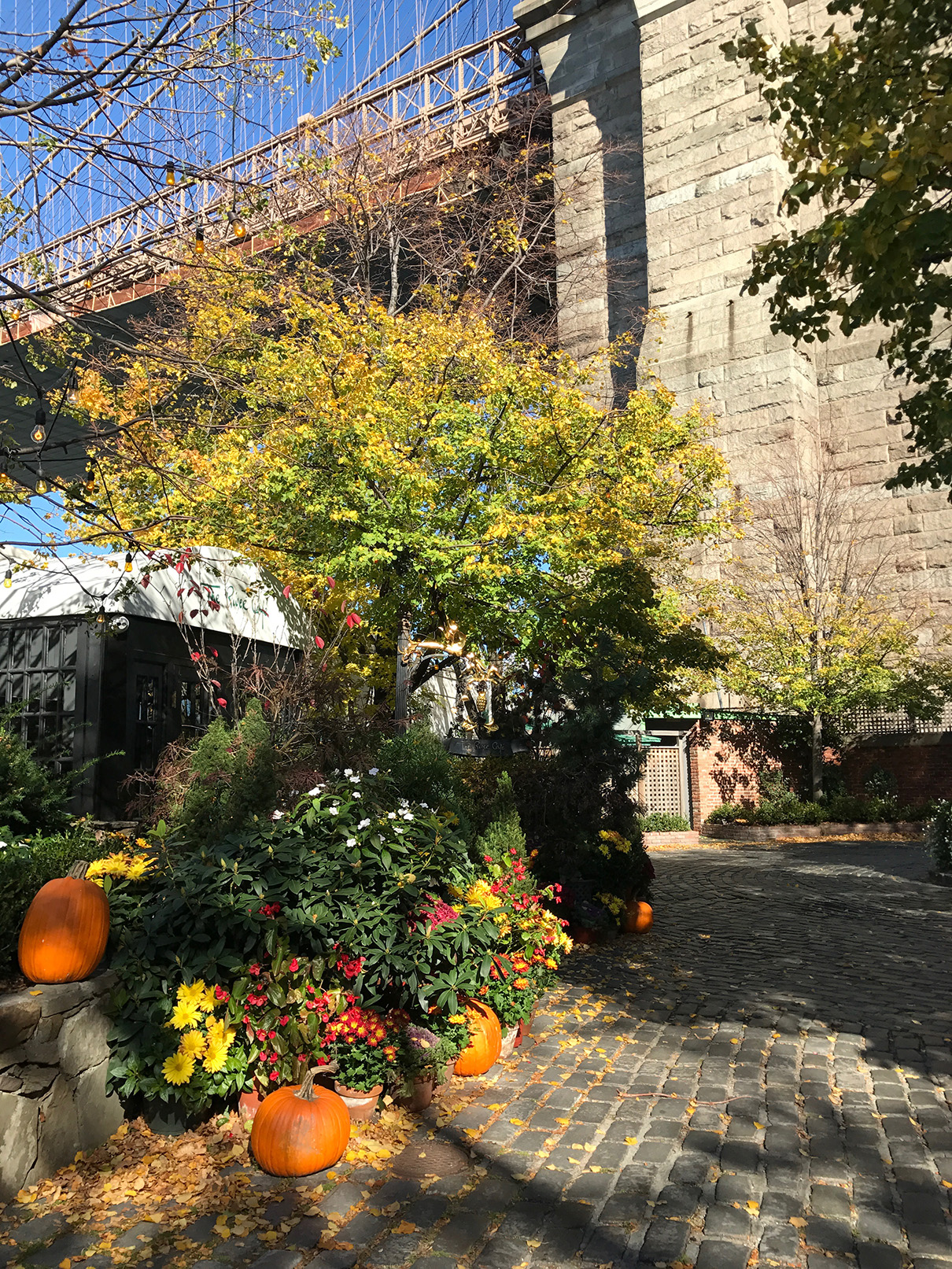
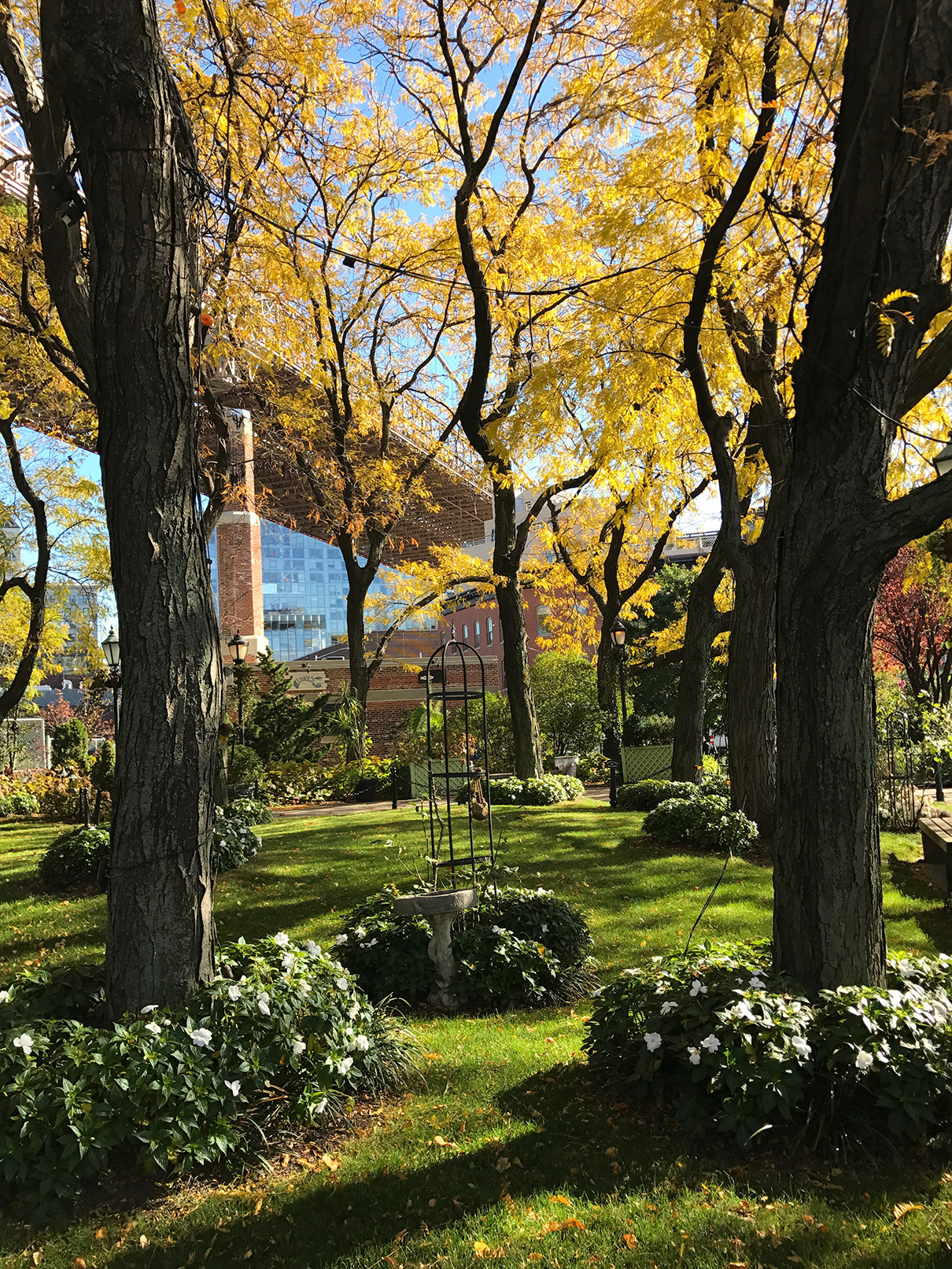
McSorley's Old Ale House in New York City has served many famous patrons (Abraham Lincoln, Teddy Roosevelt) over the years (starting 1854). Unfortunately, due to a temporary closure by the health department, I was not able to go in and see the unique Victorian era decor that still graces the walls (though I took a photo through the window). McSorley's did not allow women until 1970 and even though the owner was a woman (for a period of time), she never went in during operating hours. It is thought that Abraham Lincoln grabbed a pint here after his speech at Cooper Union.
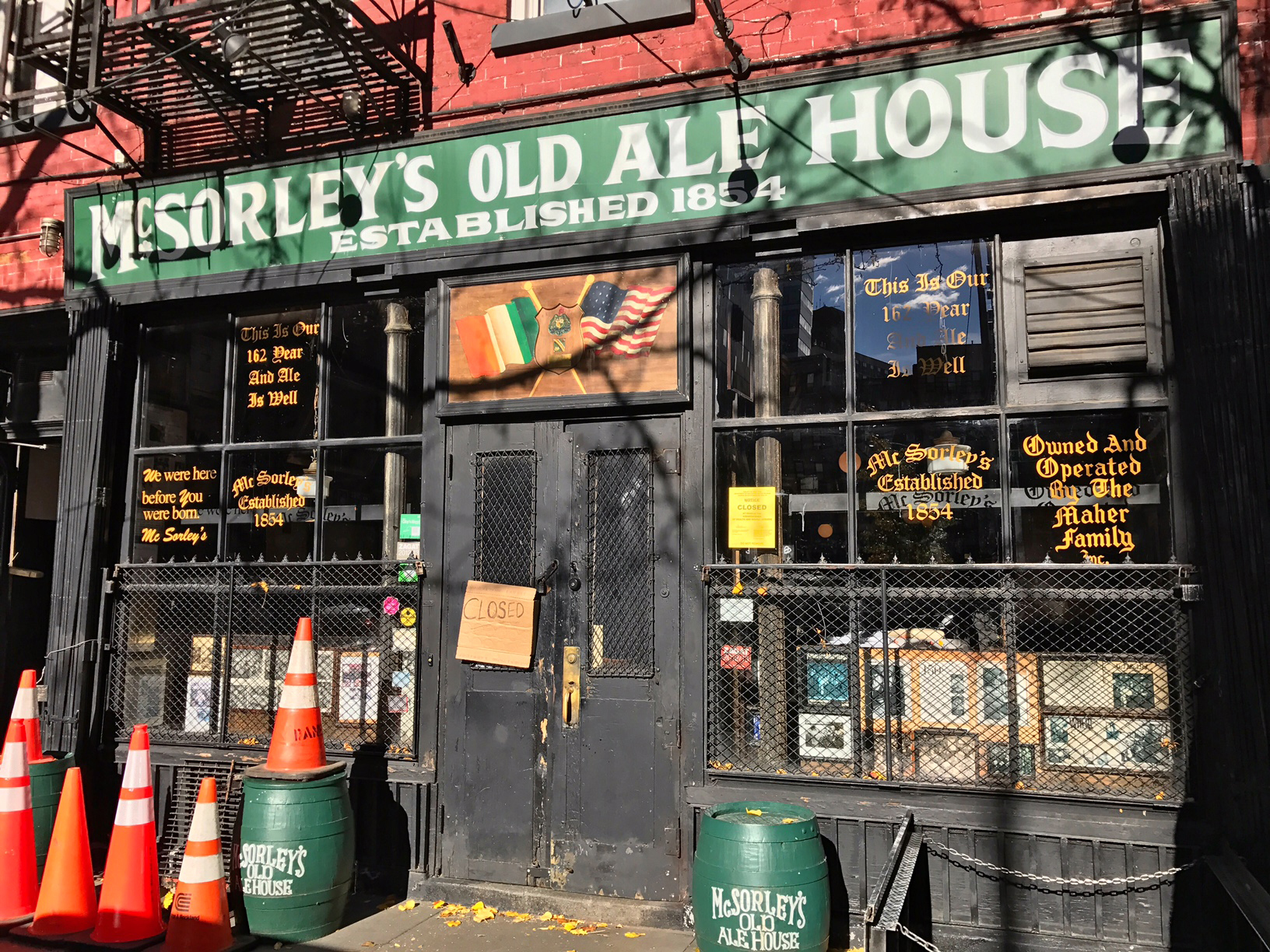
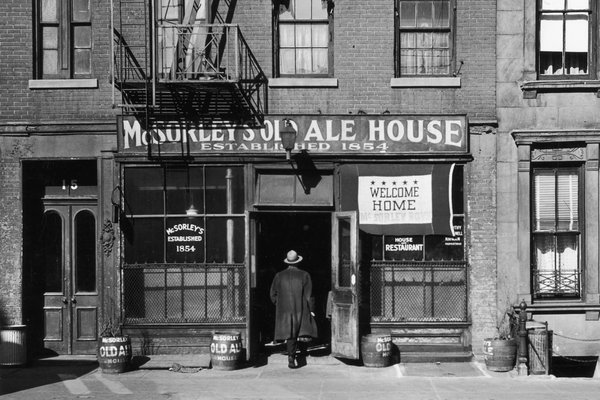
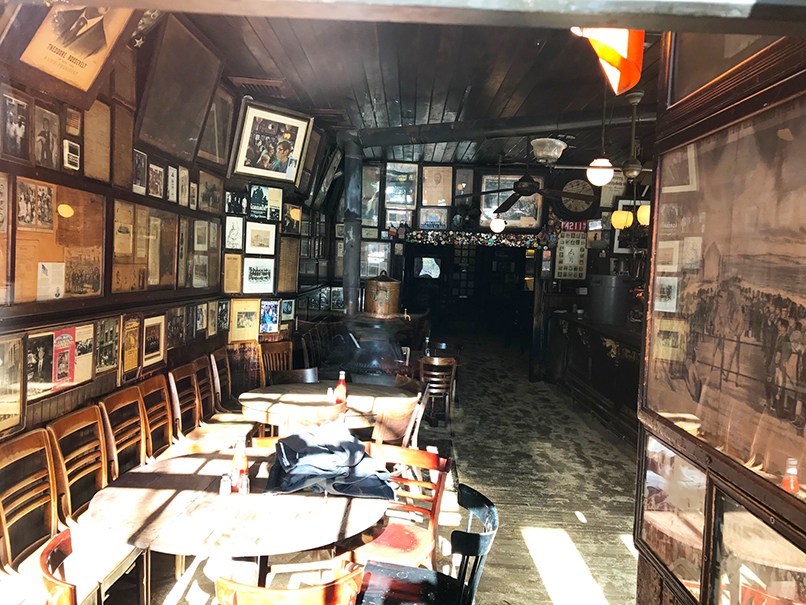
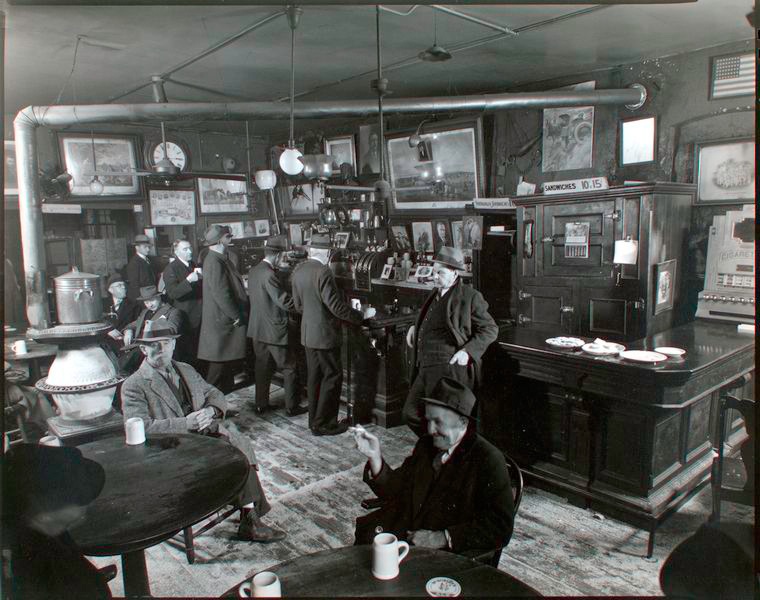 Photo source: Ephemeral New York
Photo source: Ephemeral New York
1Bowling Green Park New York City Wikipedia.
2Journal of the American Revolution
3Museum of the City of New York
4Stone Street Historic District Designation Report
5History of Trinity Church Wall Street